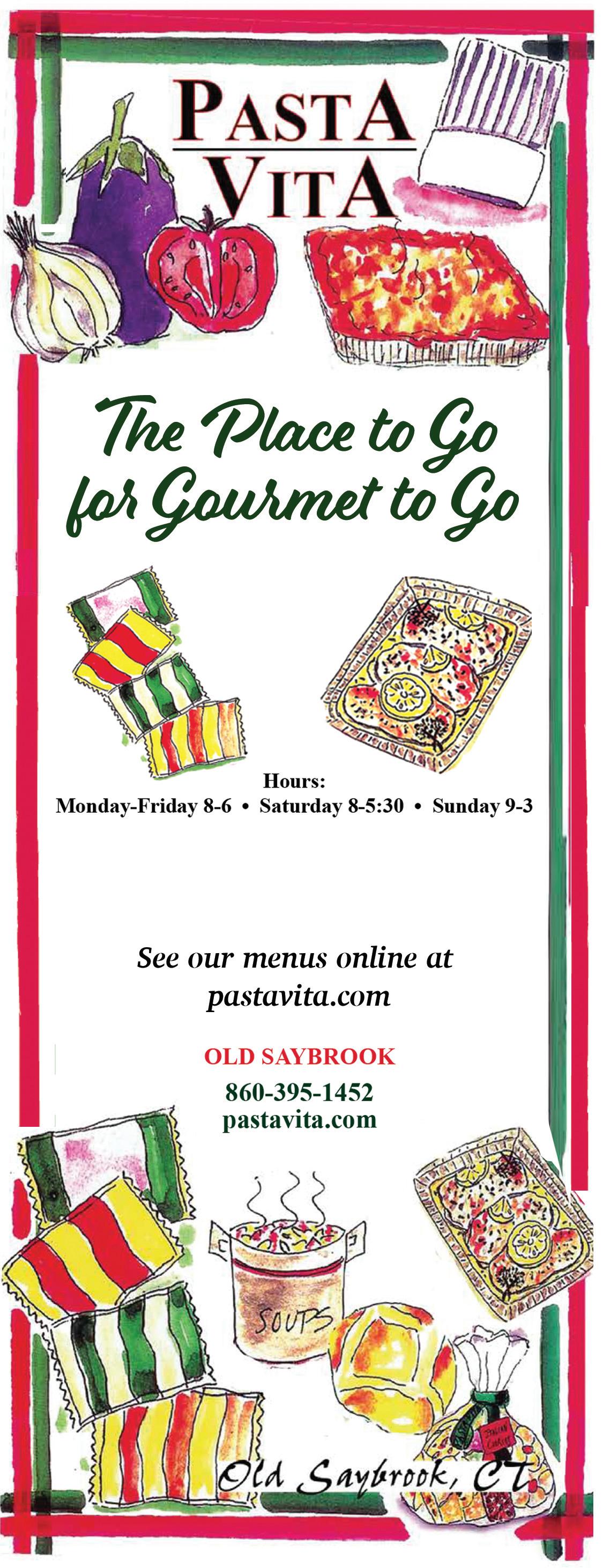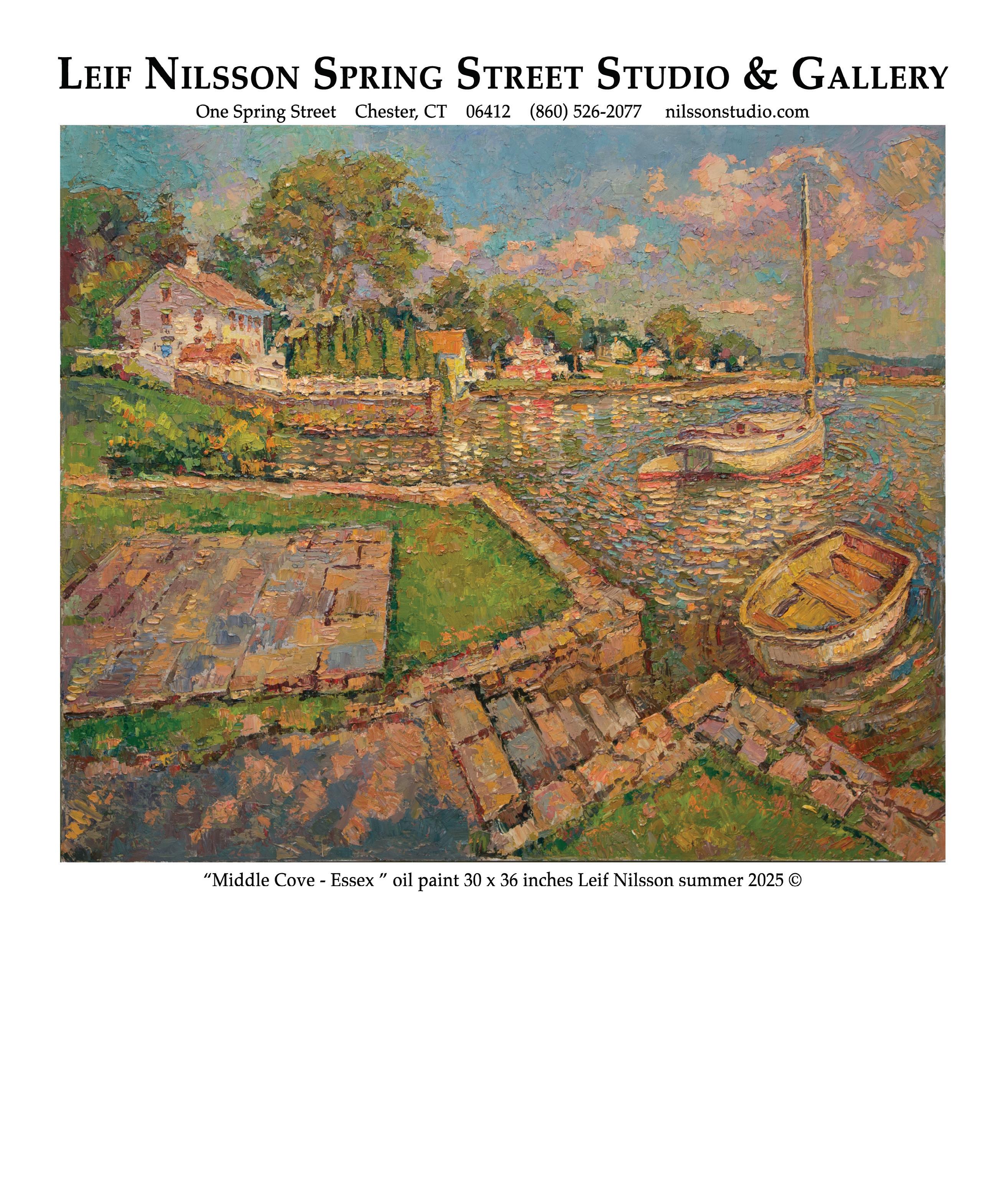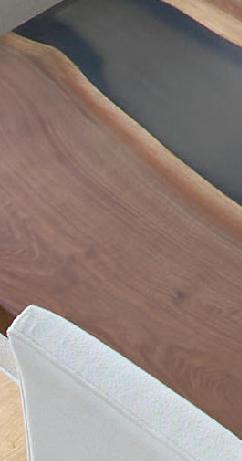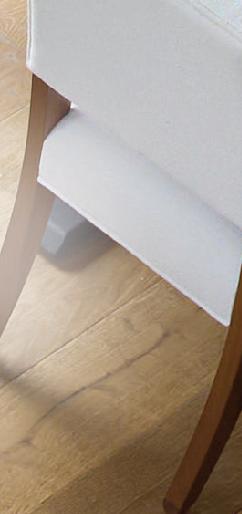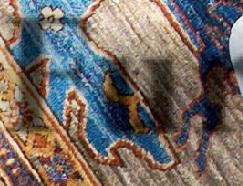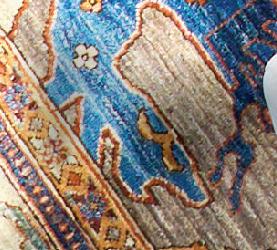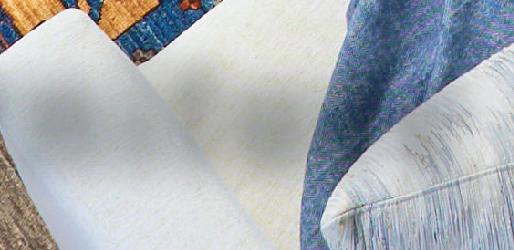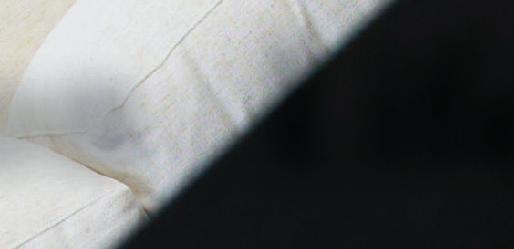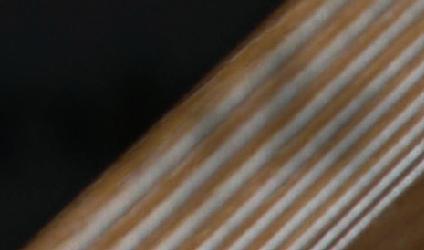






































































































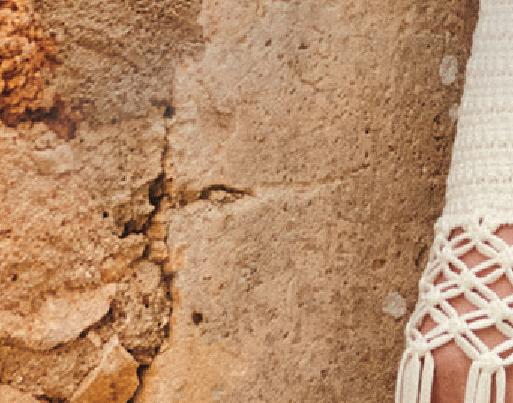


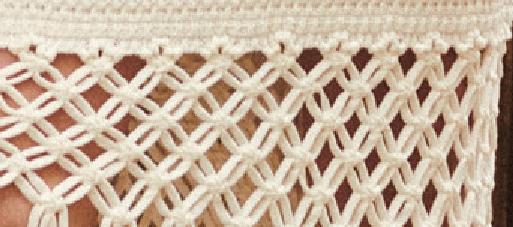





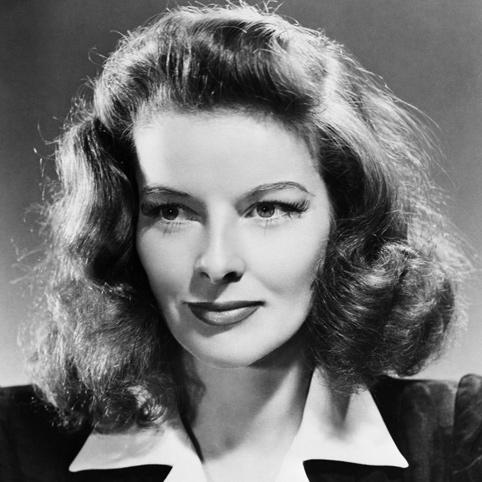
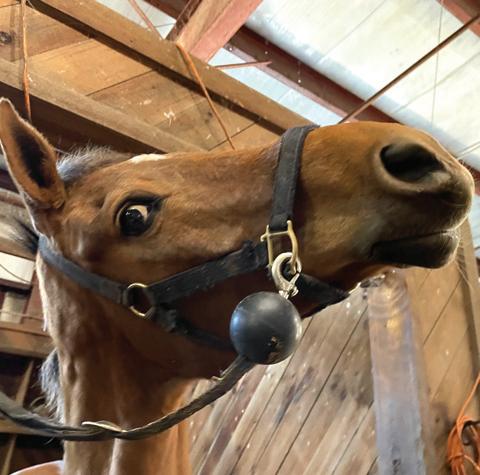
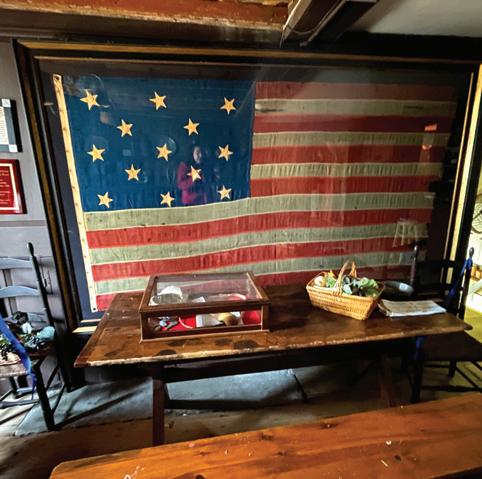
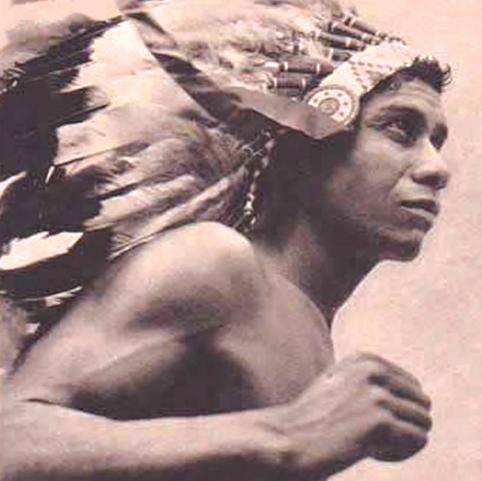

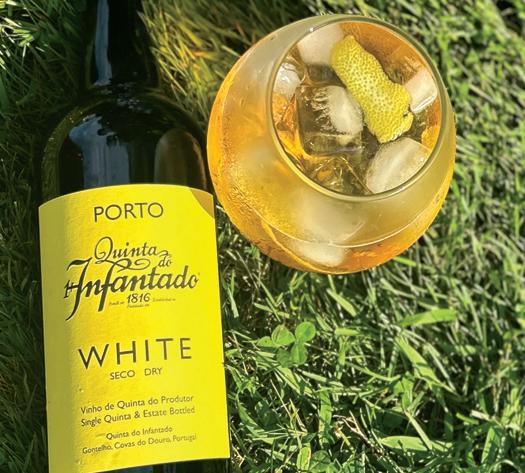
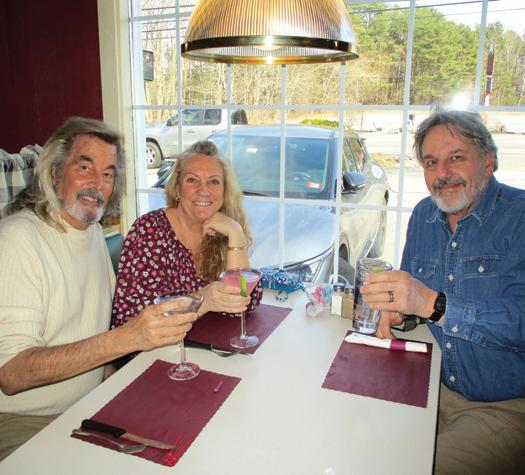
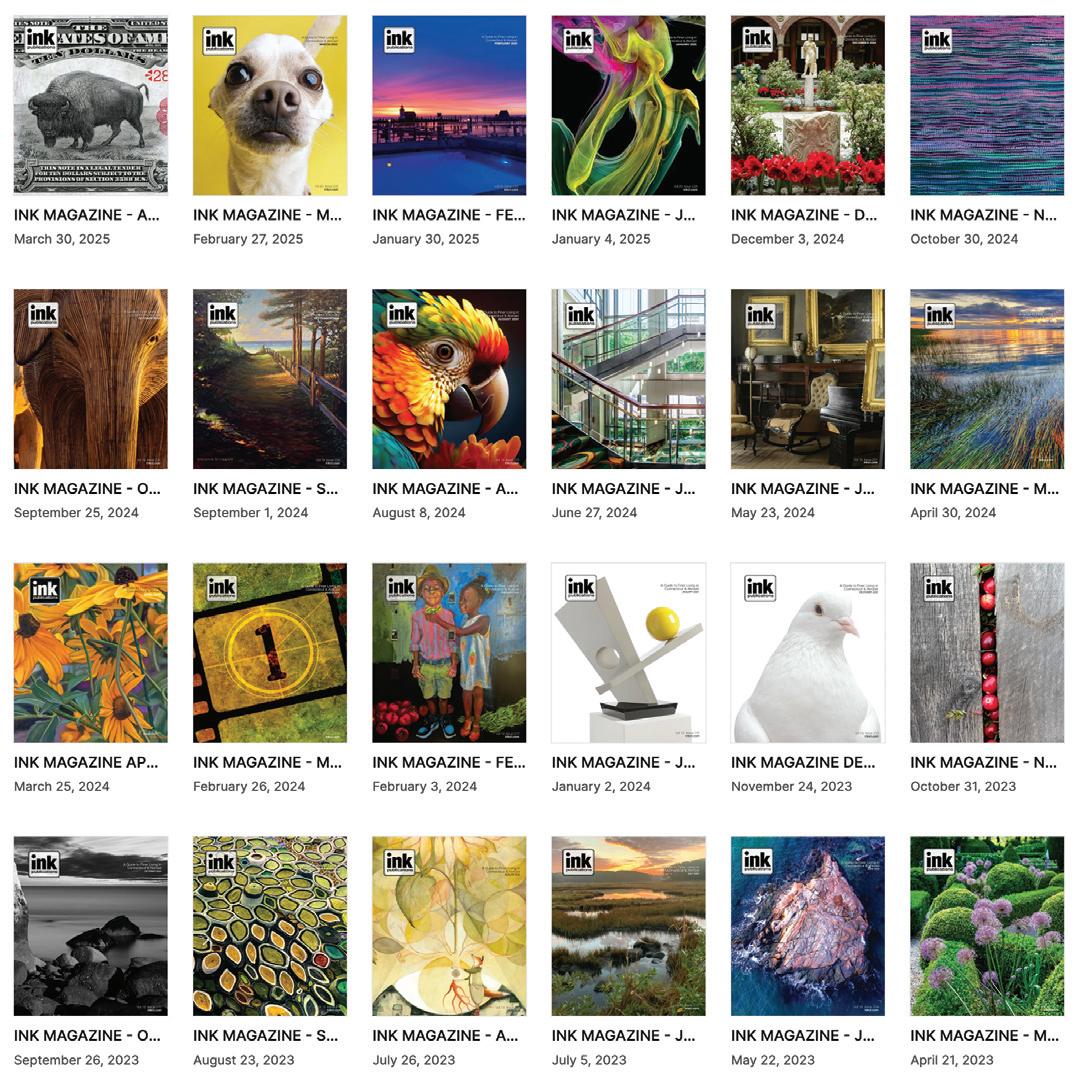


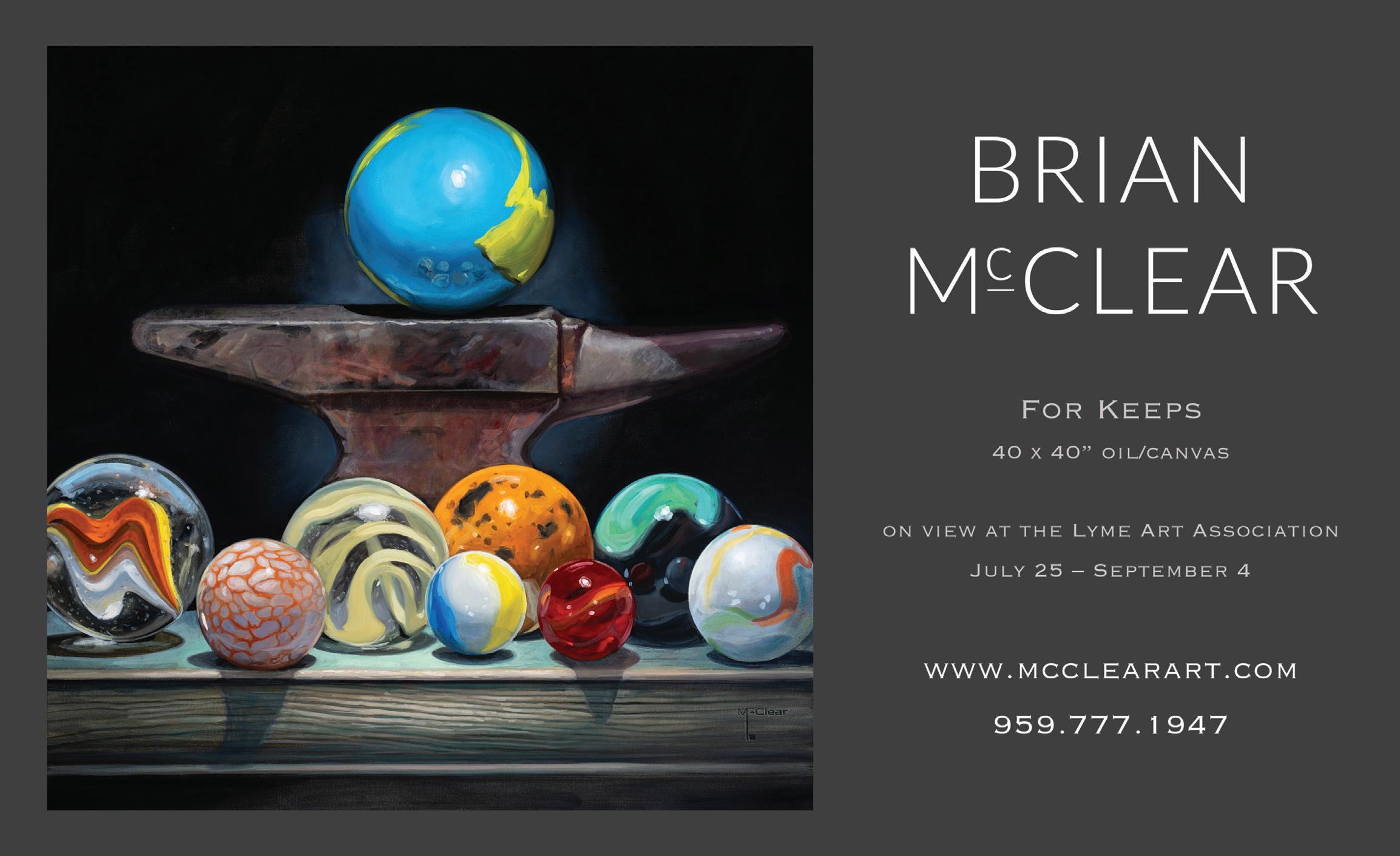

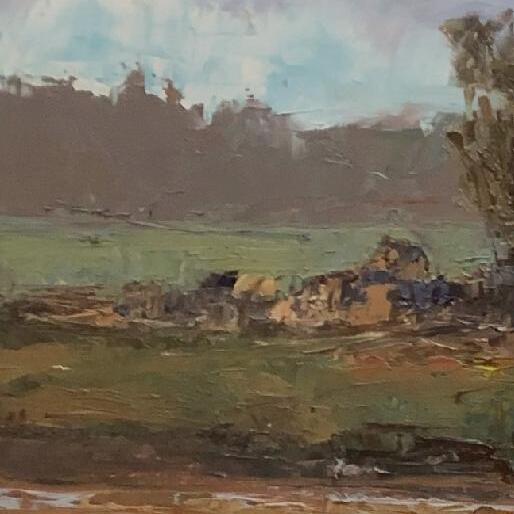








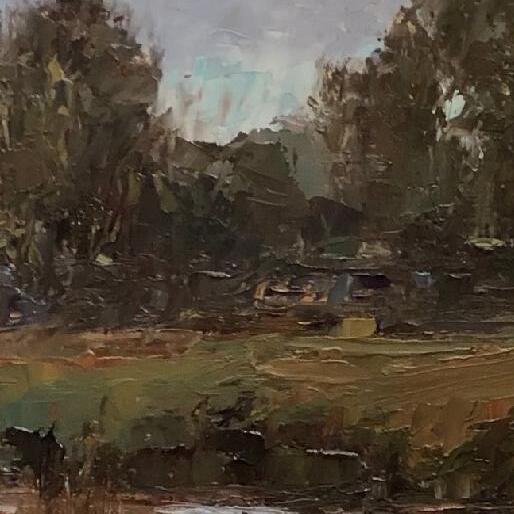





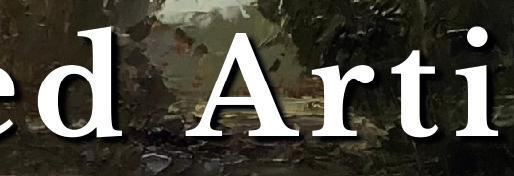
















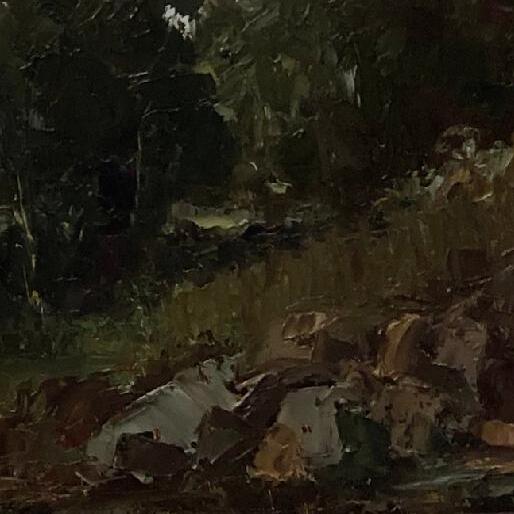



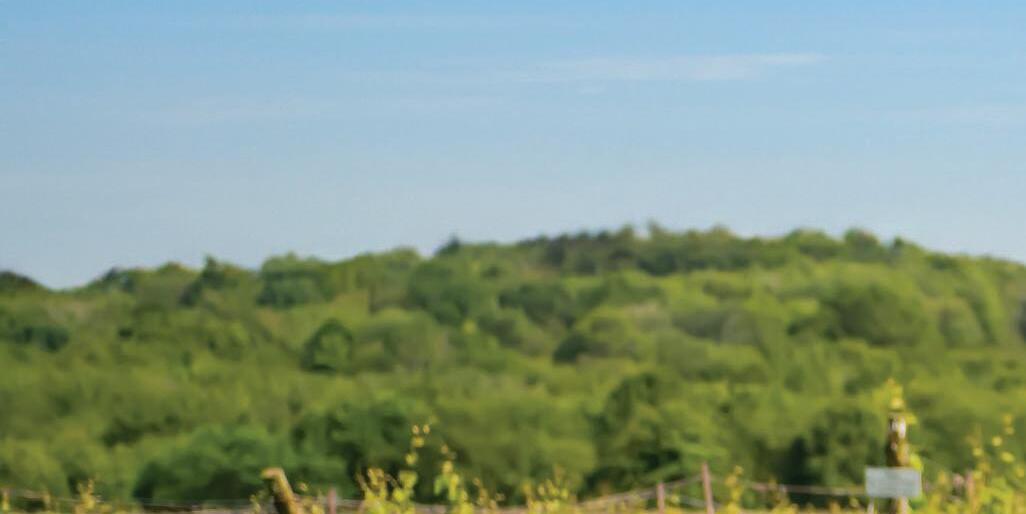
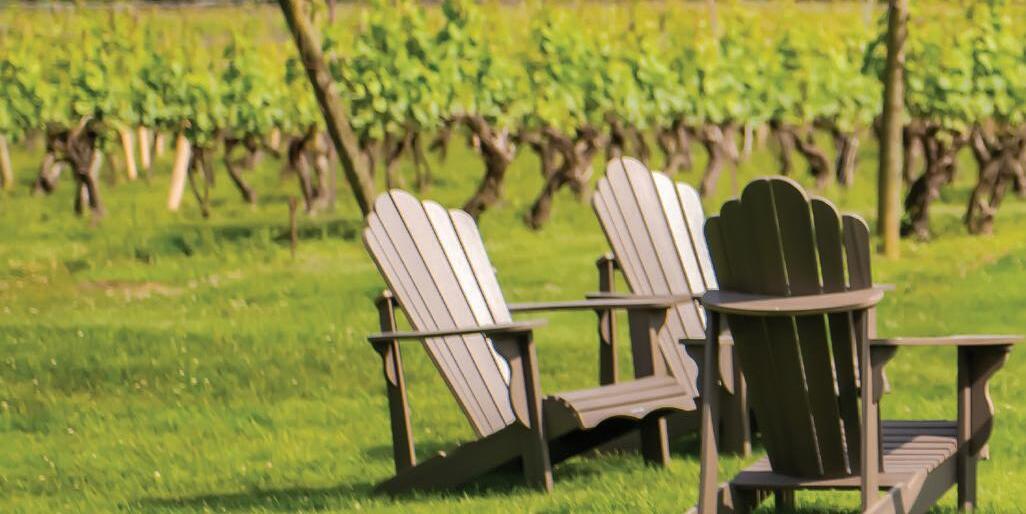


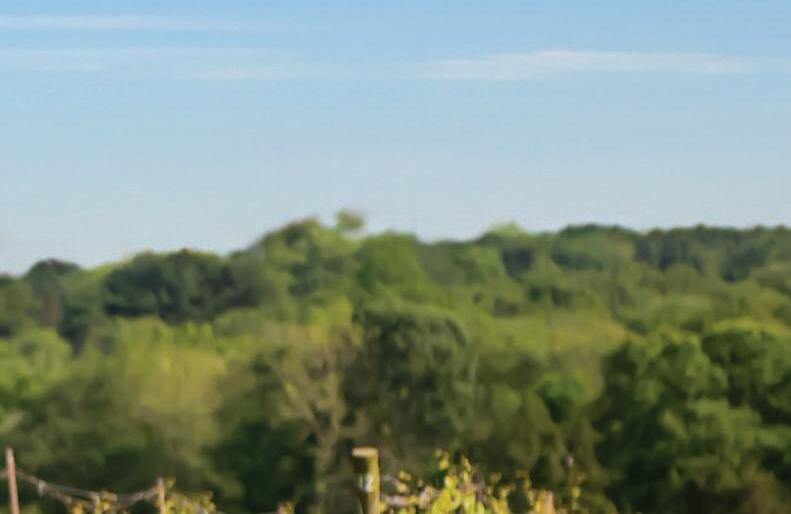



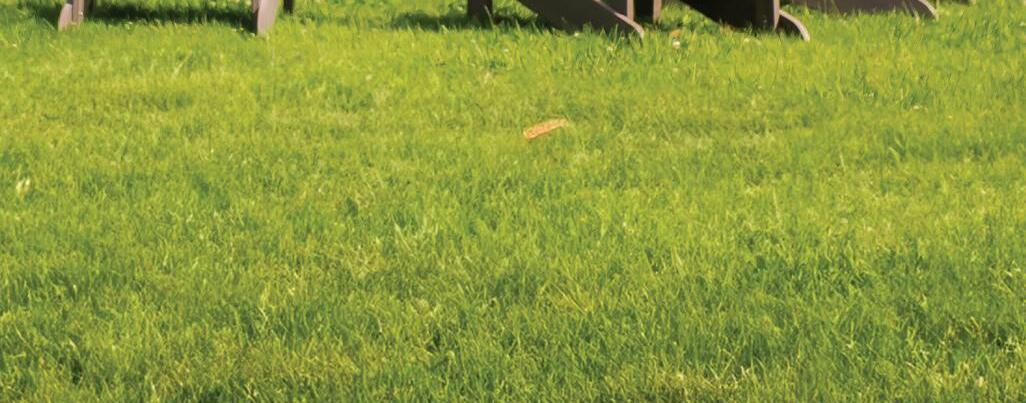






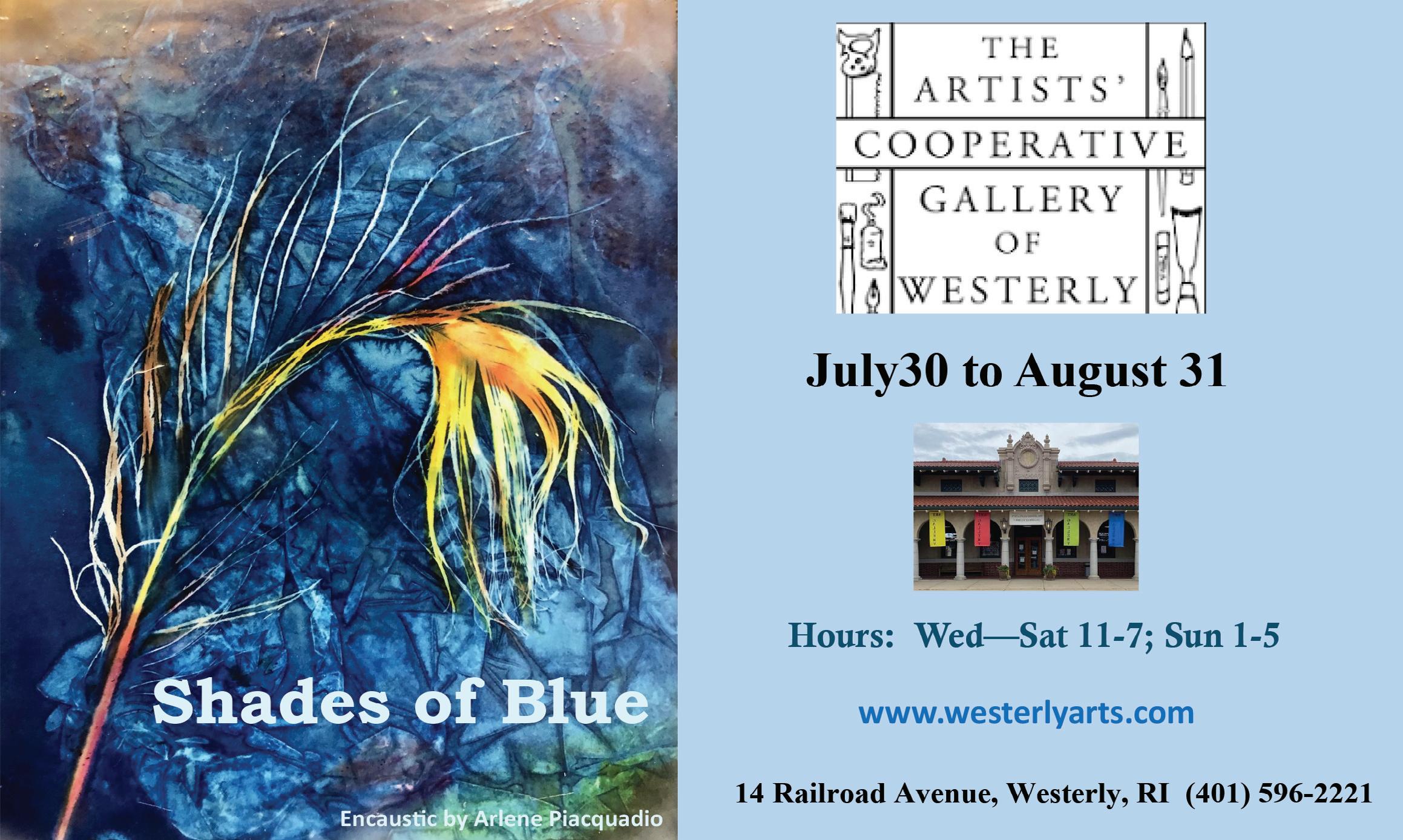
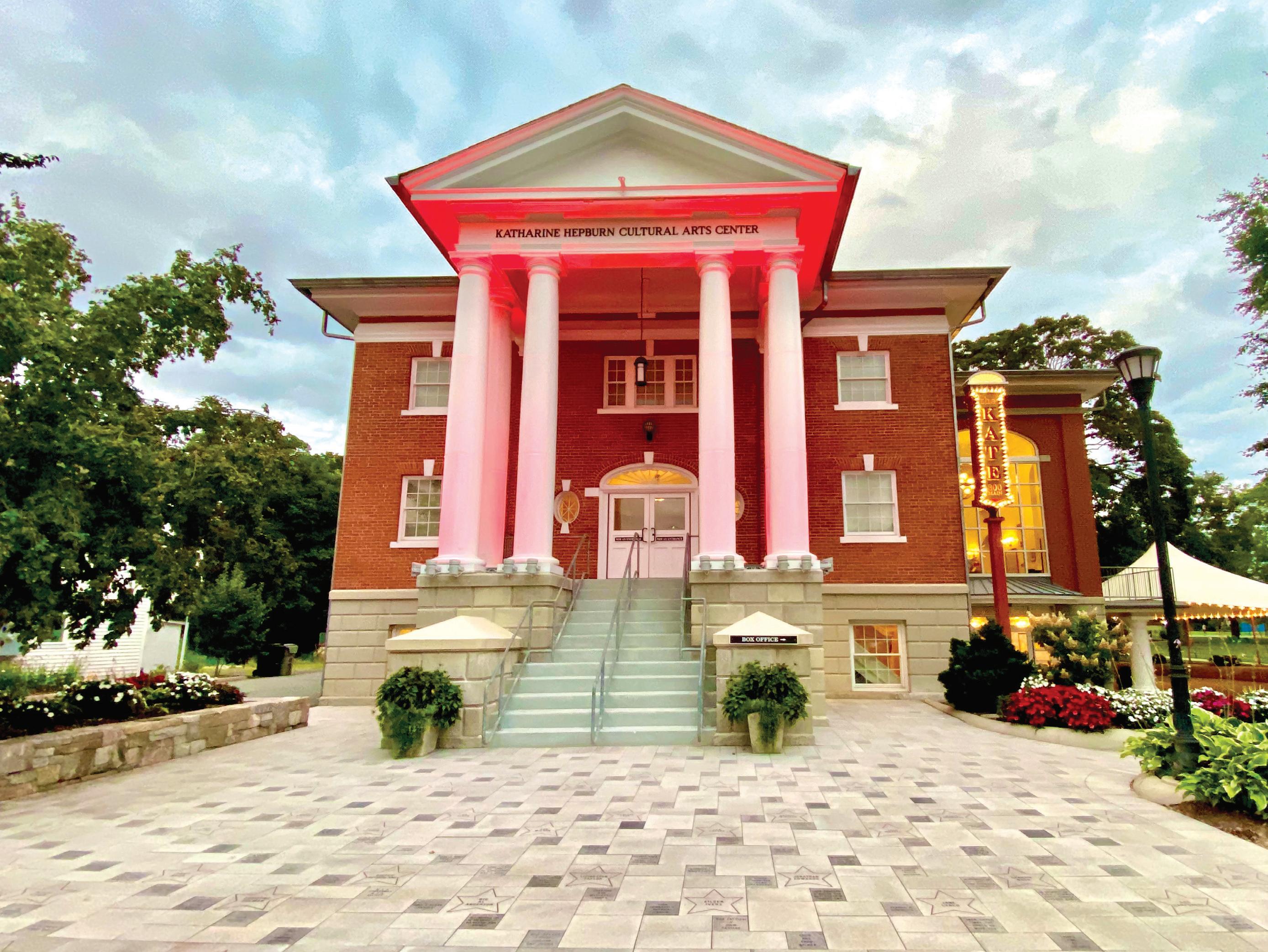
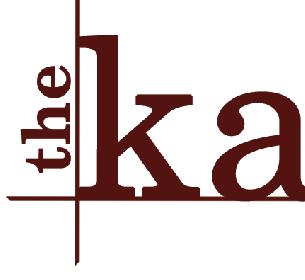
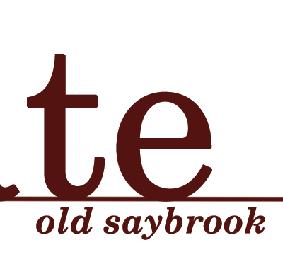
very day in Old Saybrook and around the world they most certainly still do talk of Katharine Hepburn, not only one of the greatest actors of all time but one of the greatest personalities of all time, both on and of y, , the real deal.
f the stage. She was, undeniably
doubt, be pleased to have both definitions ascribed to her bec she was one heck of an actor and one heck of a dame!
eiterate, “I’ve been so lucky
Katharine was a classic Connecticut Yaankee, born into a wellto-do, yet very down-to-earth family in Hartford. She adored her parents and the upbringing they gave her...the values the taught, the freedom they allowed. Her father was a well-resp surgeon who frequently took his children with him to the hos to observe surgeries, even at a young age. Katharine’s mothe was a suffragist, a feminist when few knew what that meant, Katharine and two of her sisters honored their mother’s dyin wish, all three graduating from Bryn Mawr College as had their mother. The household was a socially conscious, liberal one where the parents constantly stressed the importance of speaking the truth, staying in top physical condition (her father built a zip line across the yard!), and always expanding their intellectual reach. When speaking of her parents, Katharine would frequently r y, , y..”
Katharine Hepburn was a classic, a one-of-a-kind, a force of nature, and in every sense of the word, a true “dame.” In the UK, a “dame” is a formal title of honor awarded to women recognized for extraordinary achievements in their field (think actor Dame Judi Dench). In U.S. slang a “dame” is an individual, a stylist of sorts, a very assertive woman. Katharine Hepburn would, no doubtbepleasedtohavebothdefinitionsascribedtoherbecause just so lucky
e than 70,000 adults a mor of 26 shows a month (300 a tional entertainment center f Long Island Sound. The Kate e the Connecticut R right wher ge cove ook by a lar Old Saybr in 1996. Fenwick was set apar -rou Long Island Sound year home in Fenwick since chil of Hepburn who had lov This homage is dedica and “local girl w Kate,” nam heart o en a year , personality named after the feisty actor W jy Wiith this background, you are now ready to delightfully fill in the blanks with a visit to The Katharine Hepburn Cultural Arts Center in the eart of Old Saybrook, known simply as “The r, y, , irl who made good.”
has boasted 3500 event
icated to the life and career oved the family summer hildhood, swam in und, and retired there art from the town of e over a causeway River flows into the e is a multi-generafeaturing an average a year), entertaining s and childr r, , and ents to date since its opening

in2011!
in 201
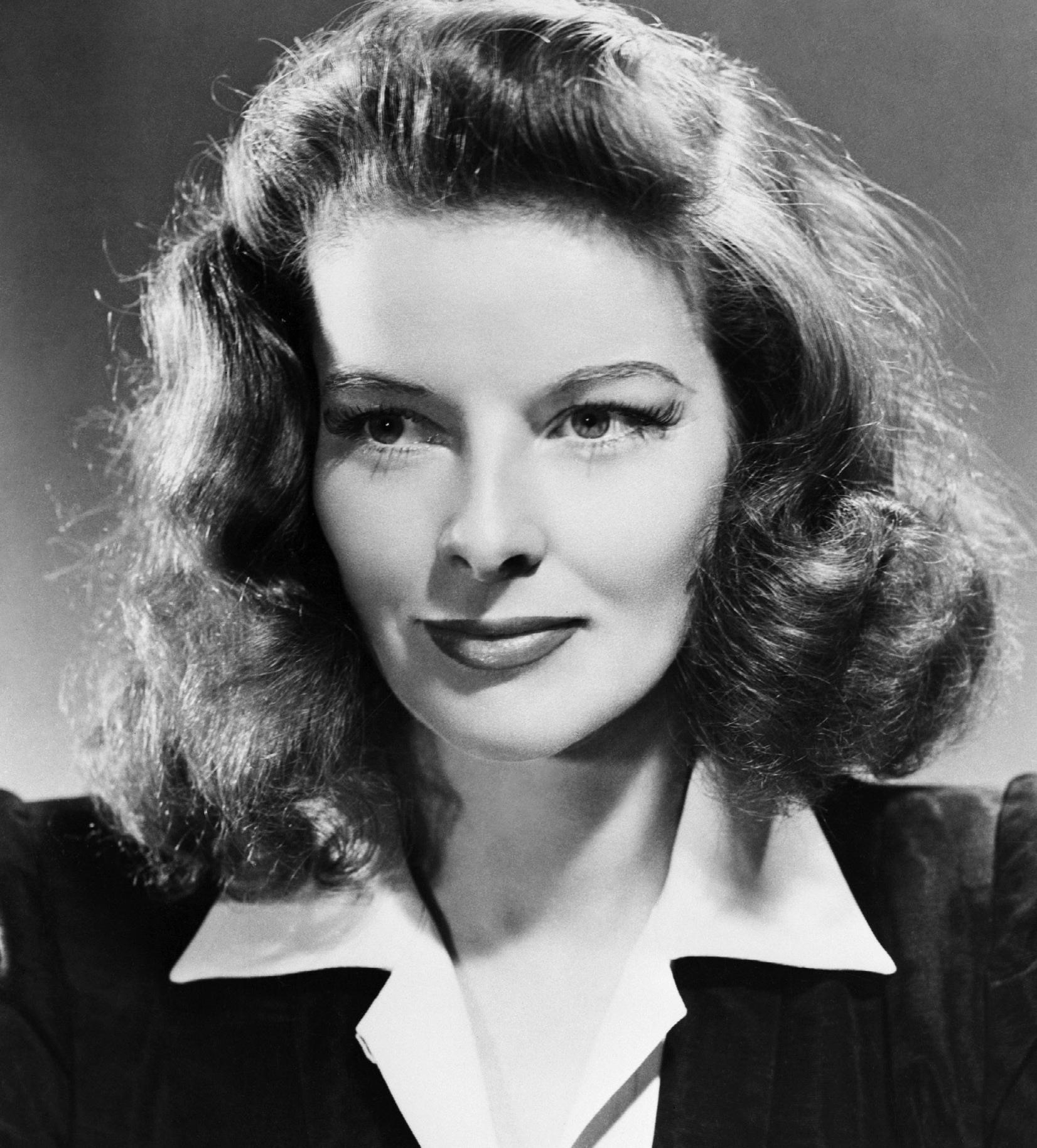
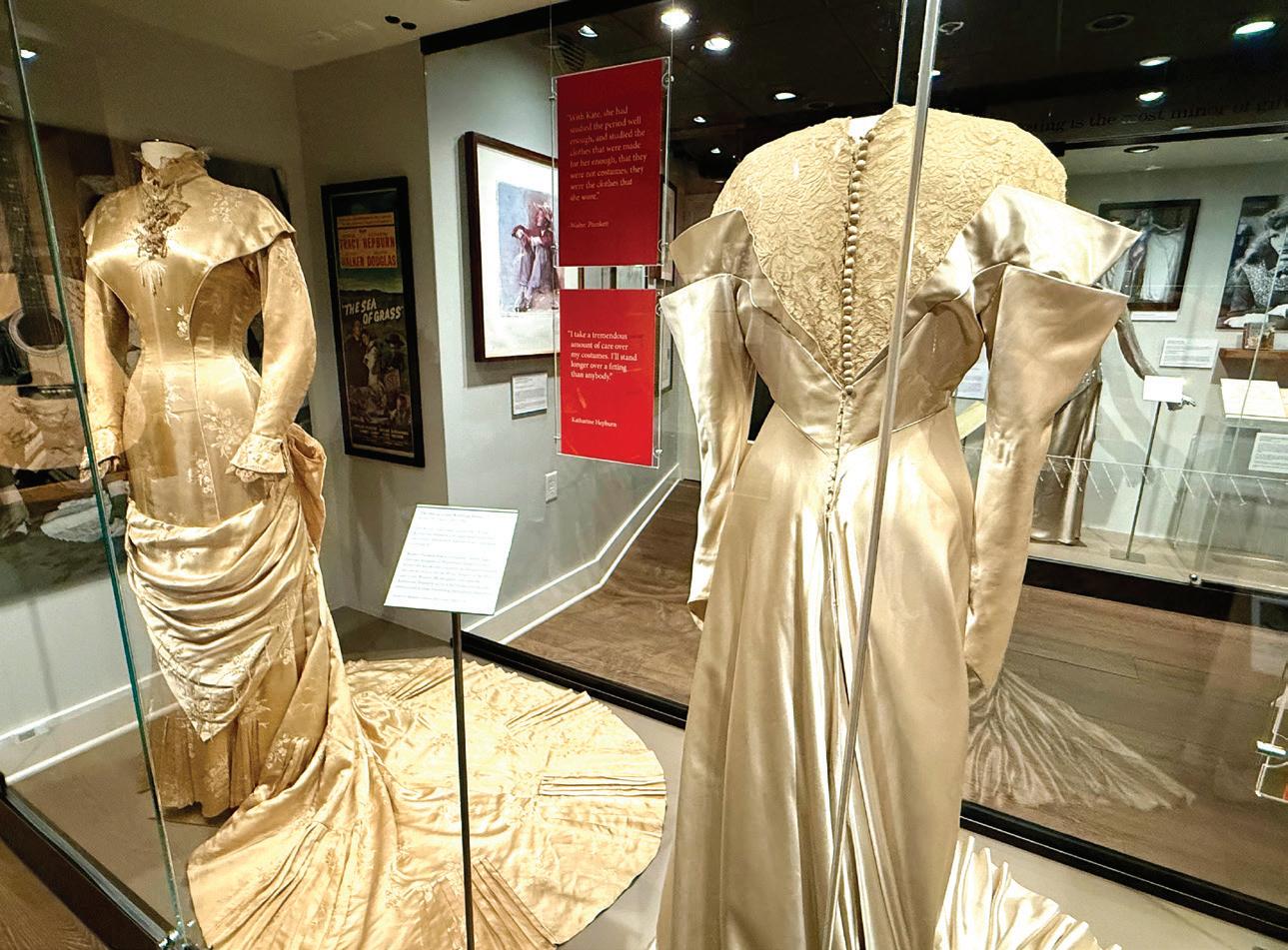
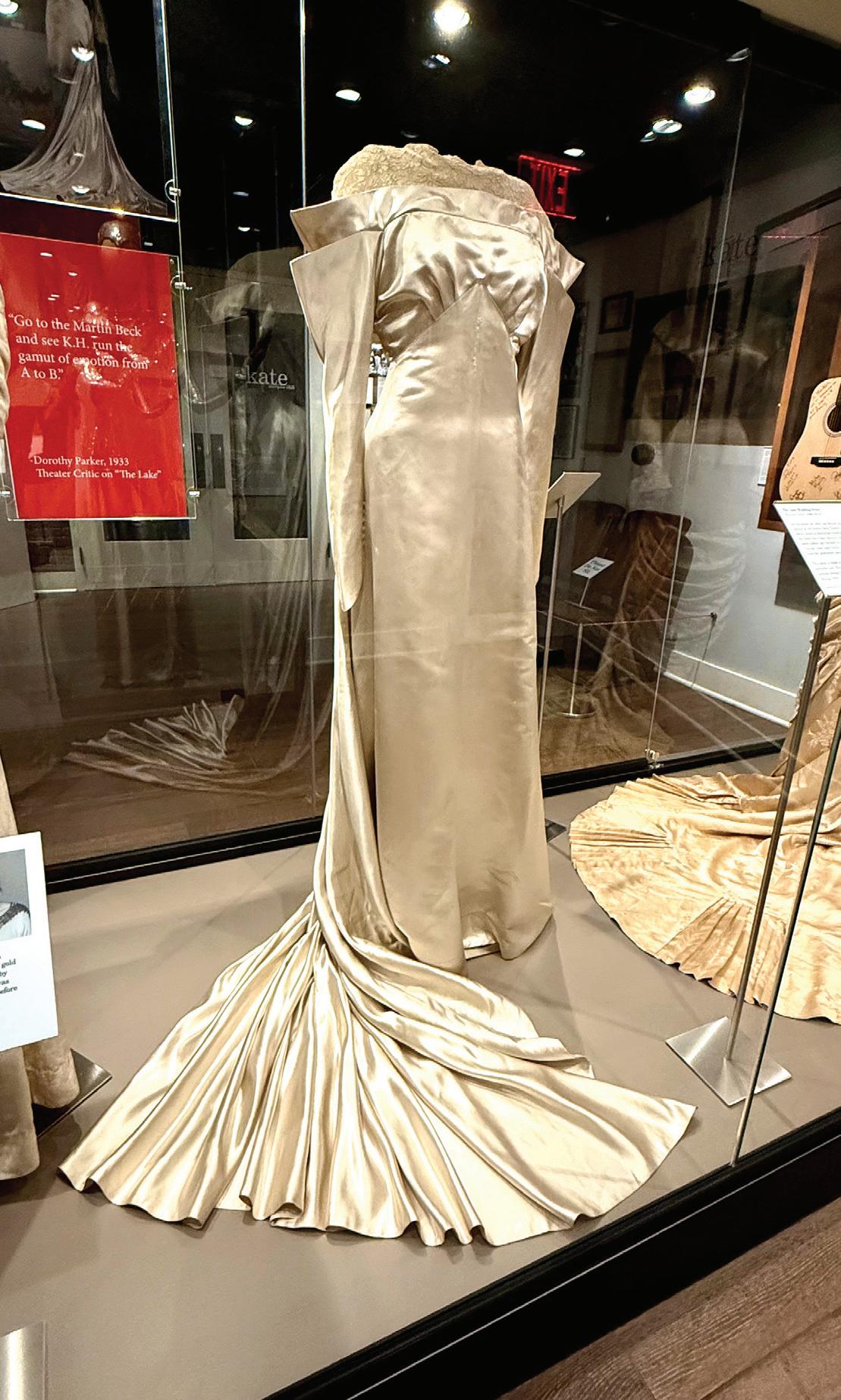
But you must first begin any visit to The Kate at The Museum because this sets the tone, gives you a solid backstory, and creates an impending sense of excitement for what lies ahead. Museum may not be the “right” word because it conjures up so many words and images that do not apply here. Words like “old,” “dusty,” and “dark,” are all stereotypes of what many a museum has been in the past. This, however, is a space of celebration, laughter, individuality, athleticism, and delicious preservation.
Any misconceptions you have about a dark and dusty, museum that smells like grandma’s attic are blown away the moment you enter the space. You are immediately greeted by a veritable marquee of Katharine, her face smiling knowingly at you from a background of wallpaper created out of an actual letter written in her own hand on her personal embossed stationery. It is brilliantly accented by theatrical lighting that makes the image pop, and you’ll instantly know this is not just any museum.
The exhibits are well-defined by category incorporating Family, Athleticism, her life at Fenwick, Early Career, Later Career, Special Exhibits, Spirit of Katharine Hepburn Award, and the History of the building from its initial construction in 1911, its early years as a community theater and gathering place, to serving as the Old Saybrook Town Hall. Then in 2009, restoration was completed for perhaps its finest incarnation allowing for the opening of The Kate.
Here’s something you absolutely do not want to miss, “Here Comes the Bride.” On display right now until the middle of November is a very special museum acquisition. It’s Katharine’s wedding dress, the one she chose to wear in 1928 when she married Ludlow Ogden Smith. They were married in a simple ceremony in her parents’ living room in Hartford, the officiant being her grandfather, Reverend Sewell Hepburn. The dress came from Babani, a Parisian fashion house, and its style was described as “quintessential Kate.” Unlike the wedding gowns of the period, this was a tea dress: simple, comfortable, yet it bore intricate detailing. It is fashioned from silk velvet and metallic embroidery freeing and delighting Katharine from having to wear a corset and offering her great comfort much like the wide-leg trousers she frequently sported. Within the same exhibit is a dress worn in a short-lived Broadway play, “The Lake” and another from the 1947 film, “The Sea of Grass.”
To complement this exceptional exhibit there will be a museum talk given on Sunday, August 17th at 1PM: “From Screen to Seam – Preserving Kate’s Story.” It will be given in tandem by Jean Druesedow, Director Emerita of the Kent State University Museum, and Claudia Iannuccilli, owner of Studio Textile Arts and Conservator Emerita at MFA Boston. Druesedow oversaw the acquisition of the Hepburn collection of costumes and everyday wear while Iannuccilli is a key partner of the Katharine Hepburn Museum preserving the costume collection. Tickets are available for either in-person or streaming by contacting thekate.org.
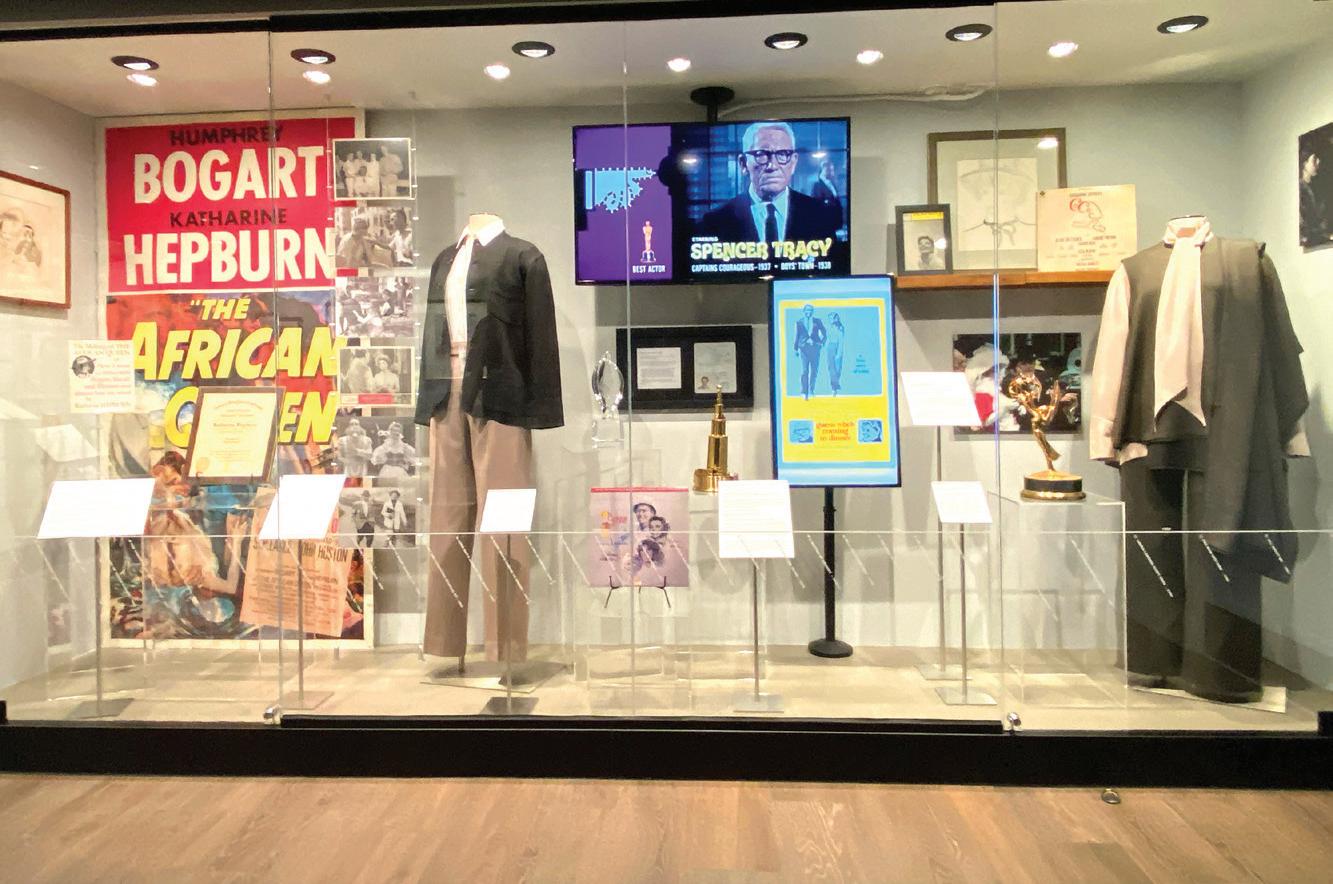
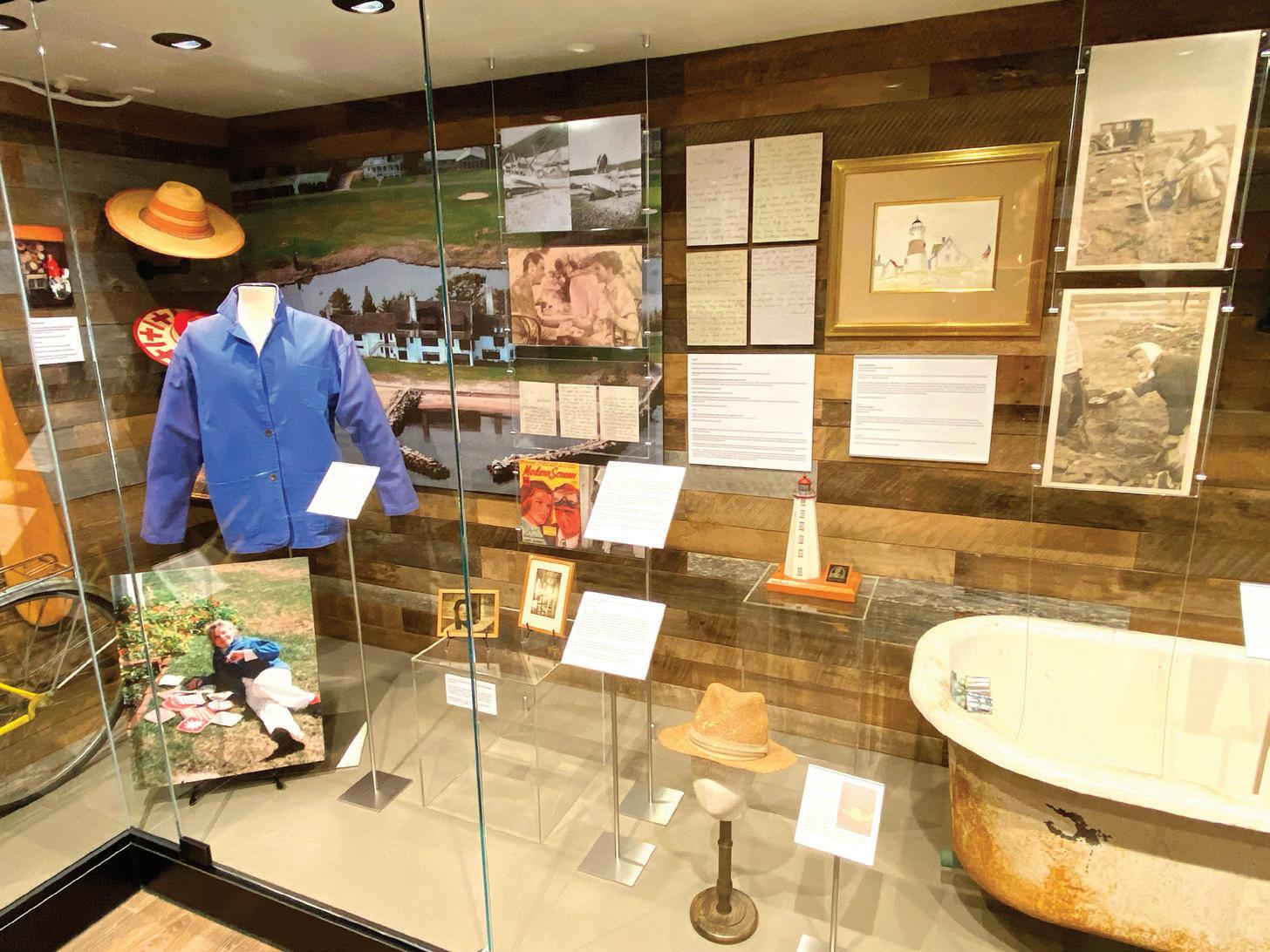
There is never a shortage of activity at The Kate. The 285-seat theater has performances that range from chamber music and opera to folk rock, classic films, lectures, comedy, cover bands, and plays. It is truly a community treasure and a hub for entertainment year round.
Summer means camp all across the country, and The Kate features an opportunity for area youth to immerse themselves in live theater. In just a few days, young people ages 5-10 get their first taste of what it means to dance, sing, move safely, and create a skit all in a week’s time, culminating in their own live performance.
For those ages 10 to 14 who want a “different” yet memorable experience, The Kate offers a one-day 3-hour interactive workshop led by producer, Kayleigh Joseff that will allow young participants to explore how music, storytelling, and empathy come
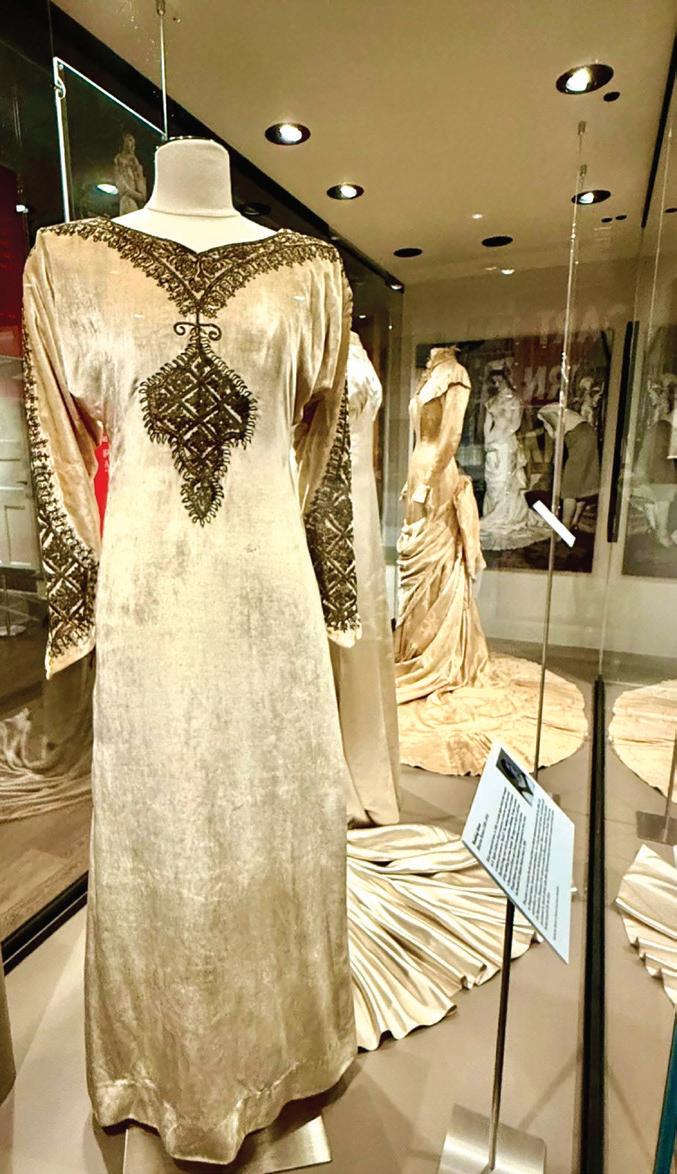
together to inspire change. Based on Stand UP & Speak OUT! A production performed annually at The Kate, this workshop will motivate, challenge, and whet their appetite for even more.
Save the Date! September 14th Jane Fonda will be honored with the 2025 Spirit of Katharine Hepburn Award at the 14th Annual Gala. More information may be had at: thekate.org or by calling (860) 510-0453.
What makes a legend? A legend is someone who leaves behind an indelible and unforgettable impression. They touch lives, they’re remembered, they’re cherished. There are many types of legends in this world. Some are famous, some are not, but one thing is certain, they are all original. Undeniably, Katharine Hepburn was both in her professional life and in her private life an original. An original Connecticut Yankee. An original outdoorswoman. An original in how she lived and whom she loved.
Katharine Hepburn was and will always remain a legend. Legends should not be revered, but studied, appreciated, and respected. Yet another reason to visit The Kate and take in the very essence of this woman embodied in The Museum. It’s where you begin, and where you’re likely to return each time you come to a performance. The more you see and learn you’ll realize that the life and spirit of Katharine Hepburn did not die. That’s why it’s celebrated so accurately in this extraordinary museum open Tuesday-Fri-
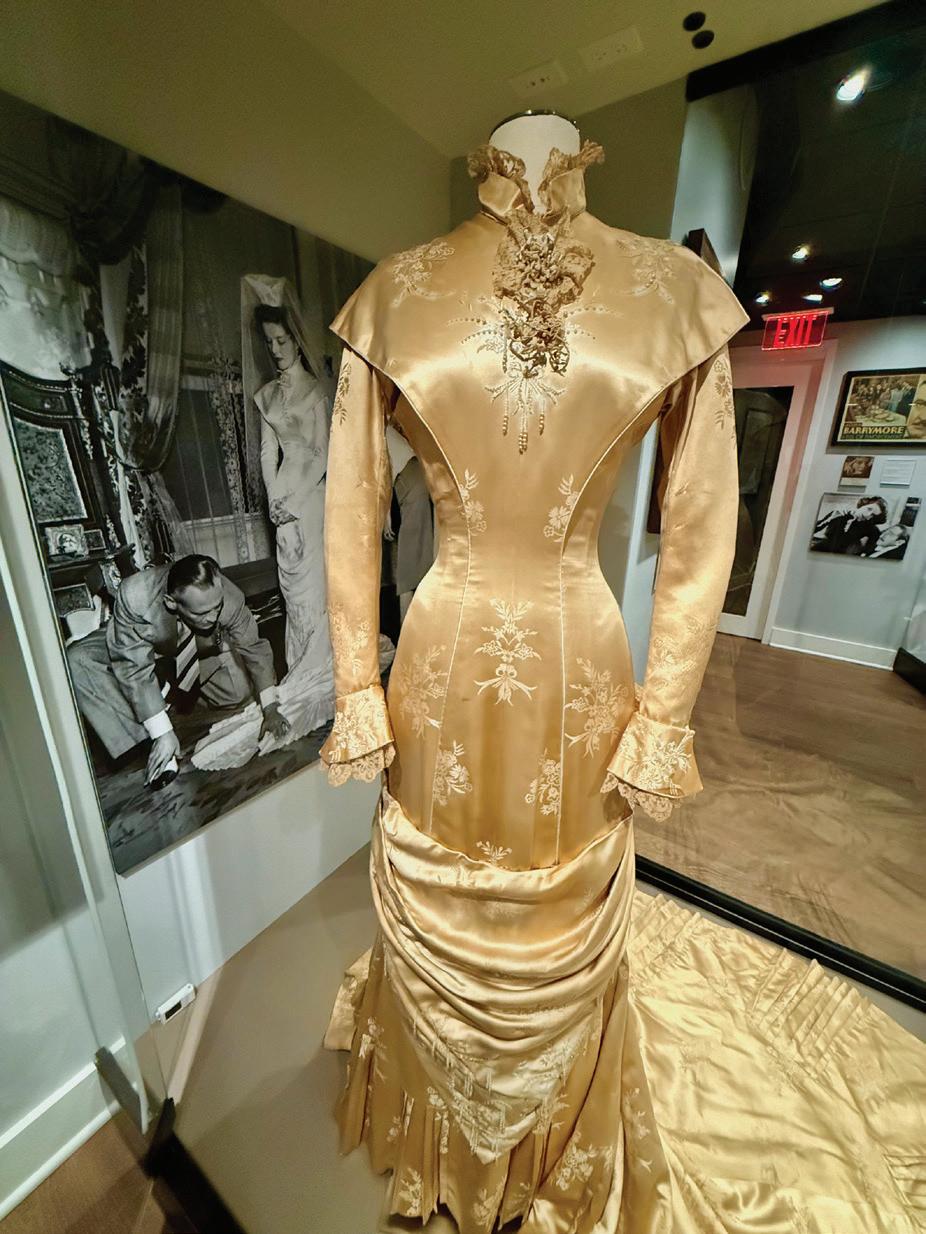


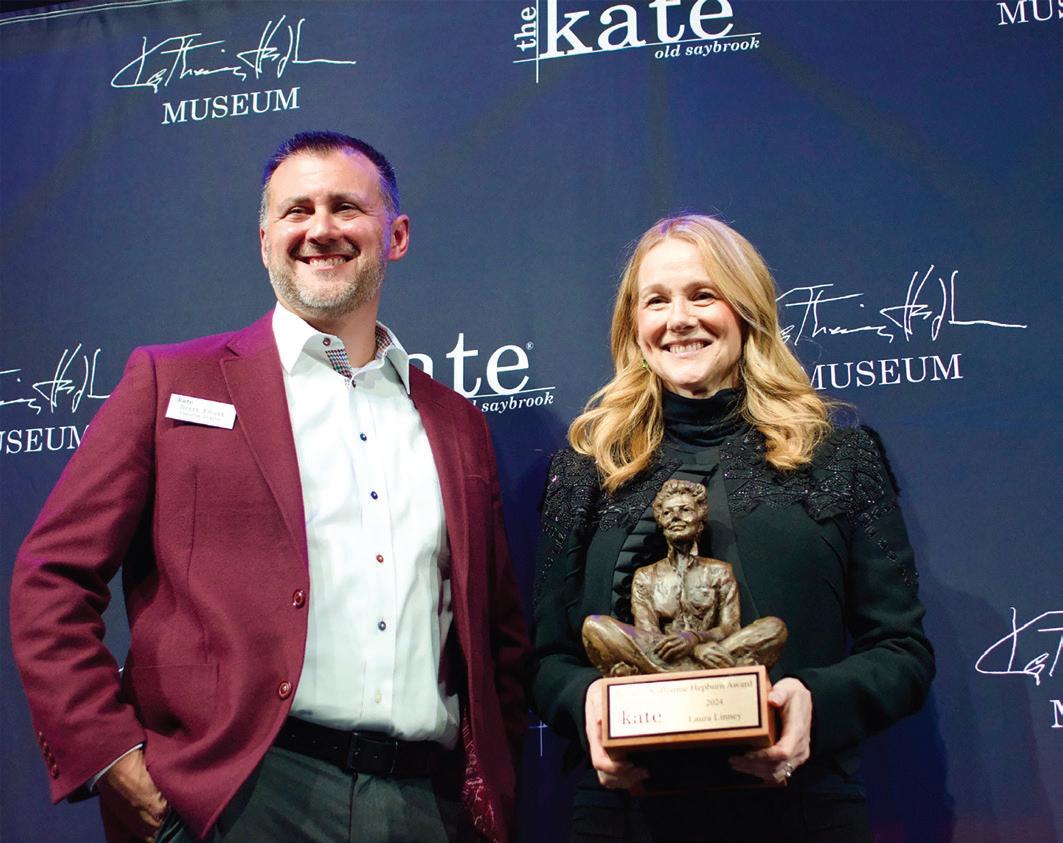
d10AM4PMithdditilh
day 10AM-4PM with additional summer hours through August on Satur y, , Noon to 4 PM. Because patrons can never get enough Katharine, the museum is also open one hour prior to all performances for yet another look.
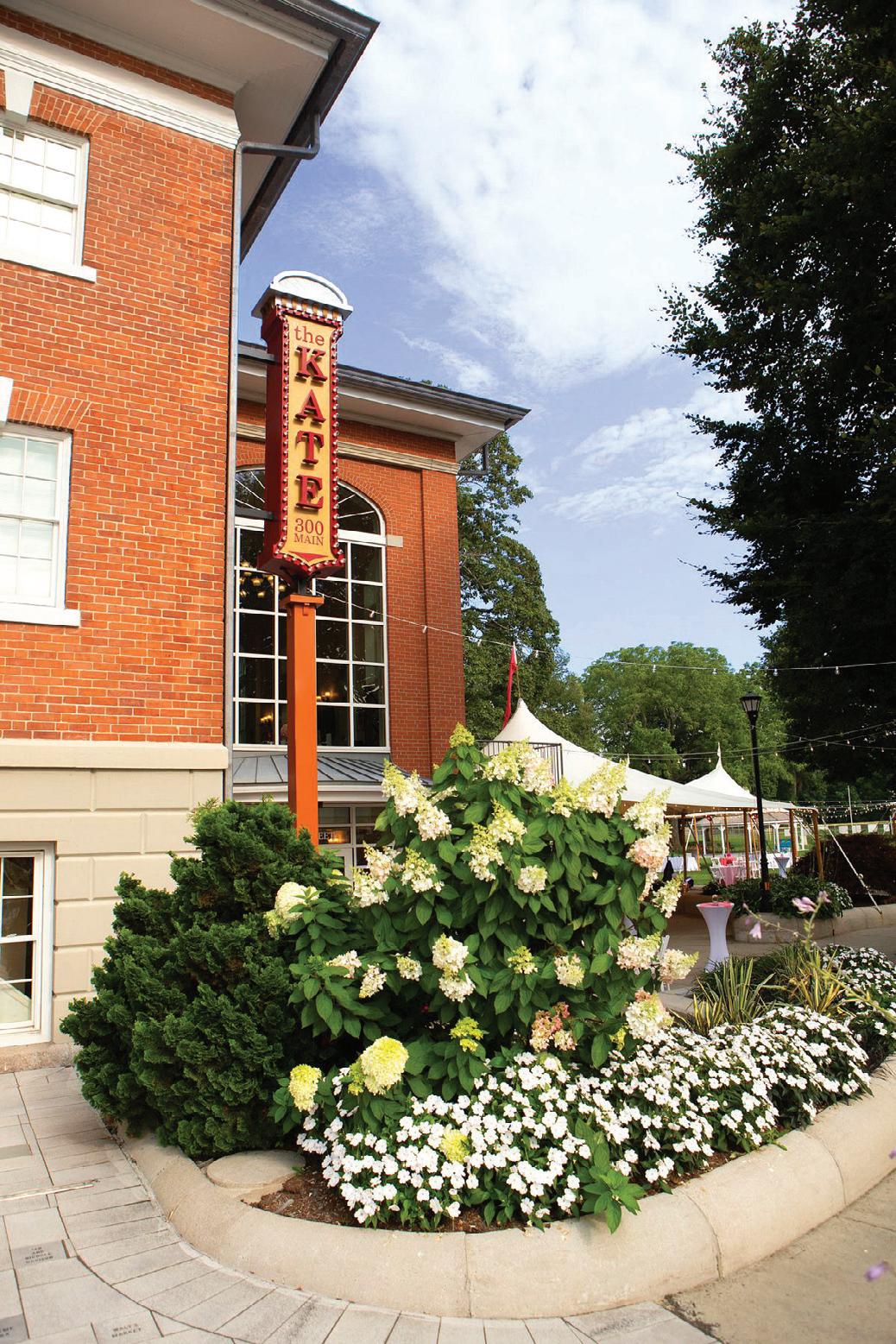
she lived her life her way day and Sunday
Make certain not to miss a visit to the museum to learn about the woman who was always a classic, whether at home in Connecticut or on the big screen worldwide; a dame everywhere she went, and nothing less than highly interesting because y.
“Life is to be lived,” Hepburn believed. “If you have to support yourself, you bloody well better find some way that is going to be interesting.”
TheKateislocatedat300MainStr
downtown Old Saybr
reeet right in the heart of roook
www rg g (860) 510-0473
.thekate.or
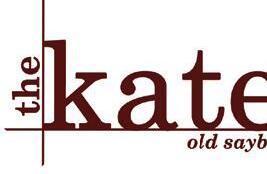

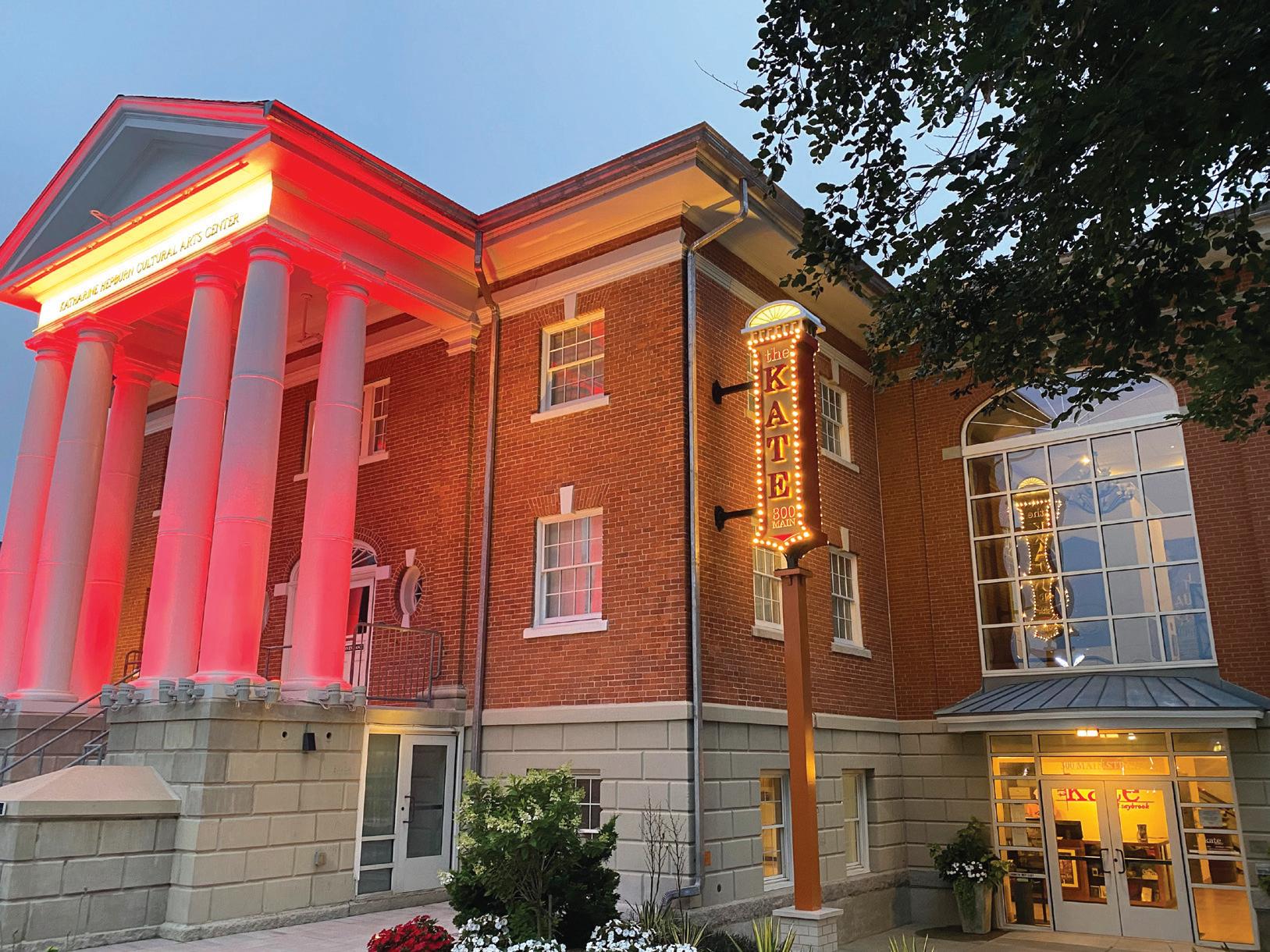




















































































































































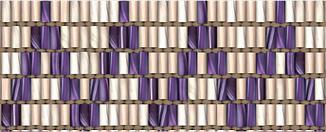


















Painting with intensity and a sense of purpose, David J. Marchi produces energetic and bold abstract paintings that document his deeply personal journey of artistic transformation.
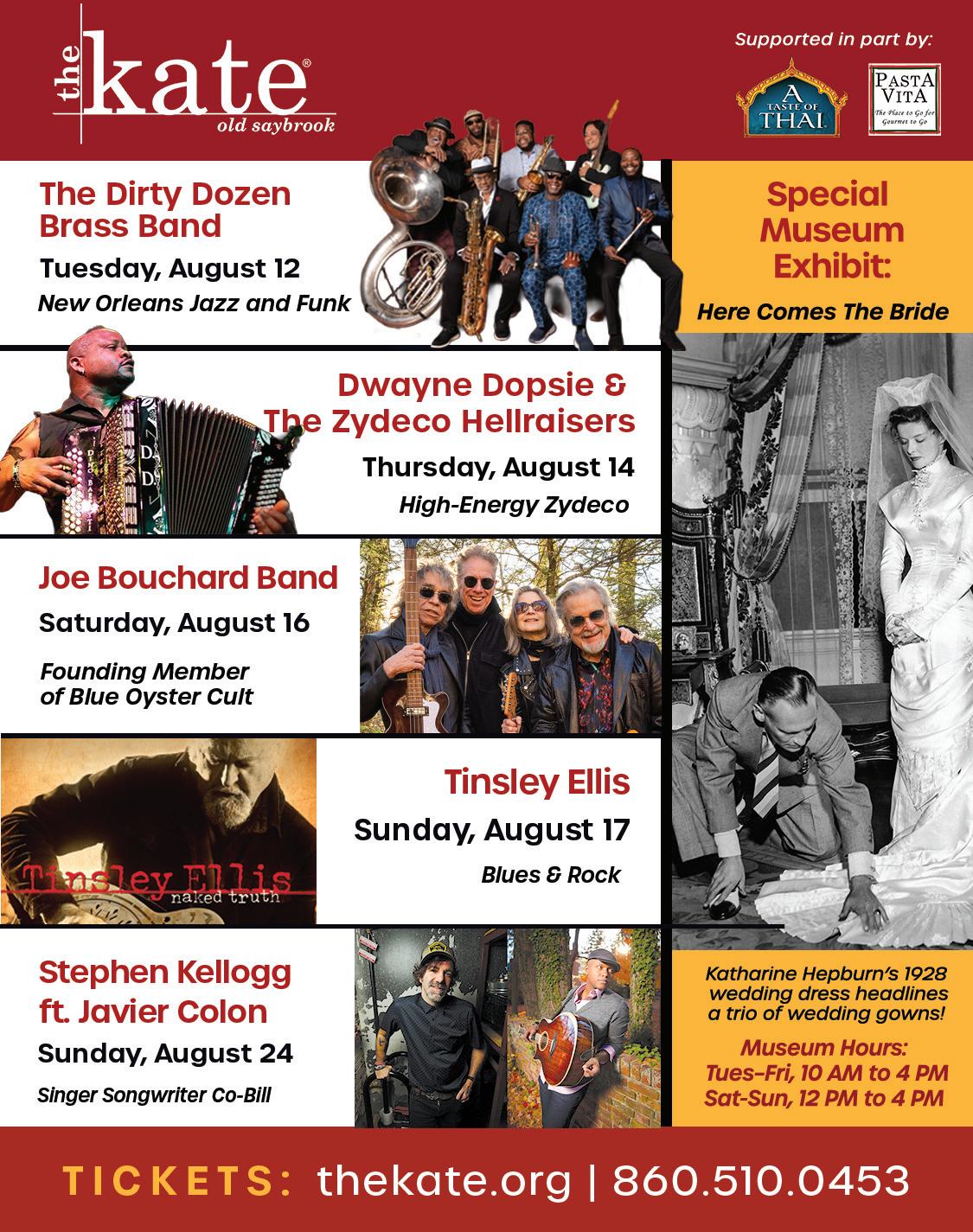
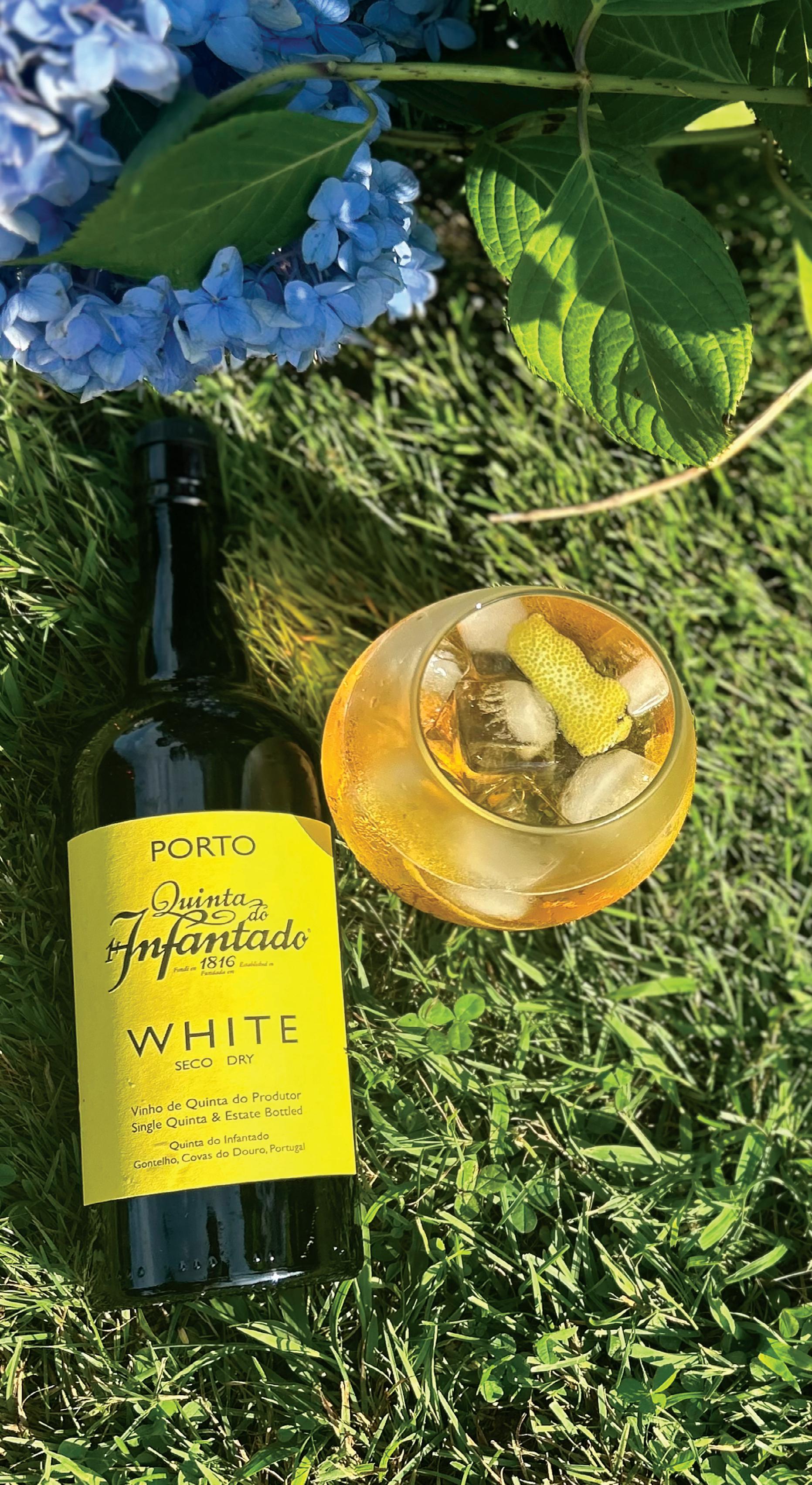
As you might imagine, these articles in INK are written the month before they are circulated, so, timing being what it is, I am writing this month’s piece around the anniversary of the loss of a dear friend a few years ago. In homage to his joyous pursuit of quality food and beverage, I am highlighting white port (specifically Quinta do Infantado non-vintage).
If you are a regular reader of this fine publication, you might remember back in May I wrote about a more traditional port style but promised to circle back to the white version of this fortified wine. My friend, Peter, was fond of a brand named Dow’s, but as it happens, distribution issues have rendered it nearly impossible to track down in the northeast. As I have said too many times to count, in a situation where you are in need of something special or specific, you should have a reliable ‘package store’ for your essential potent potables. For this, I returned to the trusted shelves of Spencer & Lynn in downtown Mystic. This non-vintage (meaning grapes used from several harvests) checks a lot of boxes for yours truly. The vines are located right in the center of Douro, one of Portugal’s preeminent wine-growing regions. It utilizes funky native white varietals like Gouveio, Rabigato, and Viosinho. It is crafted to be less clumsy and sweet, and it shows in what ends up being a very clean and easy sipping style of a wine more often thought to be only good for spritzes and digestif purposes.
The wine is bold but not blustery in the bouquet. Apples and honey, orange peel and almond. First sip is ginger and stone fruit delights. What a pleasant little punch of salinity at the end!! I work at a vineyard called Saltwater Farm, so whether consciously or unconsciously I do find myself particularly enamored with salinity in wine profiles. I would call this wine off-dry for sure, with enough herbaceousness to more than balance out the caramel notes that are hanging around. The finish is almost minty with cinnamon. Very enjoyable! Campfire adjacent-this wine could do no wrong.
Gontelho where the most sought after ports are produced, has been the crown jewel of the Roseira family since the late 1800s. It is currently managed by a brother/sister duo that have taken these hectares to new heights (pun intended, as these rows of vines are arranged in hard soil rows across very steep terrain!)
This particular wine is aged in neutral oak for the purpose of allowing some oxidation to round out the edges without forsaking the citrus and orchard fruit characteristics. The Roseira family uses only traditional methods in cultivation and production and also maintains a very strict system of evaluating the fruits of their labor. This is highlighted by releases such as this, which are the result of a harvest not meeting the lofty guidelines they have for naming a vintage year.
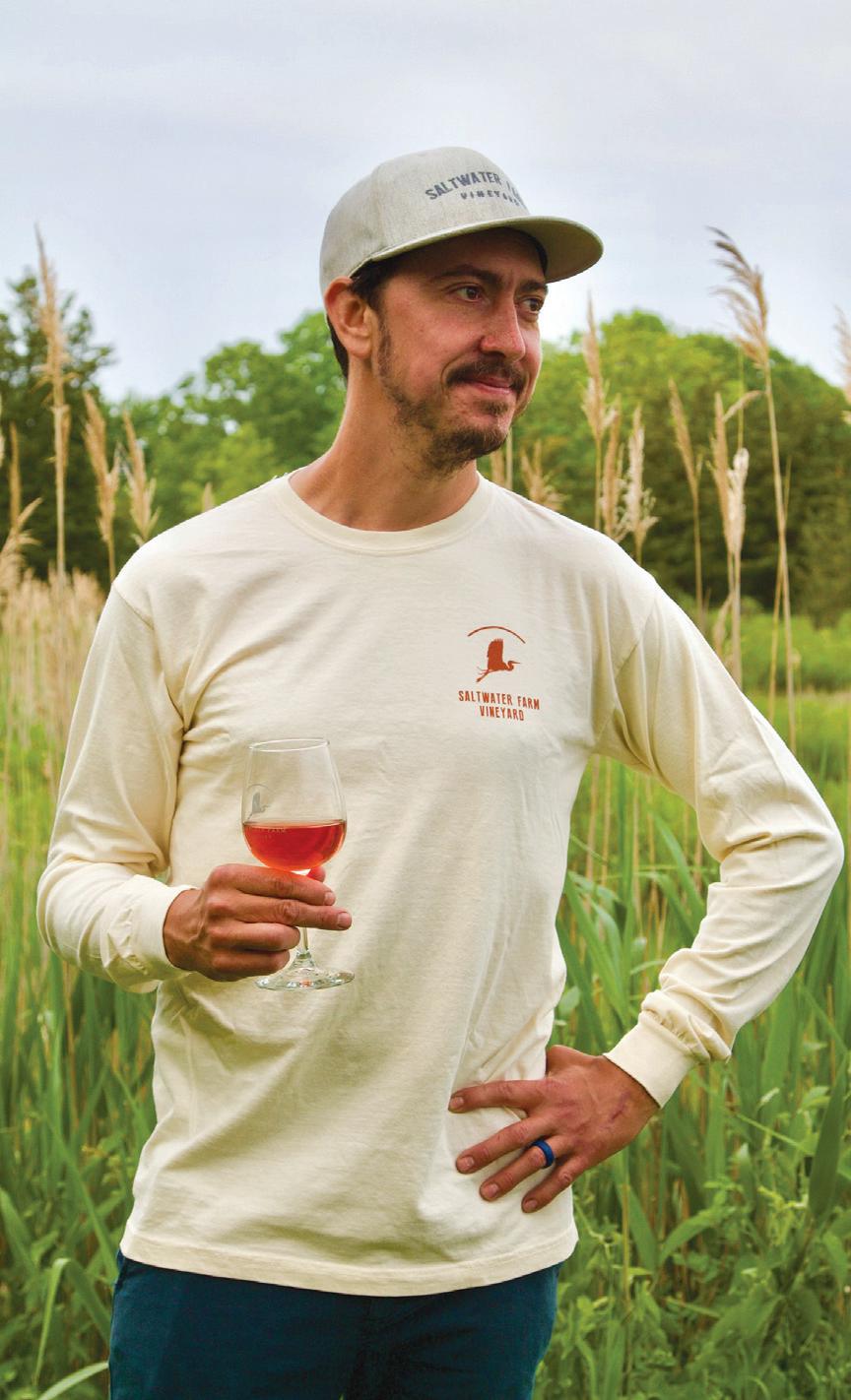
Our friend, Peter advocated for this beverage on all levels, but in particular as part of his own take on a drink called Porto Tonico. A beverage like this will look sharp in any receptacle, whether it is a vintage cocktail glass or your favorite insulated tumbler. The recipe, best mixed on an anchored vessel in some body of water, is as follows:
• Ingredients
• 2 ounces-ish, (you can adjust to the occasion) dry white Port
• 4 ounces seltzer (club soda or sparkling water are pretty interchangeable here)
• A few dashes of bitters (orange was his go-to)
• Citrus garnish (lemon wheel, orange twist, lime wedge)
• Good friends and frivolity
As we are in the thick of the “it’s not the heat, it’s the humidity” season, it is important to stay refreshed in all available ways. Make the picnic plans or take the sunset cruise, gather your besties or settle into the corner of your garden where you find a little welldeserved serenity. Most importantly, try to remember that all of this is fleeting and so very special. Almost all languages have a way to say cheers. Usually it invokes either a celebration of life or of community. So get to it and embrace the opportunity to invoke whatever expression of shared life and love you have available!
The vineyard itself has been a major player in the estate-grown port scene since the late seventies. This particular estate, located in the Pinhão part of the Douro, specifically in the subdistrict of
Gregory Post is a sommelier and manager at Saltwater Farm Vineyard, affiliated with Kingdom of the Hawk Vineyard.

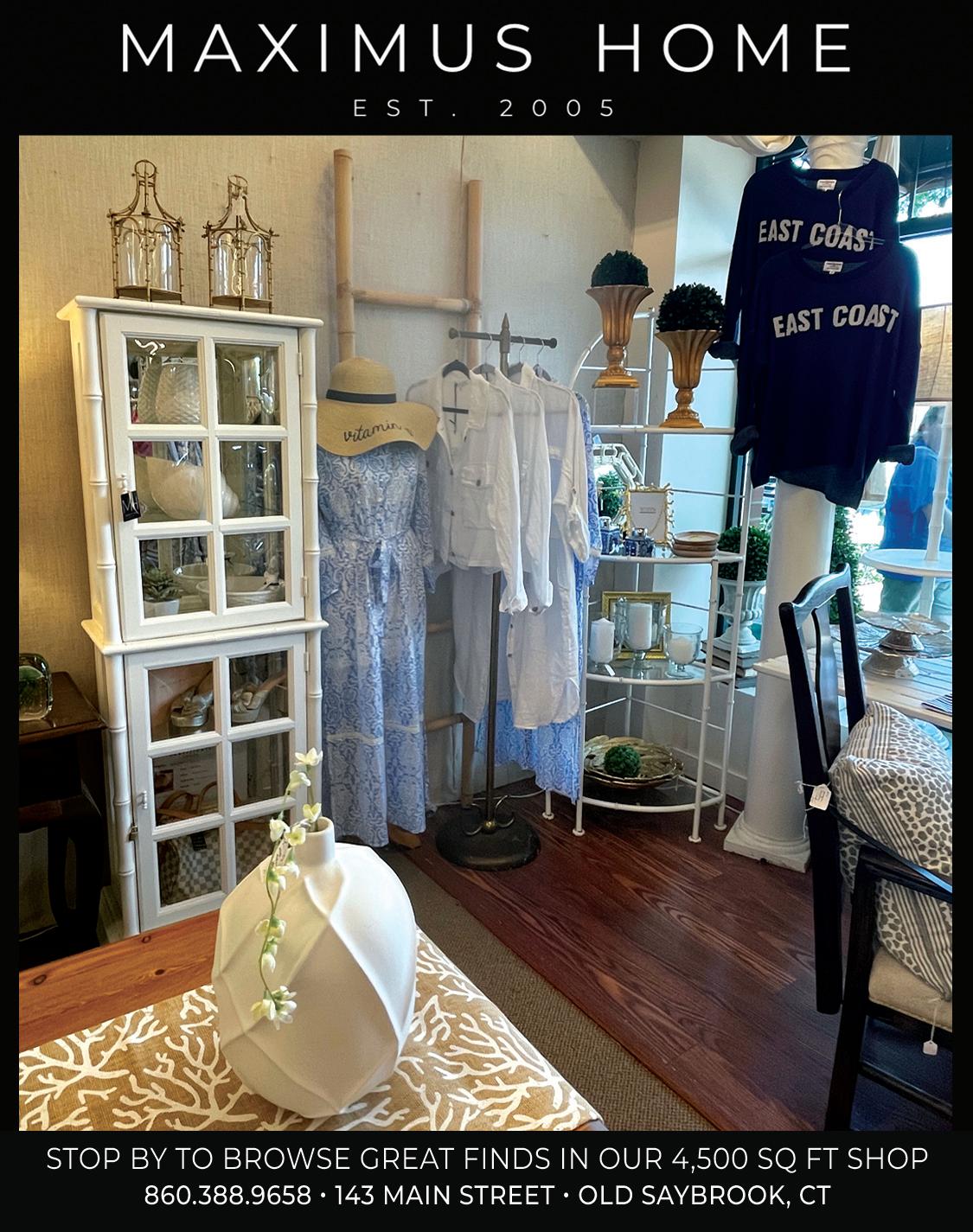

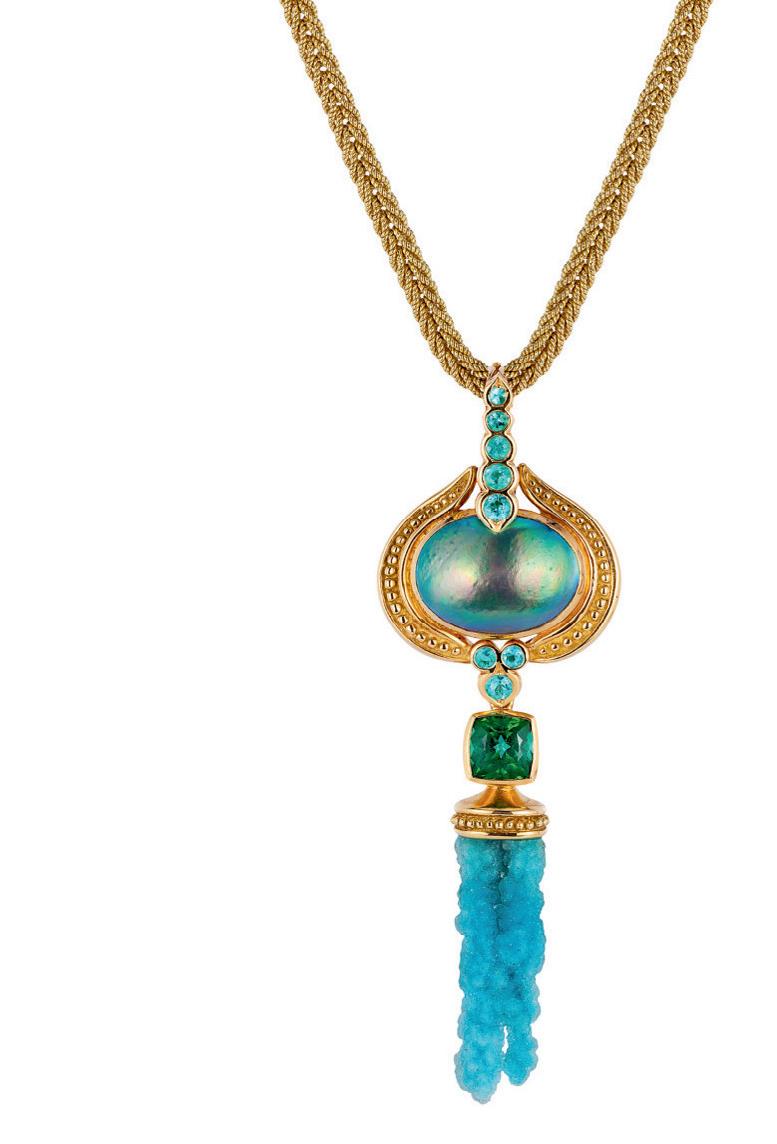
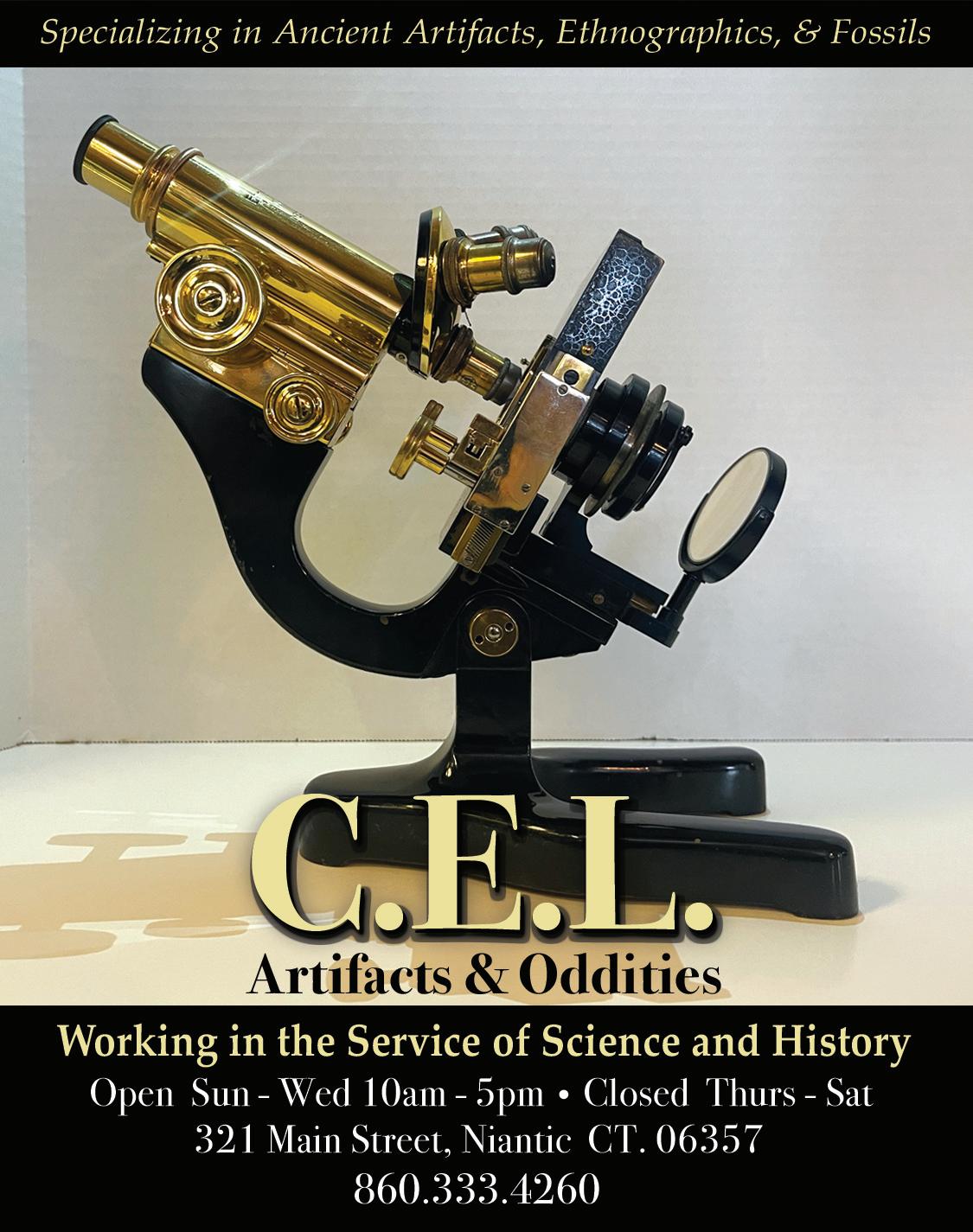
















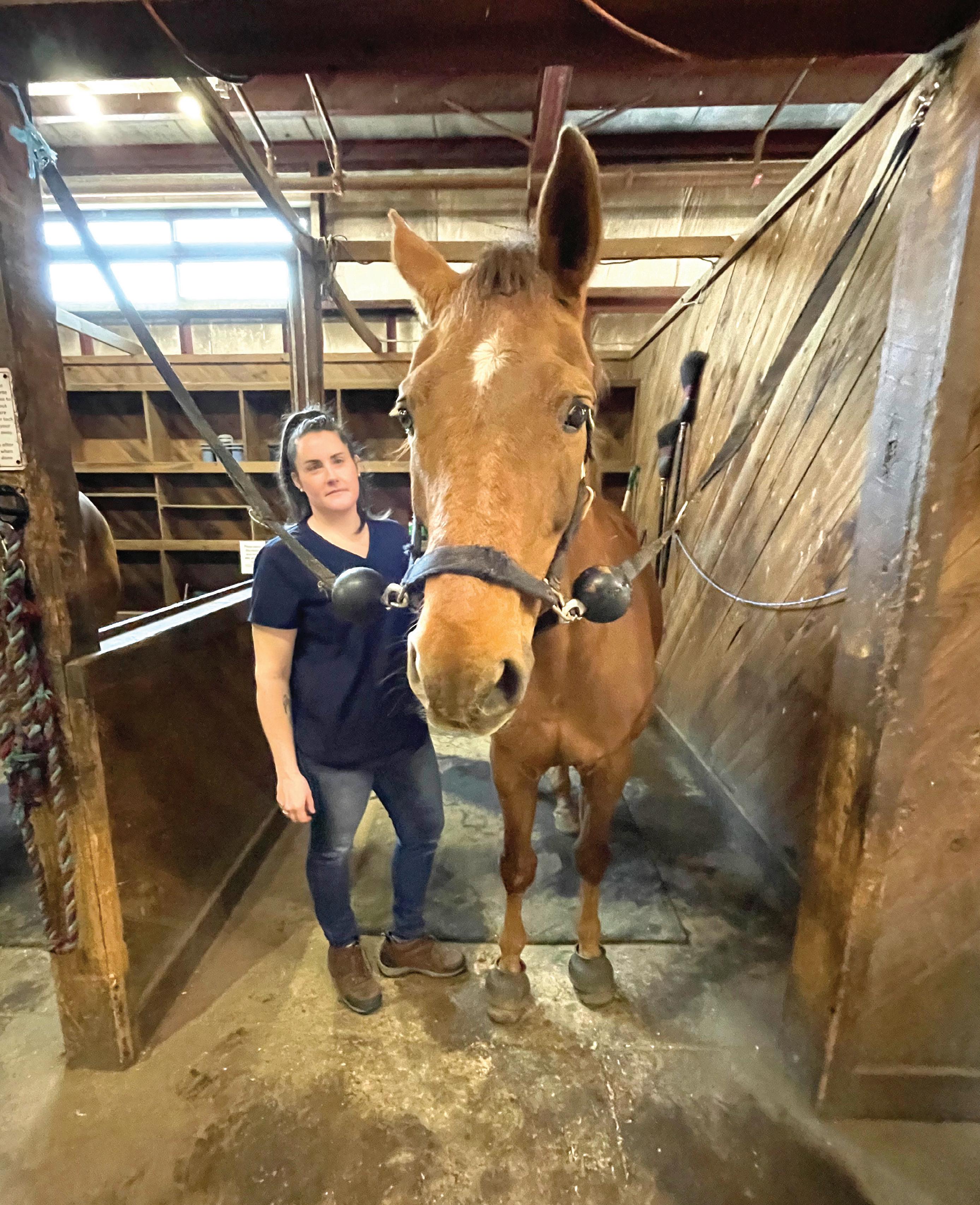
o two days are the same for traveling Veterinarian Natalie Diamanti who drives her van throughout Rhode Island, Connecticut and New York to provide creatures great and small with integrative treatments.
The whole family (including husband Jim, children ages 8, 6 and 16 months and nine-year-old male Great Dane, Rudder) is awake by 7 a.m.
Depending on the day, Dr. Diamanti gets the children off to school and daycare and herself wherever she needs to be usually by 9 a.m., or a little later if farm calls are farther away.
Dr. Diamanti’s approach often involves acupuncture and chiropractic adjustments.
“Some locations don’t have a barn. They (horses) are out in a field and they have a run-in shed. And so we make it work.
Obviously some of those situations are weather-dependent,” she said, adding that working in an enclosed shelter during the winter months is preferred. “It’s harder to treat them because it’s cold out. Trying to adjust and manipulate joints and muscles in the cold is not pleasant for anybody.”
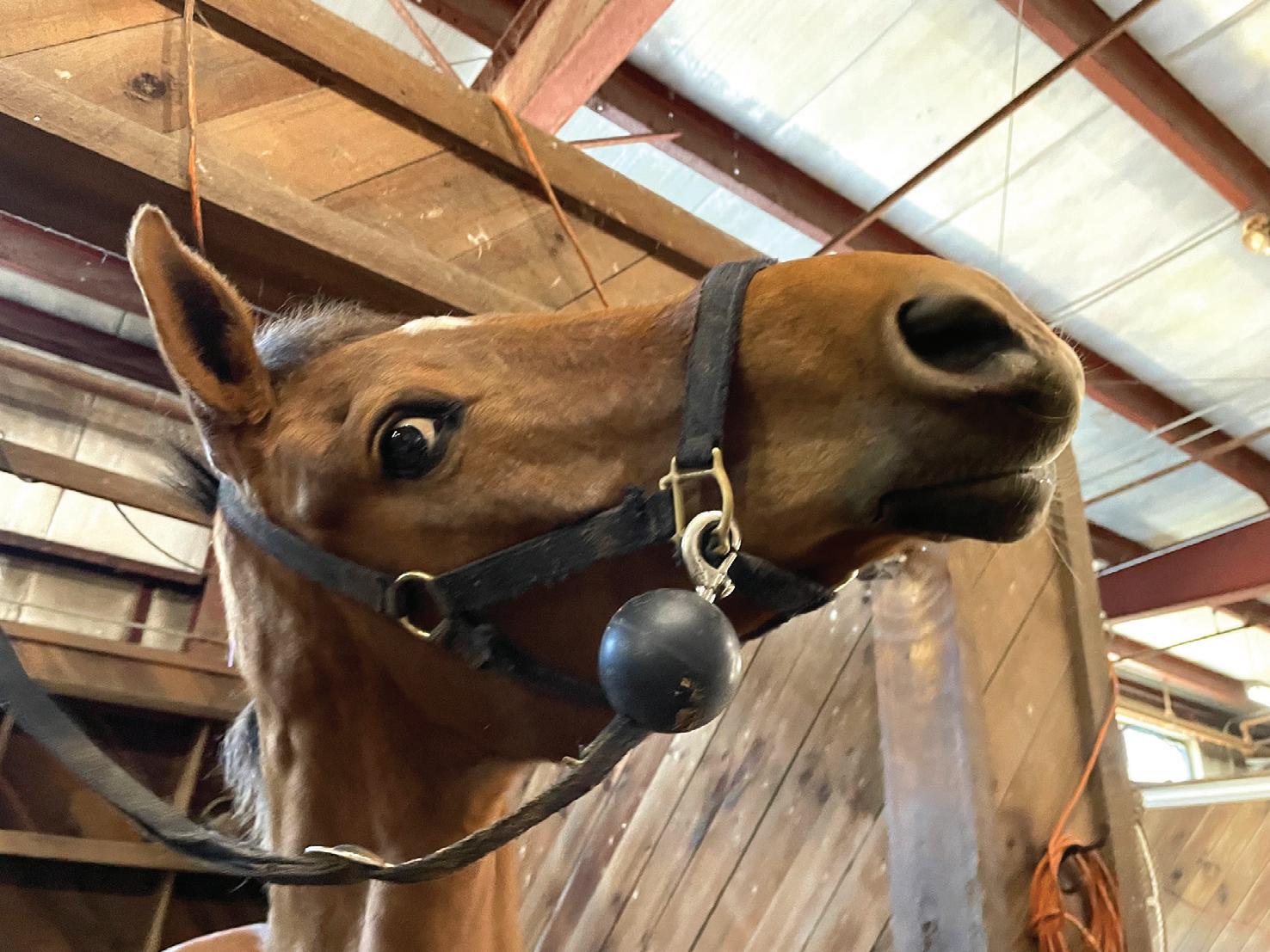
The Westerly, Rhode Island resident is back home by 5 p.m. on weekends and 3:45 on weekdays during the school year to pick up her children and prepare dinner - unless Jim, a retired navy submariner, has those responsibilities covered.
The only constant in Dr. Diamanti’s schedule is her standing Wednesday visits to two Richmond, Rhode Island clinics: Wood River Animal Hospital, Inc. (Wyoming Village) and Richmond Veterinary Clinic, Inc. - where she mainly treats dogs.
“Every now and then, I get some cats,” Dr. Diamanti said.
Even though she hasn’t treated other types of animals yet, she said she is open to it “if they could benefit from one of the modalities I offer.”
Dr. Diamanti describes her integrative veterinary medicine practice as an added benefit that complements animals’ “regular” veterinarians’ general physical exams, shots and sometimes steroid injections for horses to help support their joints.
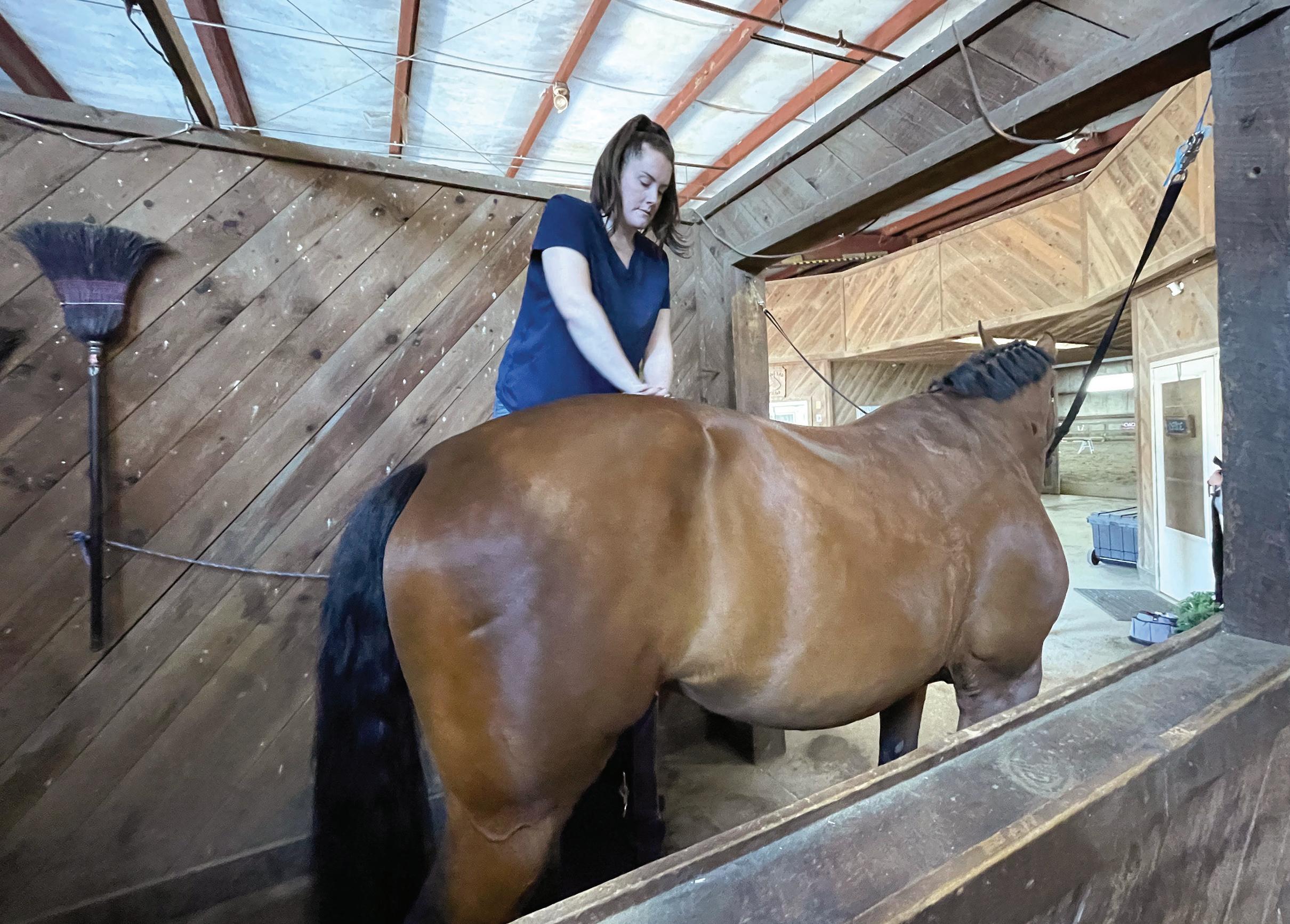
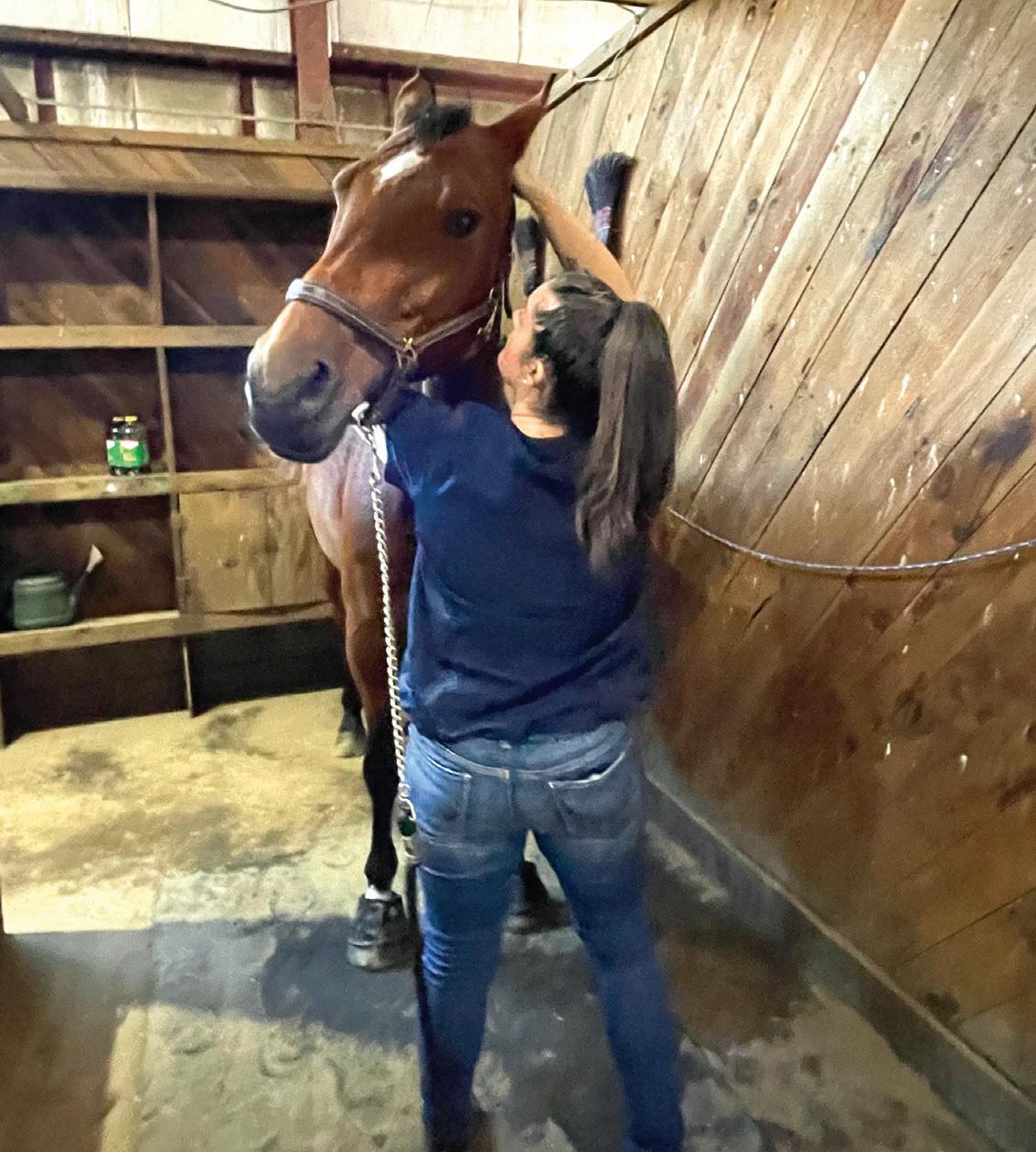
On this sunny April day, Dr. Diamanti has traveled to Ashaway, Rhode Island to administer acupuncture and chiropractic adjustments to five horses at Hunter Ridge, a riding, training and boarding facility with 27 stalls.
Her first patient is Pepper, an 18-year-old male with back issues. He stands quietly after small needles (which are not painful) are inserted on his back for 30 minutes.
“He’s in a lesson program, so he gets ridden by lots of different people.”
Acupuncture can help with many different issues, Dr. Diamanti explained, including wounds, arthritis, general muscle soreness and performance enhancement.
Once the disposable needles are removed, she performs chiropractic adjustments on Pepper.
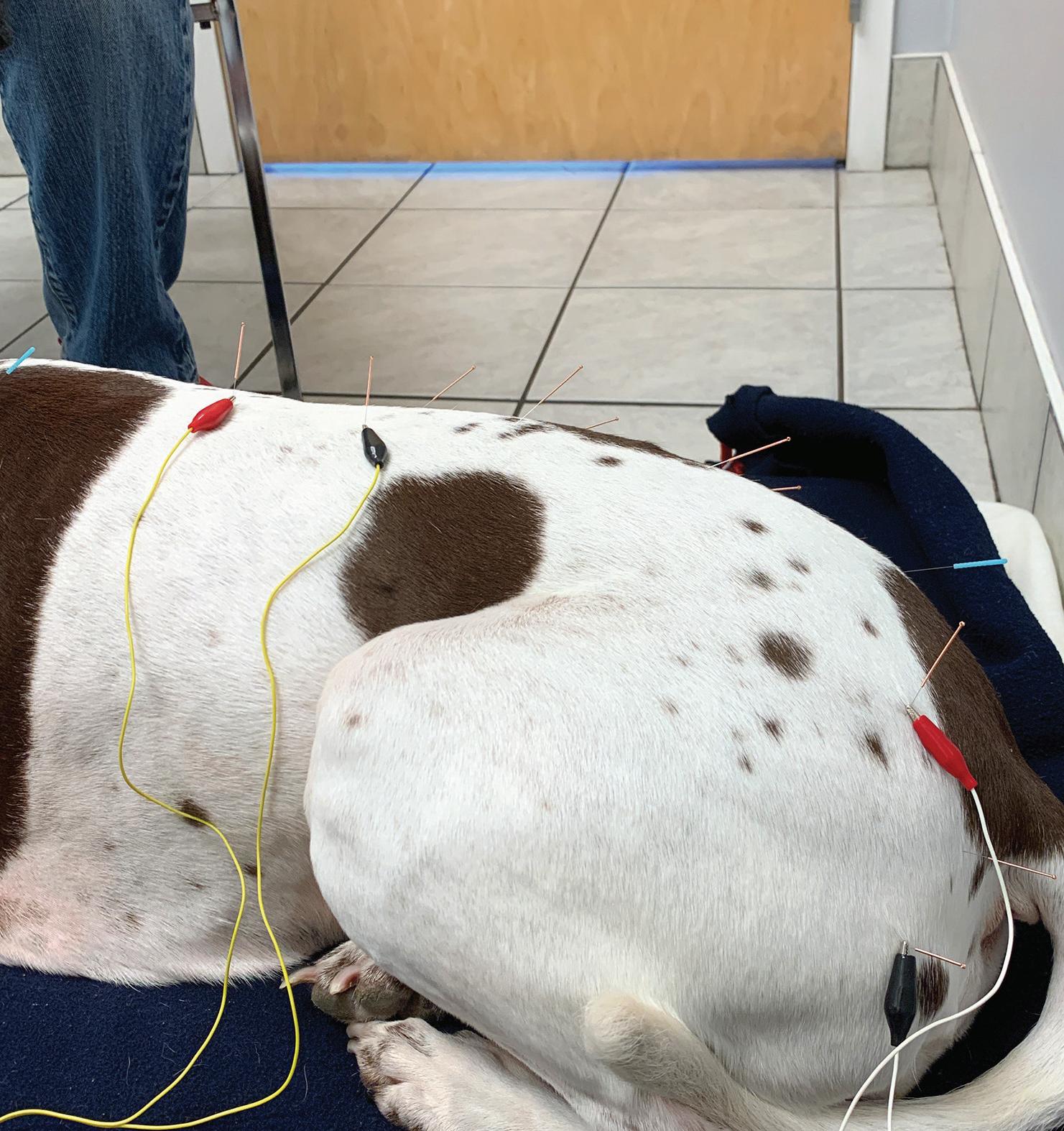
The two modalities really complement each other, Dr. Diamanti said. “Acupuncture helps to bring blood flow to areas that are painful. It helps to bring natural painkillers, basically, their innate ability to heal themselves. Then adjusting them helps them become more bio-mechanically sound.”
Next up is Marley, a nine-year-old mare, who undergoes the same types of therapies.
“This horse (Marley) doesn’t have any real issues, so to speak, but she’s a high-level athlete (jumper),” said Wendy Brayman, who owns Marley and Hunter Ridge. “So, hers is more of a preventative situation as opposed to a ‘We’ve broken it, now fix it.’ So, we try to stay ahead on this horse because of the level of competition that she does, so that she doesn’t ever get uncomfortable and not want to do her job.”
Brayman said she wasn’t always open to alternative therapies. That changed five years ago when Dr. Diamanti reached out to her and she did chiropractic adjustments that really helped one of her horses that was having back issues.
Utilizing more of Dr. Diamanti’s integrative-medicine approach came about after Brayman began getting body massages herself and realized “the importance of physical maintenance as opposed to medicine maintenance,” she said. “It’s taking me a little longer to get my customers on board, I think. We’re getting there... Sometimes you can see the benefits right away, but then the benefits go away kind of quickly when it’s not a regular program. So if it’s not something you do maintenance on all the time, then you lose the benefits. And that’s confusing for laymen.”
Sometimes, however, one adjustment is all they need, Diamanti said. Brayman said she thinks many of her customers “come on board” now with integrative medicine, because they see the results on her horses, or their regular veterinarian recommends it after finding a sore spot, lameness, or something that’s not getting better with rest or medication.
Dr. Diamanti gently shakes Marley’s head, as she checks for motion in the jaw and the musculature that holds them in place. When she is done, she can tell the horse is ready for a nap. Signs include horses’ “eyes kind of get heavy, their head gets lower. They get very relaxed.”
Dr. Diamanti said she can tell a great deal by touching animals. “And that’s taken years of practice to really trust what it is that I am feeling under my hands. A knot, pain. ‘Is that soreness really sore in that area? Or is it coming from somewhere else? If it’s coming from somewhere else, where else are they sore?’”
Asked if she feels a little like Dr. Doolittle, she said, “No, sometimes I wish I was. That would be a lot easier sometimes if they could say, ‘Yeah, you’re getting it right or you missed this spot. That would be helpful.”
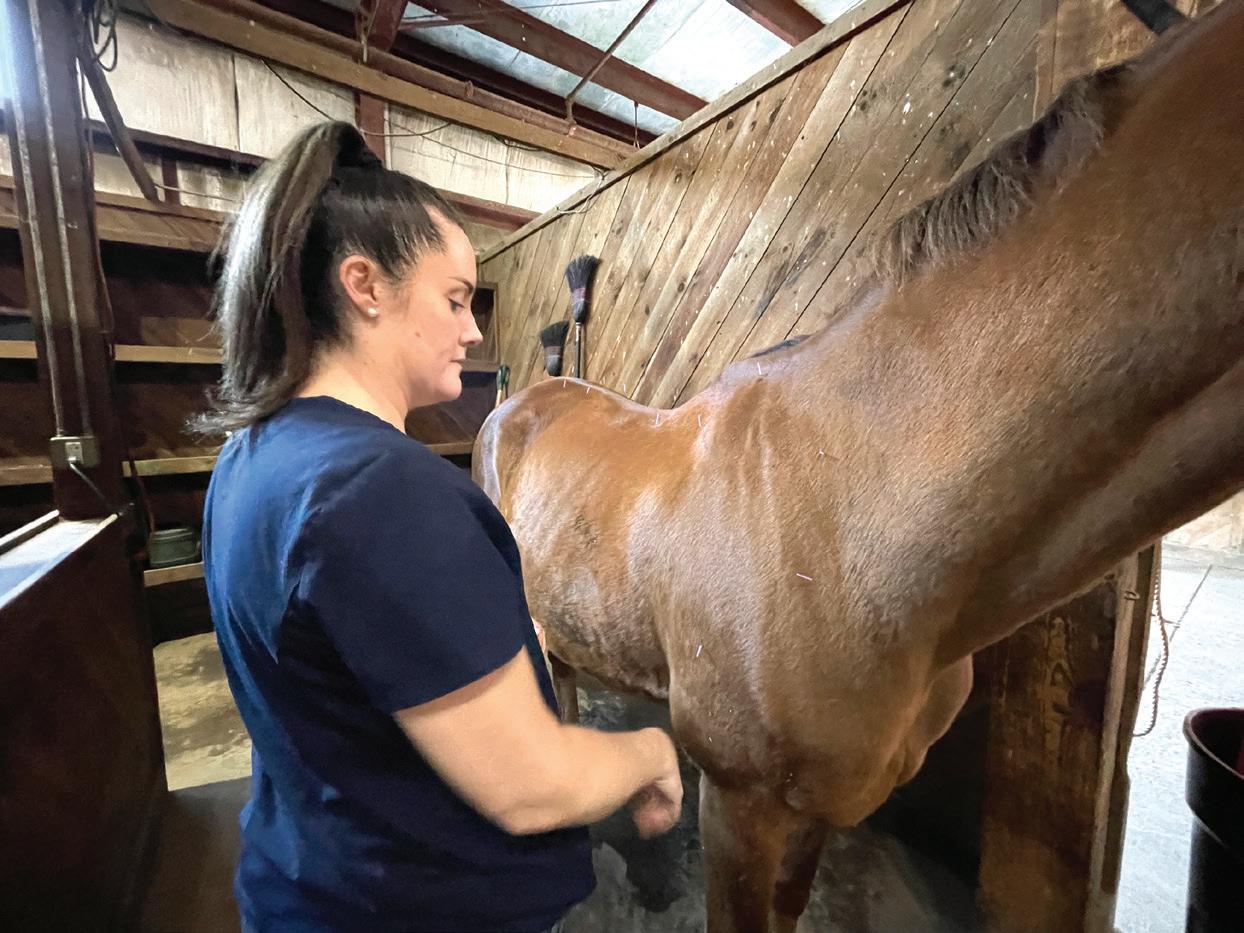

Diamanti said horses are masters of compensation, because they’re a prey animal. “So if they’re not comfortable, if they’re hurting, they’re going to hide it for as long as they can, because they don’t want to show that weakness to be preyed upon.”
Even though she didn’t have her first dog until middle school, Dr. Diamanti said she has wanted to be an “animal doctor” since she was two years old, according to her parents. Then, when the Westchester County, New York native started riding horses in middle school, she said she “fell in love” with them. It was while she was in high school working at a small animal clinic, that she decided she was going to work on horses. Her path took a bit of a detour to include small animals as well.
While attending University of Rhode Island, she was a member and captain of the URI Equestrian Team. Later, she studied at St. George’s University in Grenada in the Caribbean, completed clinical training at Auburn University in Alabama, and then interned at Rhinebeck Equine in New York, which was a turning point. “I worked with a surgeon who was certified in acupuncture. So we did a lot of acupuncture on patients that she would see on her day-to-day, depending on what was going on,” both on farms and at the hospital.
Not having studied acupuncture in college, she said she thought, “It was pretty cool. It piqued my interest, for sure.”
When she became a doctor 13 years ago, Diamanti said not many veterinarians were “doing integrative,” but that number has increased over the years.
When horse owners call her, it’s usually because they’re open to integrative therapy. “They’re seeking out the service. It’s not because they’re looking for anything else.”
However, for many owners with geriatric dogs, Dr. Diamanti said, “I’m sort of a lastditch effort of keeping them comfortable,” trying to see if they can help them feel better.
She said she has seen major turnarounds in dogs. “I’ve had canine patients that are urinary-incontinent. They can’t get around very well; owners don’t know what else to do. We start acupuncture and within the first two, three sessions they can now hold their bladder. They’re able to get upstairs. And so I think that is sort of a ‘brink-of-death’ (issue). I mean when you’ve got a dog that’s urinating in your house all the time, that’s a quality of life issue for the owner and the dog.”
Sometimes dogs start to act like puppies again, Dr. Diamanti said. “They’ll want to play with housemates more. They’ll want to go for a walk. They’ll pick up toys they haven’t picked up.”
Also, all the modalities she uses “are great, because they’re non-pharmaceutical,” which is very helpful for animals who have kidney disease, she said. Usually the treatments work, which she said brings her joy, because she is helping and that’s gratifying. “It’s great. I love it for everybody. I love it for the animals, I love it for the owners.”
To help with arthritis, bone/tendon healing, fractures, wounds, sore muscles and pain control, Dr. Diamanti also offers Shockwave therapy. By using a PulseVet device, sound waves are delivered into the animal’s body.
Laser therapy is another alternative treatment she uses for everything from degenerative joint disease and hip dysplasia to ear infections, skin problems and general pain management. This involves administering nonthermal photons of light to the
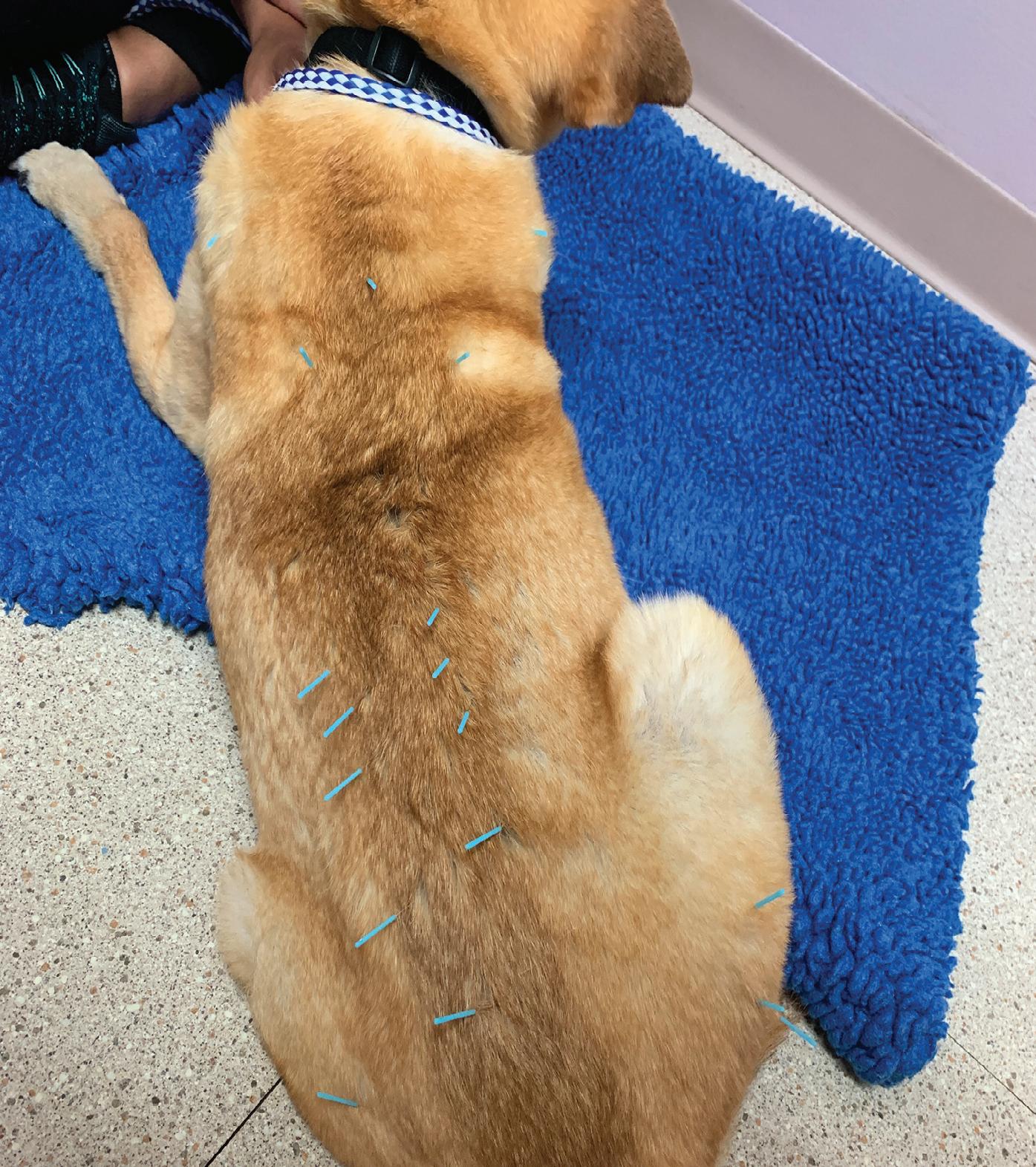
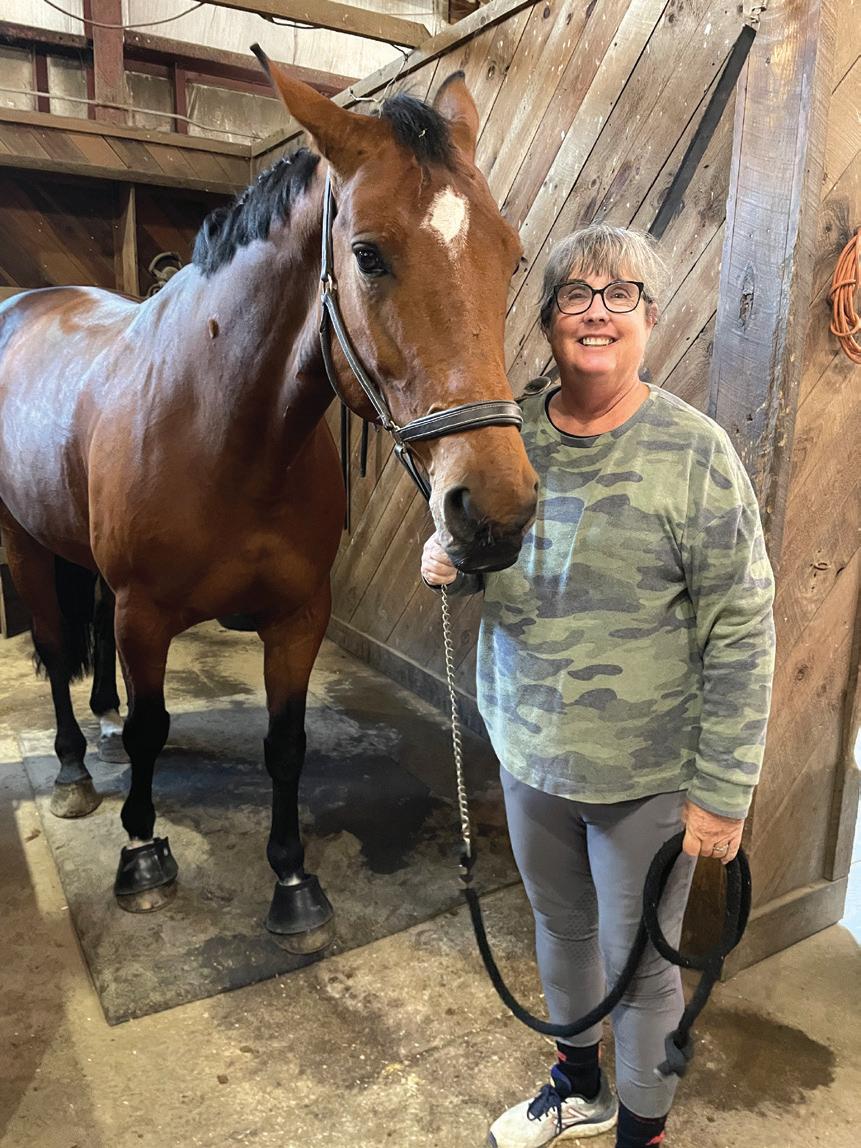
body, so they can be absorbed by injured cells - thereby stimulating the body to heal from within.
And as if juggling veterinarian care and family life isn’t enough, Dr. Diamanti also finds time to work as a travel agent from home.
Dr. Natalie Diamanti of Pegasus Veterinary Services, PLLC of Westerly, Rhode Island is a certified veterinary acupuncturist trained through the Colorado Veterinary Medical Association. She is also certified in animal chiropractic through Options for Animals Chiropractic College. For more information, call 914-629-0777, email her at pegasusvetservices@ gmail.com, or go to pegasusvets.com.



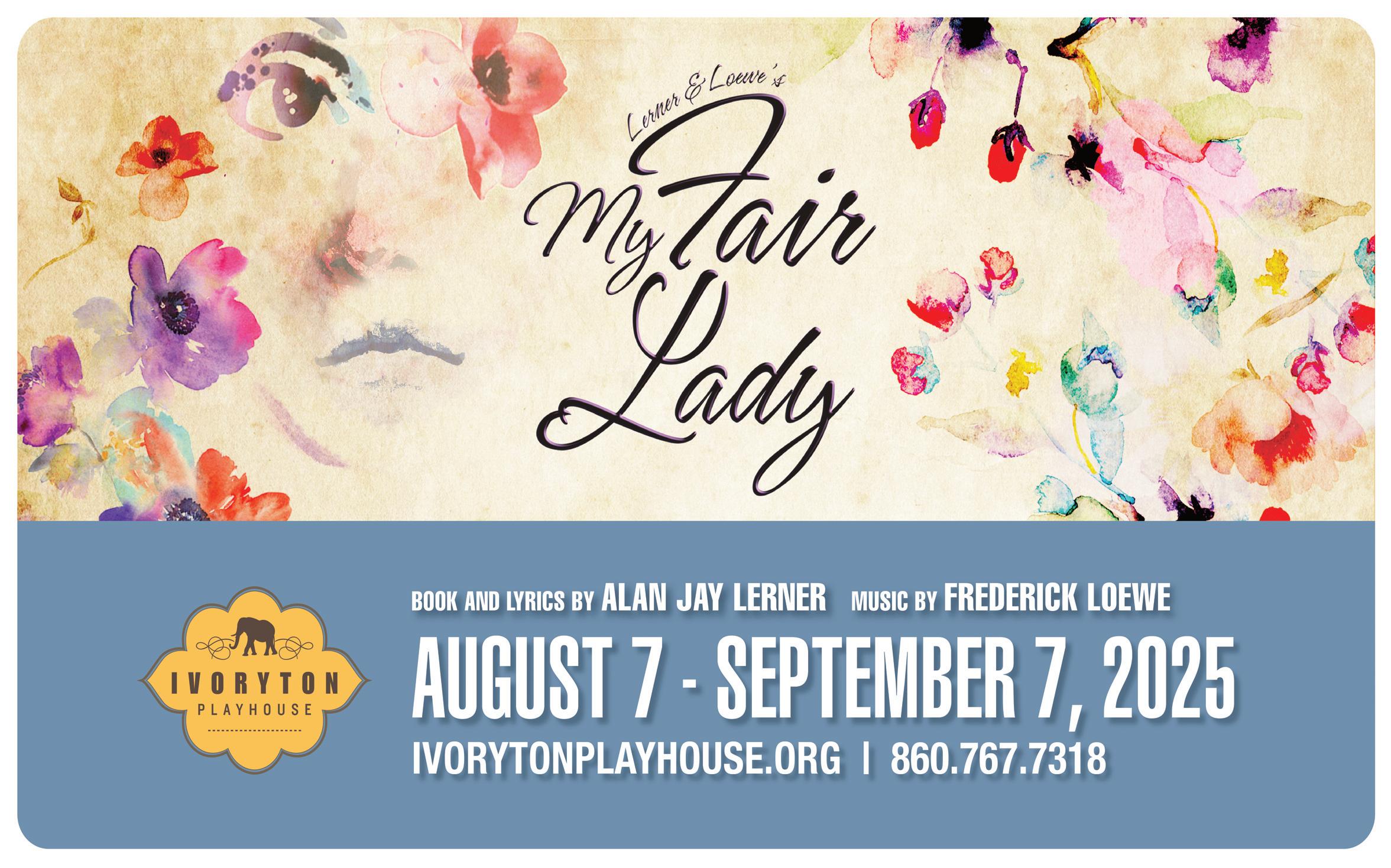










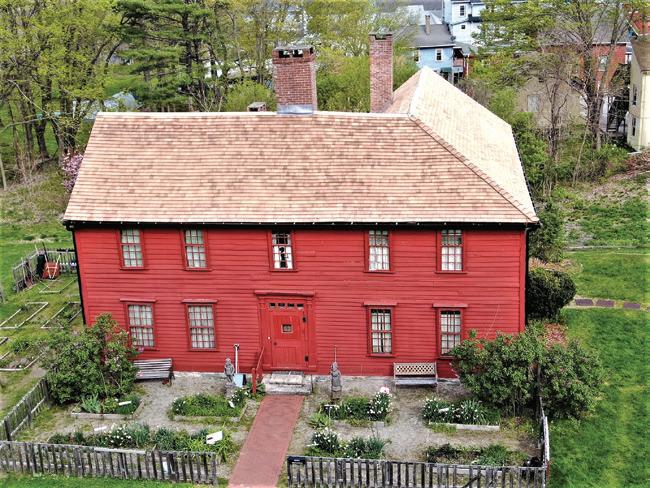










If the walls could ta House Museum (L would have much
after the Revolutio home and later as
-oldLef alk at the 350-year ffifingwell LHM) in Norwich, Connecticut, they h to say about life before, during, and War, , as well as its history as a an inn and tavern.
nti-British colonists) and T ar onary W
“Regulars” included patriots (a (pro-British colonists) with occa General Geor Waashington an known Norwich native and trai
Toories asional visits, according to folklore, from d General Benedict Arnold, a wellitor.
be notified about the outbreak of war on lBilllldittdlii ge W
The inn was among the first to b thLitGhI , W
“Later the notice to Christopher Lef the Lexington Green when Israe ffifing board president from 2018 to 202
el Bissell galloped into town delivering gwell, said Dayne Rugh, former LHM 24, in an email.
r, Waashington dined with C on his way to prepare the New Y
Originally built in 1675 by Steph his eight children, the two-story ed of two rooms with a lean-to c Y Christopher Lef
ffingwell in April of 1776 Yoork defenses.”
hen Backus for his wife and about five of late Medieval or Frontier home consistcooking area in the back.
After Backus died, the post-and-beam home was acquired in 1700 by Sgt. Thomas Leffingwell.
eg Farlow
Inns would have either had a traditional bar or a simple box, where guests would help themselves to liquor.
Granted a license for the “publique” entertainment of strangers from the town proprietors of Norwich in 1701, Thomas opened th pre-revolutionary Leffingwell Inn, which provided overnight stay for out-of-town guests who shared a room, much like hostels tod said Gr w, , vice president of the Society of the Founders of Nih(SFN)hihdh day y he ys y, , f Y Norwich (SFN), which owns and operates the museum.
By rolling another house onto logs and attaching it to his building, Thomas doubled its size. “That was very common back then. Yoou’d somebody who would have to get out of town on the quick,” Greg s
The “publique” entertainment inn continued after Thomas died, wit find said. th
er CamilaFarlow pq his son, Benajah, who was quite services, as well as his fine food, w, , SFN treasur r, , an
However
his wife, Mary
r, , Thomas gave lifetime y, , who was the nur here for her to take care of them,
“W
use of two rooms and the kitchen to rse at the time. “So, people used to come ,” she said.
ffferance.’”
Wiithout that, she would have h had nothing and lived on ‘suf , successful and known for upgrading , table, and bed linens, said Greg’s wife, nd program organizer.
Camila explained that many wom fff, but they men were treated like “chattel” (property) y didn’t.”
and that “they had stuf
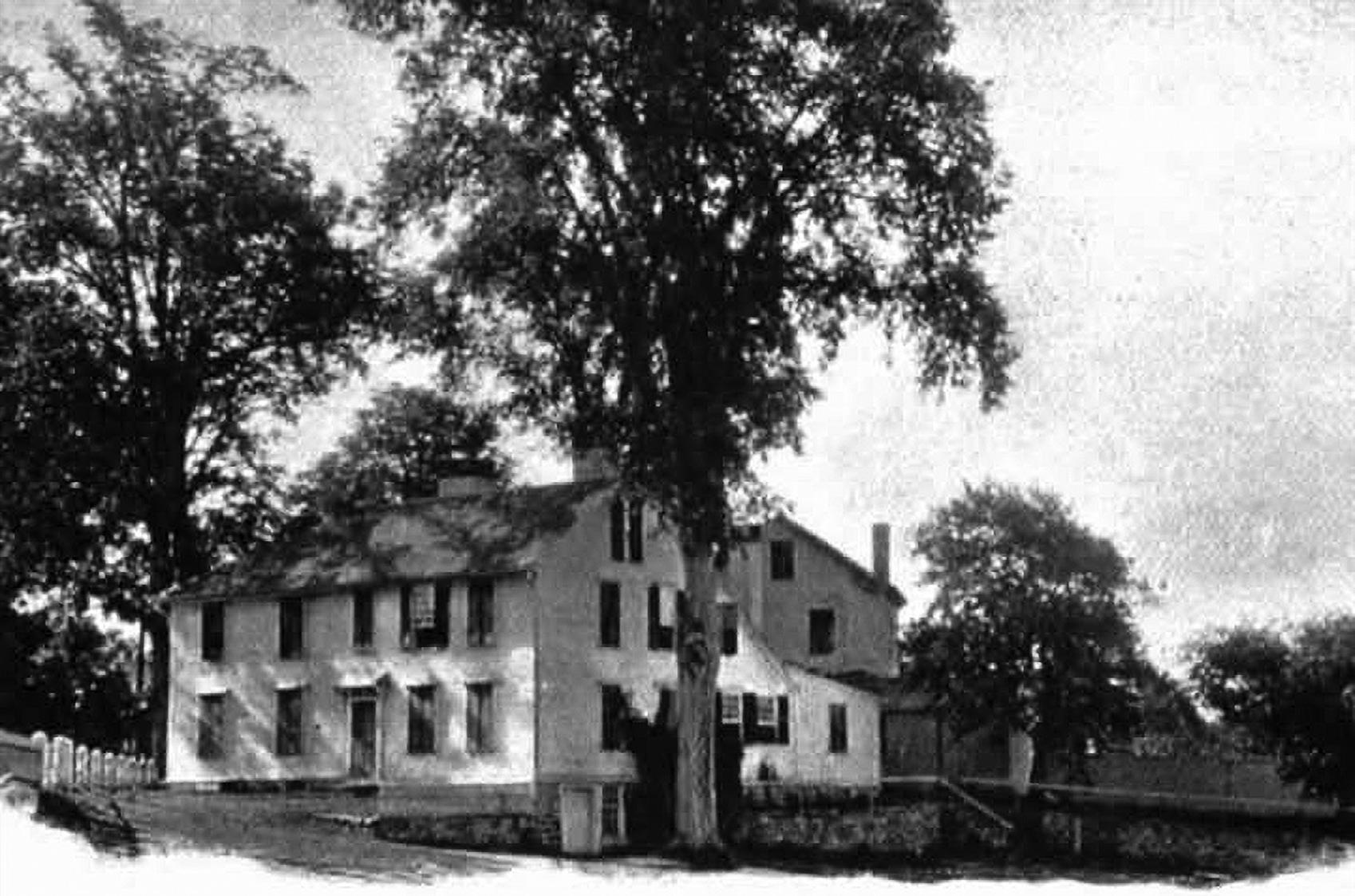
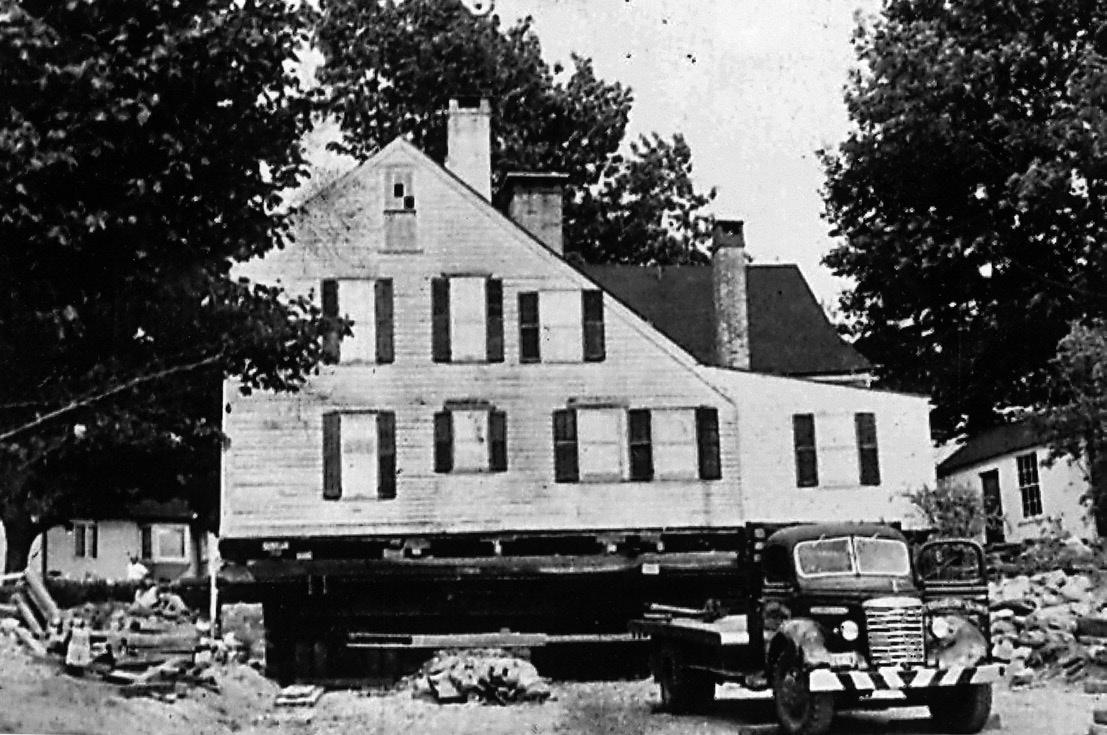
Lef
Christopher Lef
Their position in society and wheth on the whim of their fathers and hu ffifingwell died, his wife, Joanna, in inn and had her son-in-law run it fo ffifingwell, an entrepreneur her they could own property depende usbands. For example, when Benajah nherited the house. She kept it as a ta or her. When Joanna remarried, her so r r, , and lawyer involved in the sta d vern/ n, ate Y legislature, gained ownership of the home in 1760.
After many renovations and adding a “hanging staircase” (attached to wall), the Farlows are pretty certain that even though he did not renew “publique entertainment” license for overnight guests, Christopher con ued to entertain local people, “because you want the gossip and the ne Camila said. “And what do you come to a tavern for? Yooucometodrin rum, read the newspaper and smoke tobacco.”
“MtliNihIdtditthtitid the his tinws,” nk because they like to make money
“Most people in Norwich, as I und y,,” “separate from England and were taxation on everything and they w derstand it, were on the patriot side, ” she said, adding that they wanted to anti-King George when he started putting were getting hurt.”
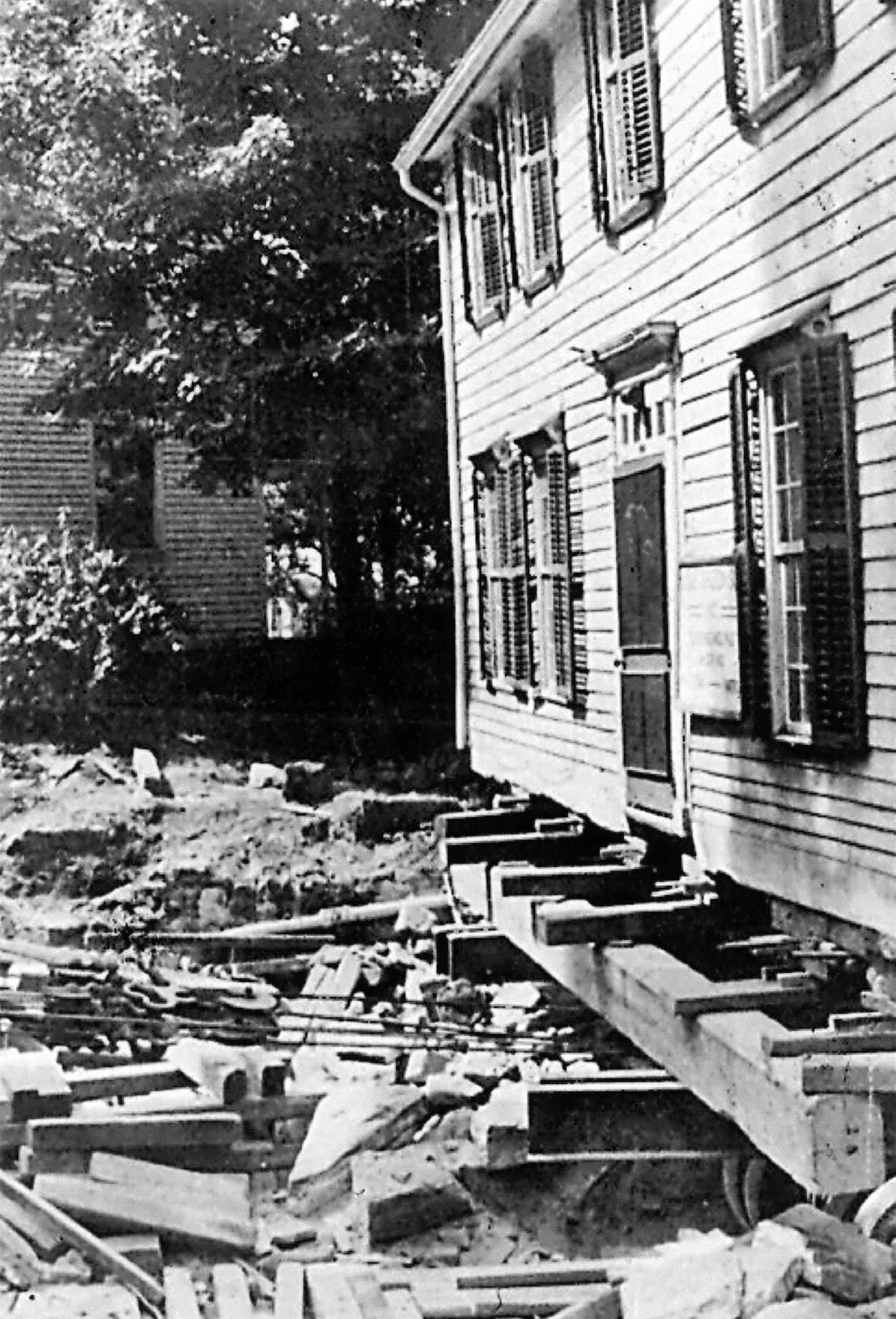
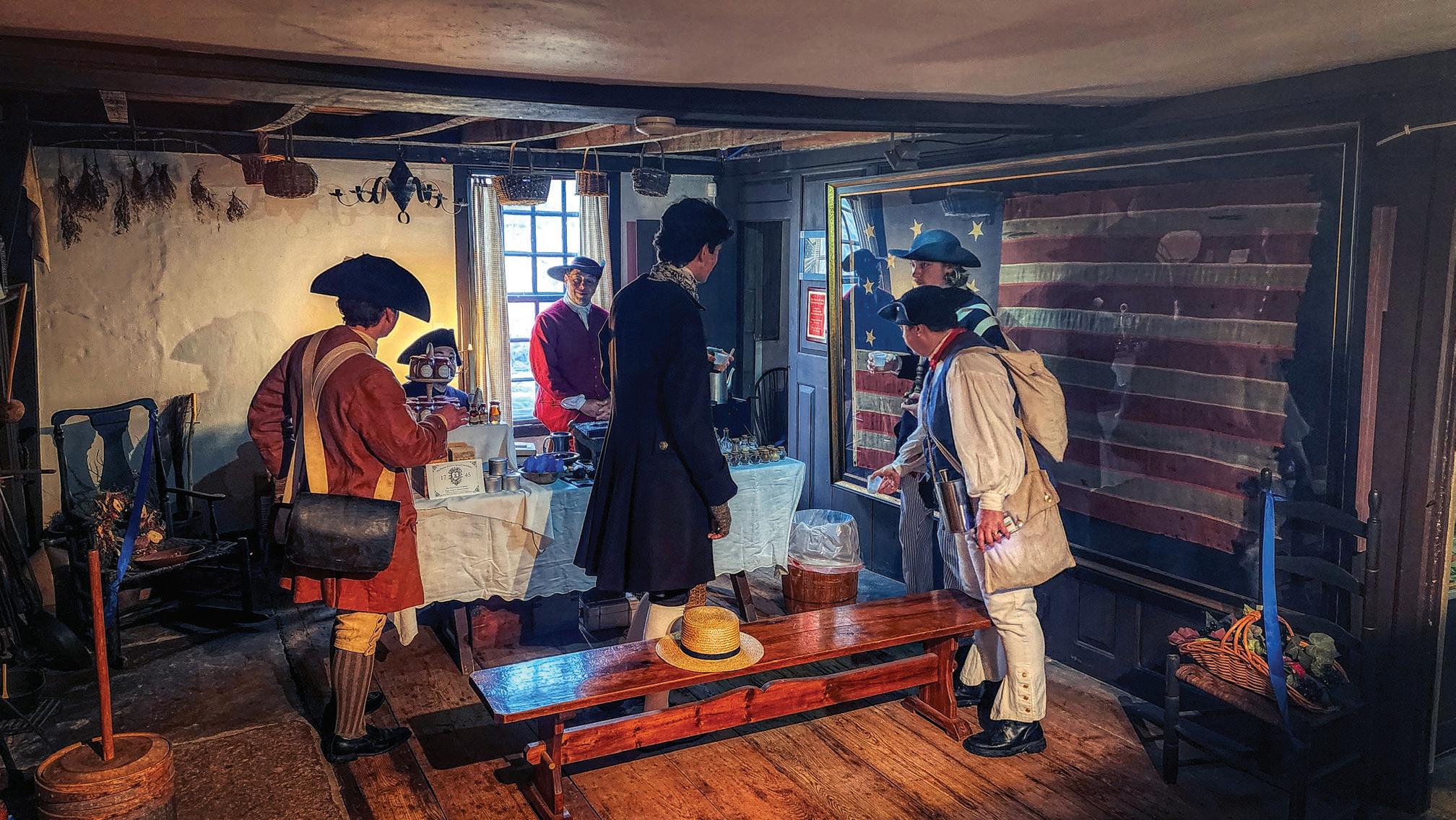
In Boston, people couldn’t practice their craft, and soldiers lived in their homes, Camila said. “They didn’t want you to buy the silver and make your own.”
For this reason, merchants and craftsmen moved to Norwich. “People gave you, their doubloons. You melted them down. You made an ingot. Then you made it into what they wanted. That was their wealth.”
Knowing the conflict was going to happen, Connecticut Governor Jonathan Trumbull, Sr., told Christopher to start stockpiling supplies for the militia, Camila said. “You didn’t go to the gun store to buy a million guns. You had to get a gunmaker to put it together for you.”
Docents inform visitors that by 1750, Norwich was the 12th-largest town in the colonies, with 66 cabinetmakers, 49 silversmiths, and 20 clockmakers.
The Leffingwell was an active inn and tavern for several decades up until about the outbreak of the American Revolution, Rugh said. “Structurally it still retains much of the original features, details, and character from when Christopher Leffingwell finished the present layout of the house around 1760.”
After his first wife died, Christopher married Ruth Perit, a widow who had children of her own. When he died, Ruth lived in the house with her granddaughter, who married Benjamin Huntington. The home remained in the Huntington family until the early 1900s and was then sold to numerous other families, Camila said.
Slated for demolition to make way for the Route 2 Extension, SFN acquired the building in approximately 1957 and relocated it down the hill to its current location, reopening it as a museum in 1960.
Experience the delightful art of Colonial chocolate-making with a captivating demonstration by Pewter Pot Fine Specialty Chocolates.
Meet George and Martha Washington, the iconic figures of American history. Standing proudly behind them is a patriot’s coat, a symbol of the revolutionary spirit of their time.
by Robert Ladd
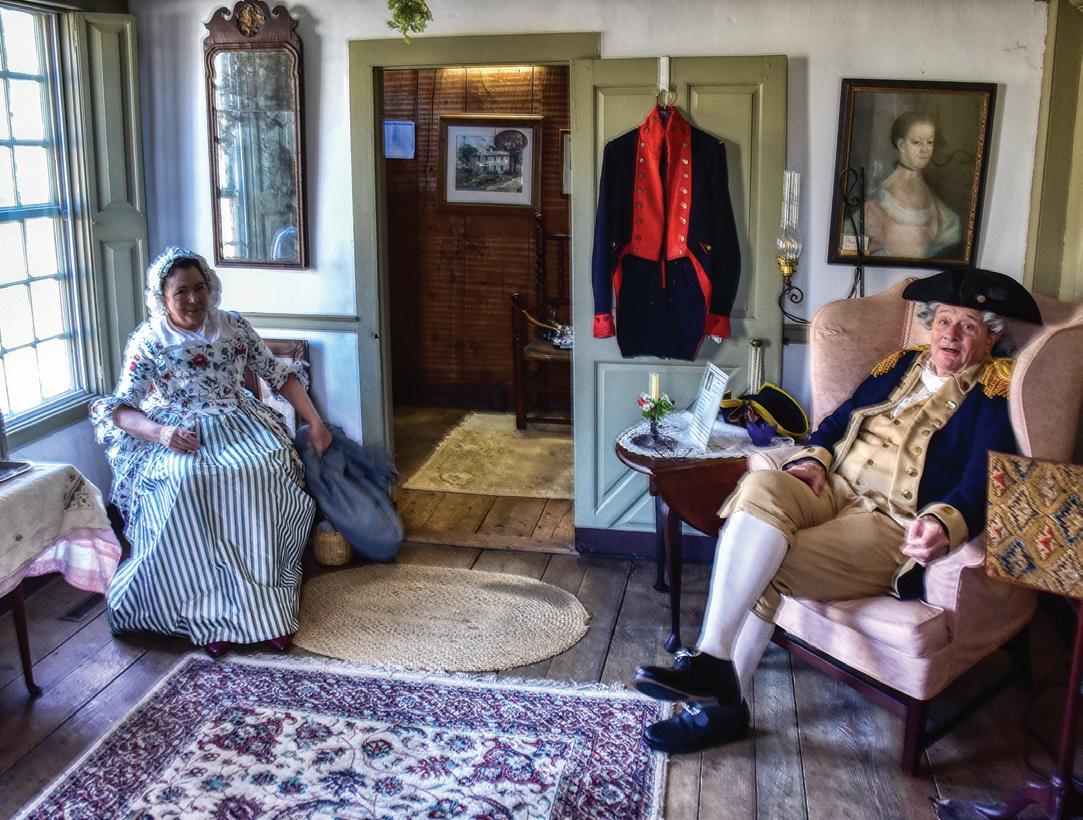
“The story we try to tell is the history of the funny things, the little things that make you remember,” Camila said. For example, “Mind your Ps and Qs” is a barmaid’s term for keeping track of pints and quarts.
Docents also inform visitors that women would also cover Chickenpox scars with beeswax to make their complexion smooth and then cover it with makeup. However, they had to use a fire screen when they went near the fireplace so their “faces” wouldn’t “melt.” This is where the term “Mind your own beeswax,” meaning “Mind your own business,” originated.
Additionally, furniture and appliance craftsmen did not have showrooms in the 1700s. People would visit them and order from dollhouse-sized models or describe what they wanted.
Step into the colonial kitchen, where the heart of the home beats in the form of a charming fireplace-hearth.
The Tavern Room displays a classic checkerboard and rustic pipe, hinting at stories of the past.
Top right: Step into the 1600s: The Leffingwell House family bedroom reveals colonial life through its curtained bed, hand-hewn beams, and everyday tools.”
Bottom right: Step into the West Parlor, where the charm of wide floorboards, repurposed from ships, tells a story of adventure and seafaring history.
Photos by Jan Tormay

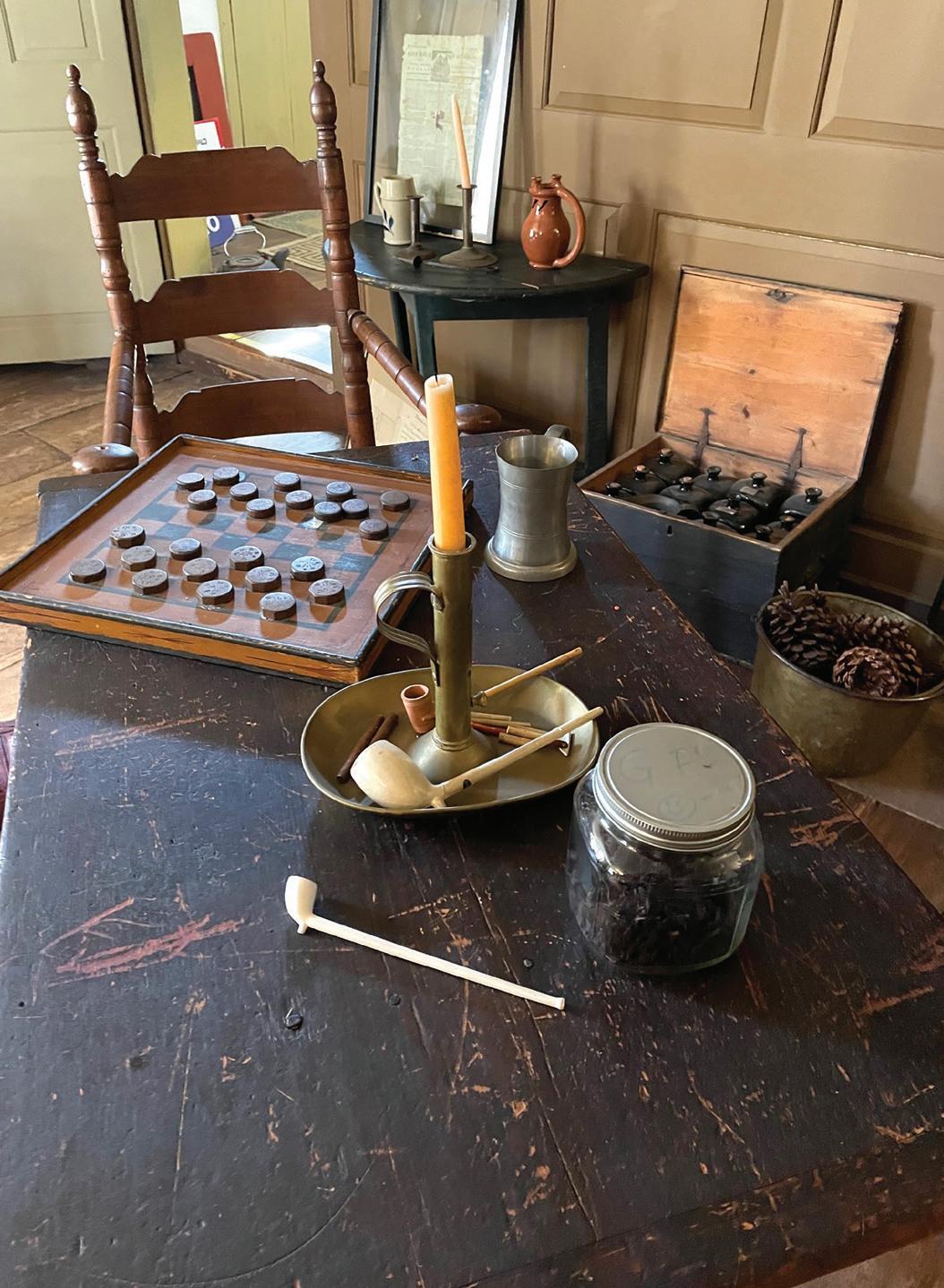

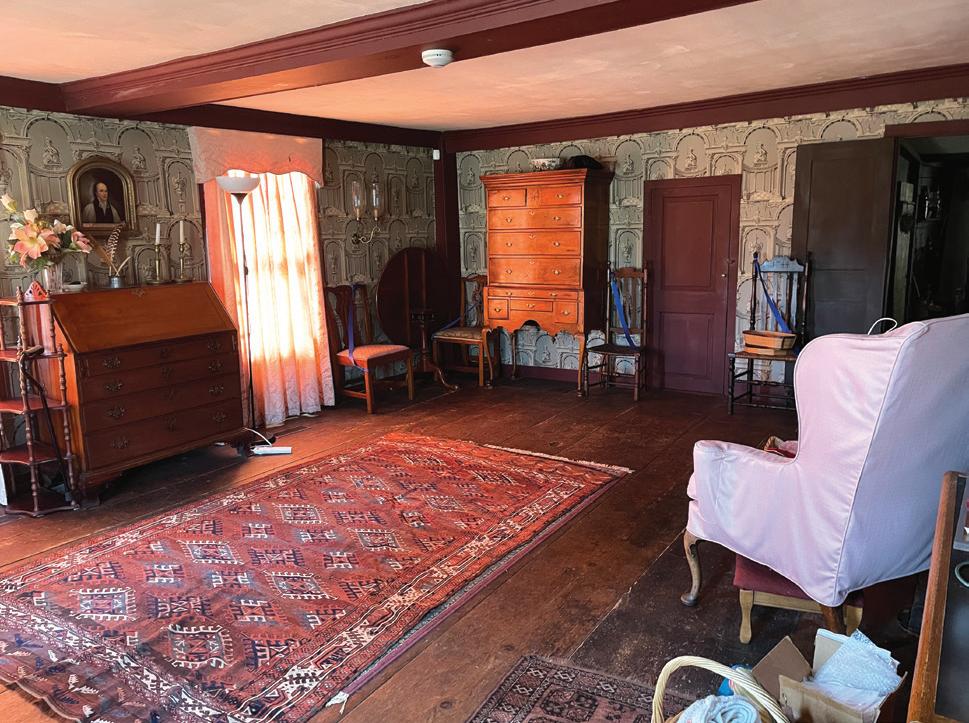
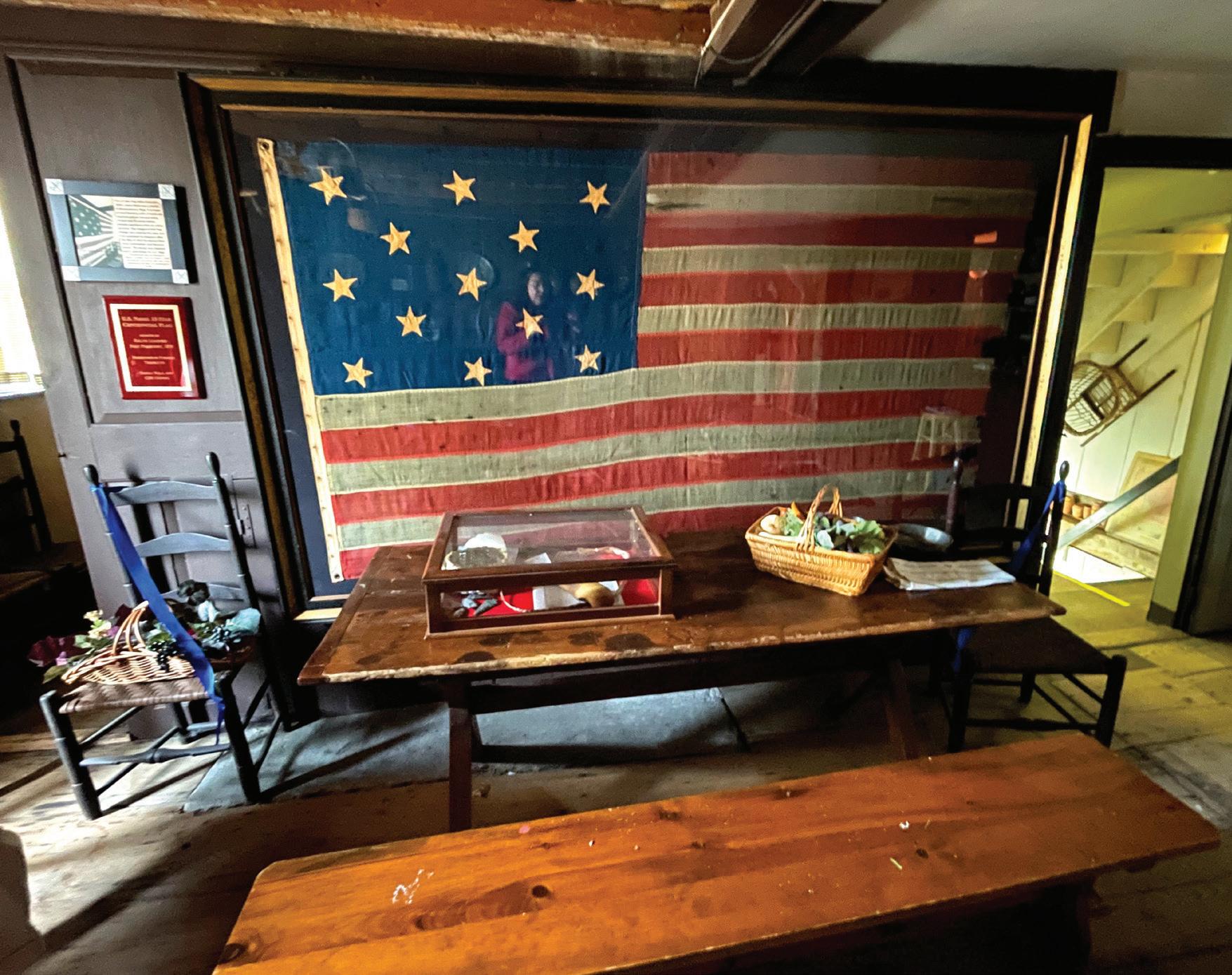
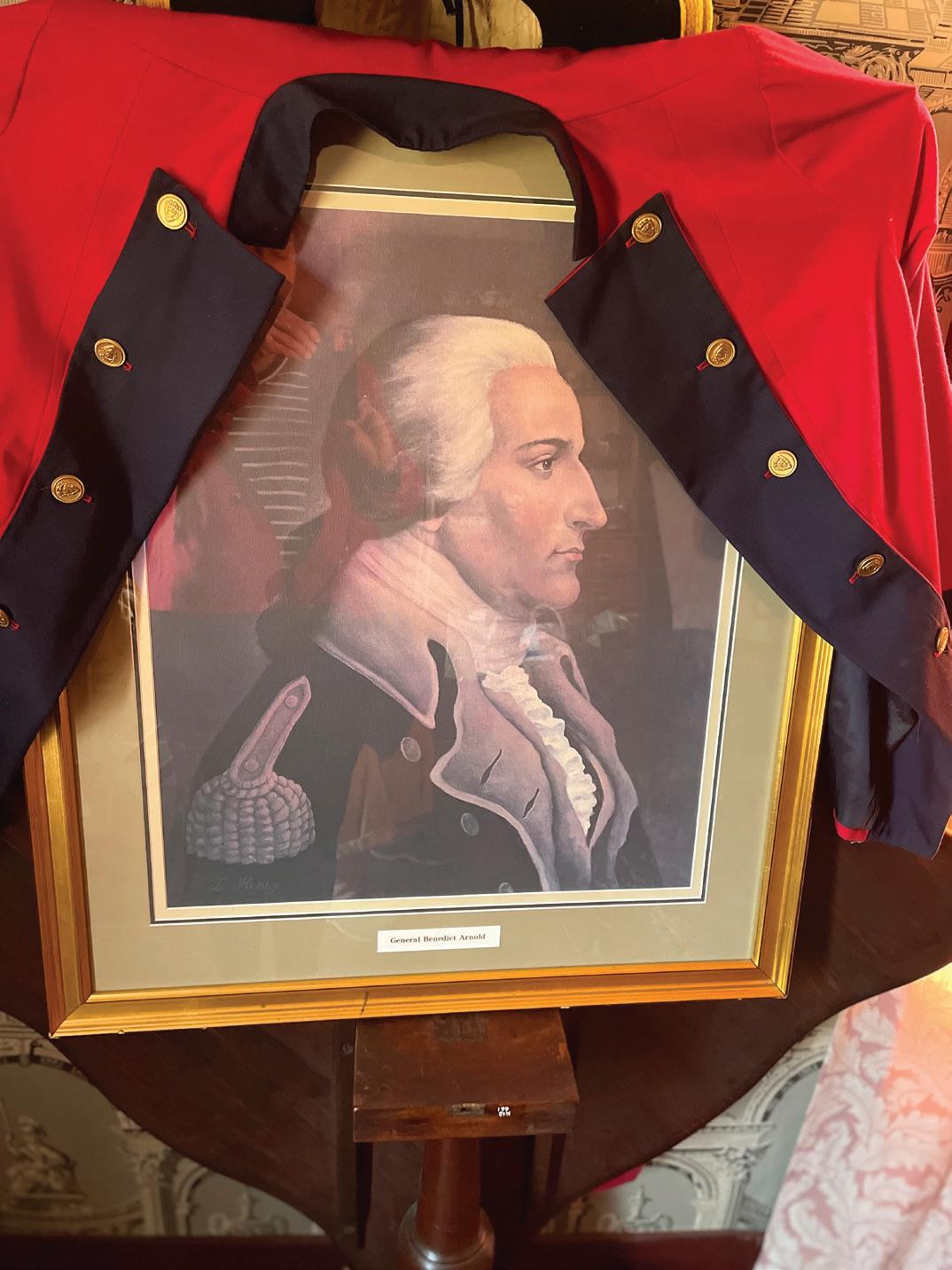
An early American flag shown at the Leffingwell House—its handsewn stars and stripes reflecting both a nation in formation and the people who lived through it.
A portrait of Benedict Arnold— displayed with a Revolutionary-era coat, underscoring his early ties to Norwich and his legacy.
Photos by Jan Tormay
Then there is the puzzle mug, which tavern owners and innkeepers utilized. “They call it a drinking game, but it’s actually a drunk test. So, if you couldn’t figure out how to drink from it, you would get liquid all over you. You have to know the trick,” Camila said.
Additionally, in Colonial times, right and left shoes were identical, so if one pair wore out, people would buy a new one.
And arsenic was used to dye black clothing during the mid-to-late 1800s. So when a woman’s husband died, she would become ill from the poisoning and often die after three or four months. People thought she was heartbroken from losing her husband, Camila said. “Now if you had money and assets, you’d be married within a month.”
Additionally, during the 1700s, only boys went to school. Girls learned letters and numbers at home instead, Camila said. They also learned cooking, spinning, weaving, and cross-stitching skills to be housewives. Children are allowed to hold a cross-stitch sample, so they can see what it looks like on the back. “And I remind them that this is not a pattern.
They didn’t use patterns. You counted your stitches on the linen.” Camila said they ask children where they think they would go to the bathroom at night when there are two feet of snow. Eventually, Camila points to the chamber pot (a small bowl), explaining that they might be asked to empty it in the morning.
Camila Farlow, (SFN) treasurer, and program organizer. and Greg Farlow, Vice president of the Society of the Founders of Norwich (SFN), which owns and operates the museum.
The summer kitchen—a separate cooking space designed to keep heat and smoke out of the main living areas during warm months. Equipped with a hand-cranked spit mechanism, it showcases colonial-era ingenuity in household management.
Small Bedroom featuring washbowl and pitcher paired with a classic chamber pot tucked underneath.
Leffingwell House Museum in Norwich CT present day.
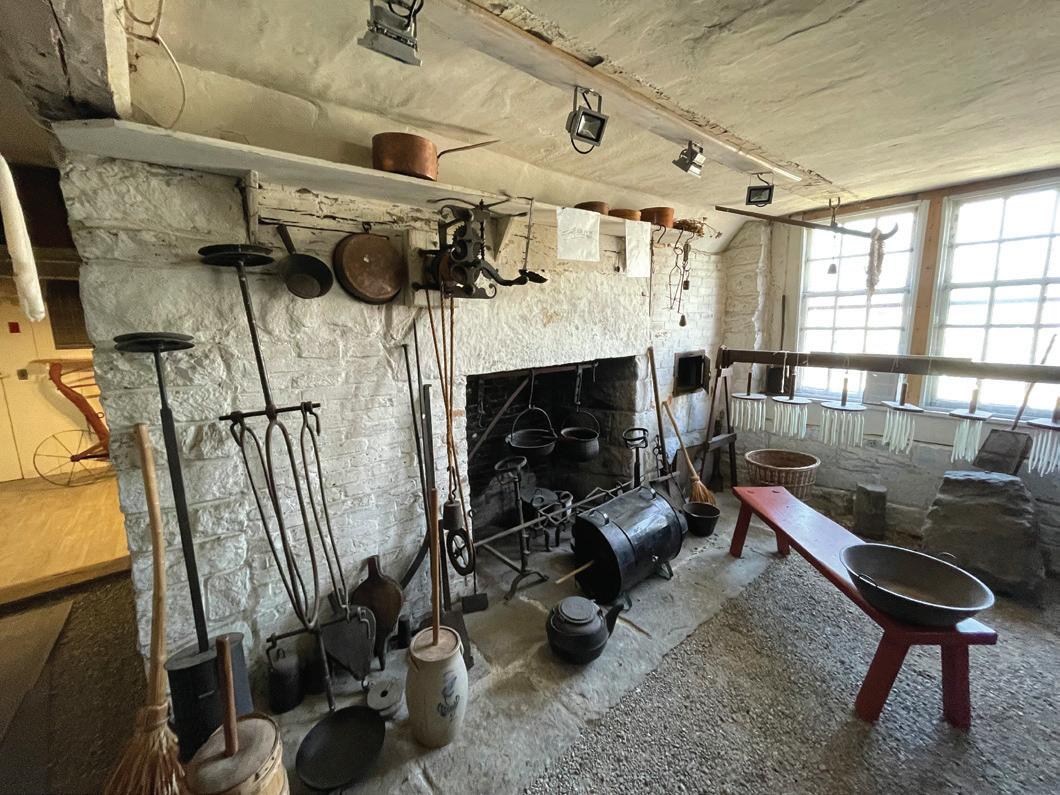
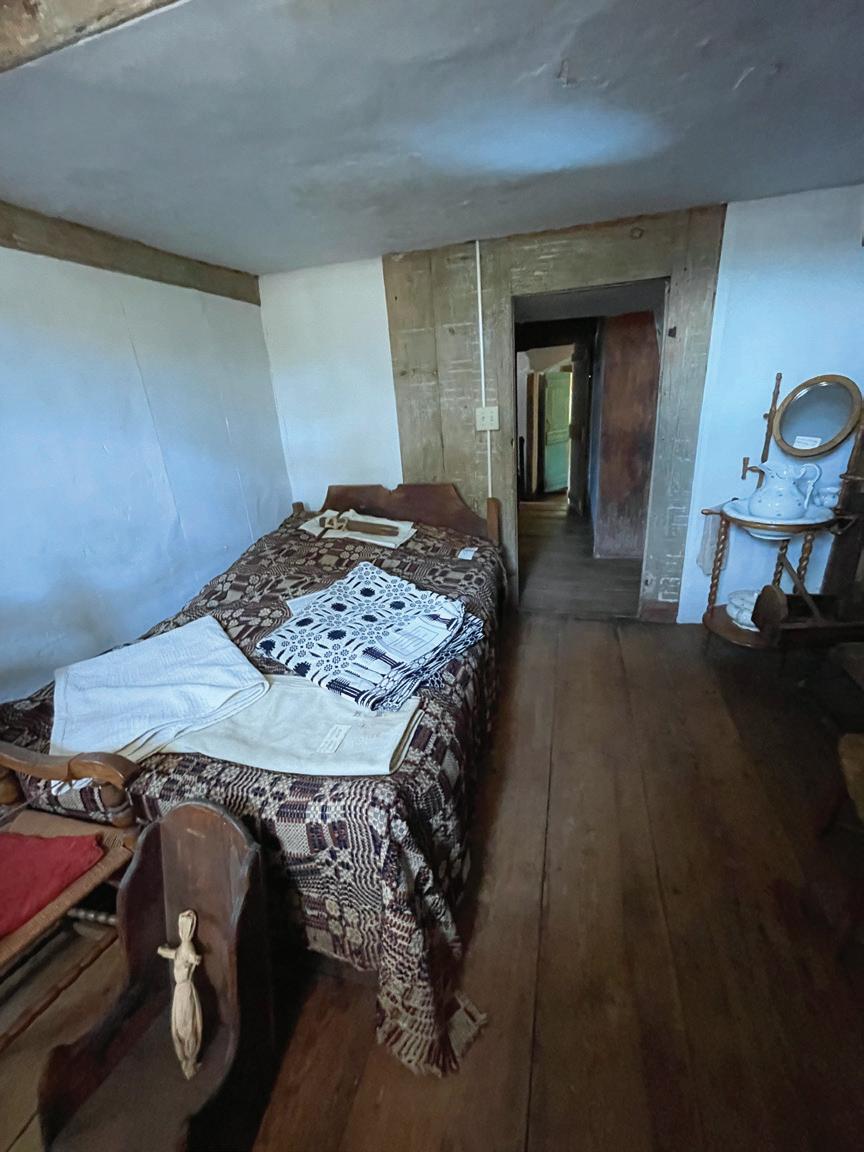
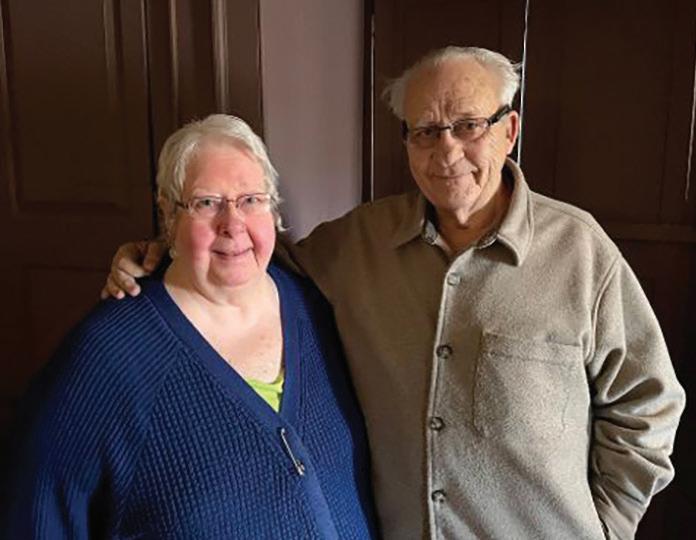
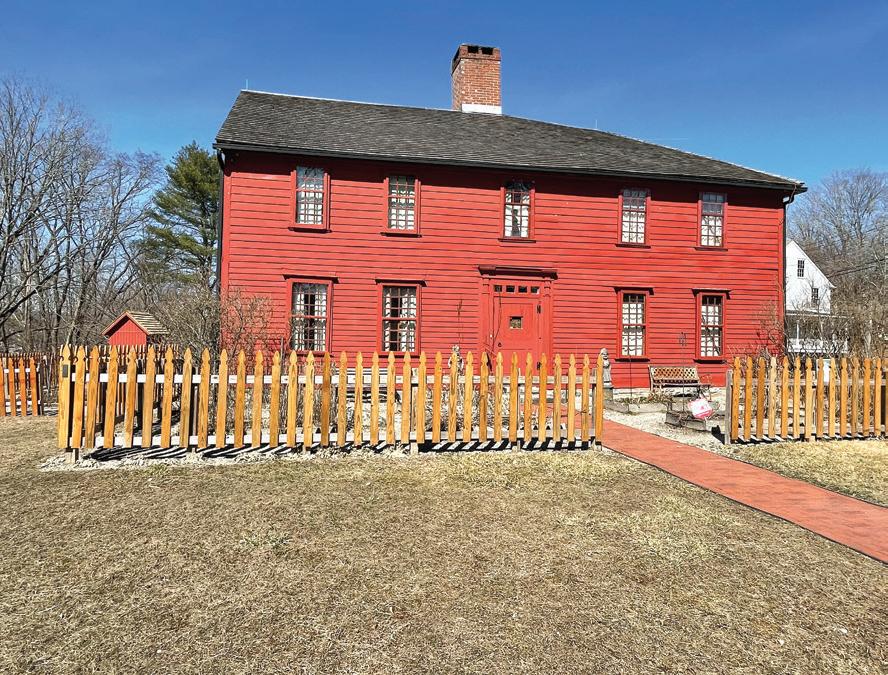
After visiting the museum, the Farlows hope people “take away” a sense of the history of our country and the people who built it, their lifestyle, and the continuity of things.
“The museum is a wonderful property and holds a special place in my heart and memory. It is one of the oldest structures in Norwich and one of the most significant landmarks from the Revolutionary War era in Norwich,” said Rugh, director of the Slater Museum in Norwich.
The Leffingwell House Museum is vital for many reasons, Camila said.
“It’s a 350-year-old building and there aren’t that many of them.” Additionally, she noted that the museum showcases the architectural changes that have occurred in the State of Connecticut and serve as a symbol of resilience and ingenuity.
Because people take everything with them when they move, she said the museum was initially empty. After many donations, it “is a repository for a lot of Norwich history,” including collections of china, silver, pewter, historical guns, clothing, and furniture.
The Leffingwell House Museum is located at 348 Washington St. in Norwich, Connecticut. For a list of upcoming events and other information, go to leffingwellhousemuseum.org, facebook.com/LeffingwellHouseMuseum, or email info@ leffinghousemuseum.org.


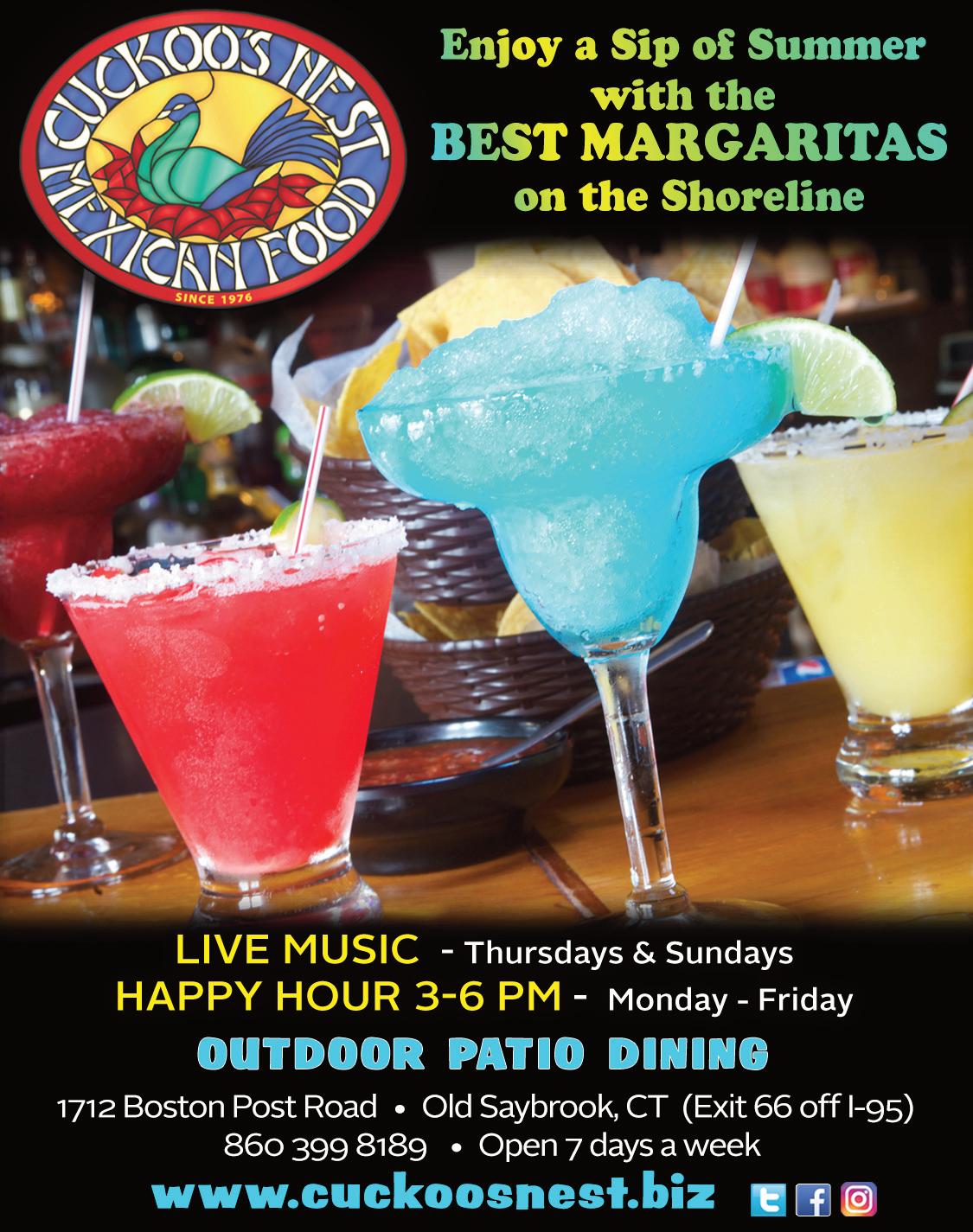
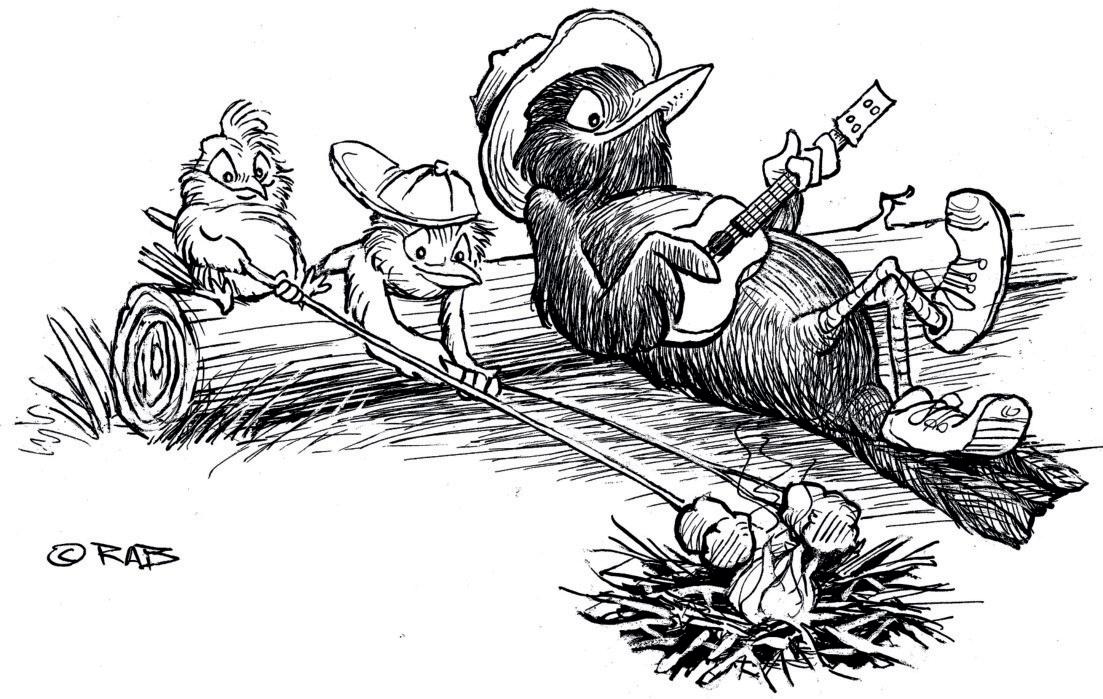














































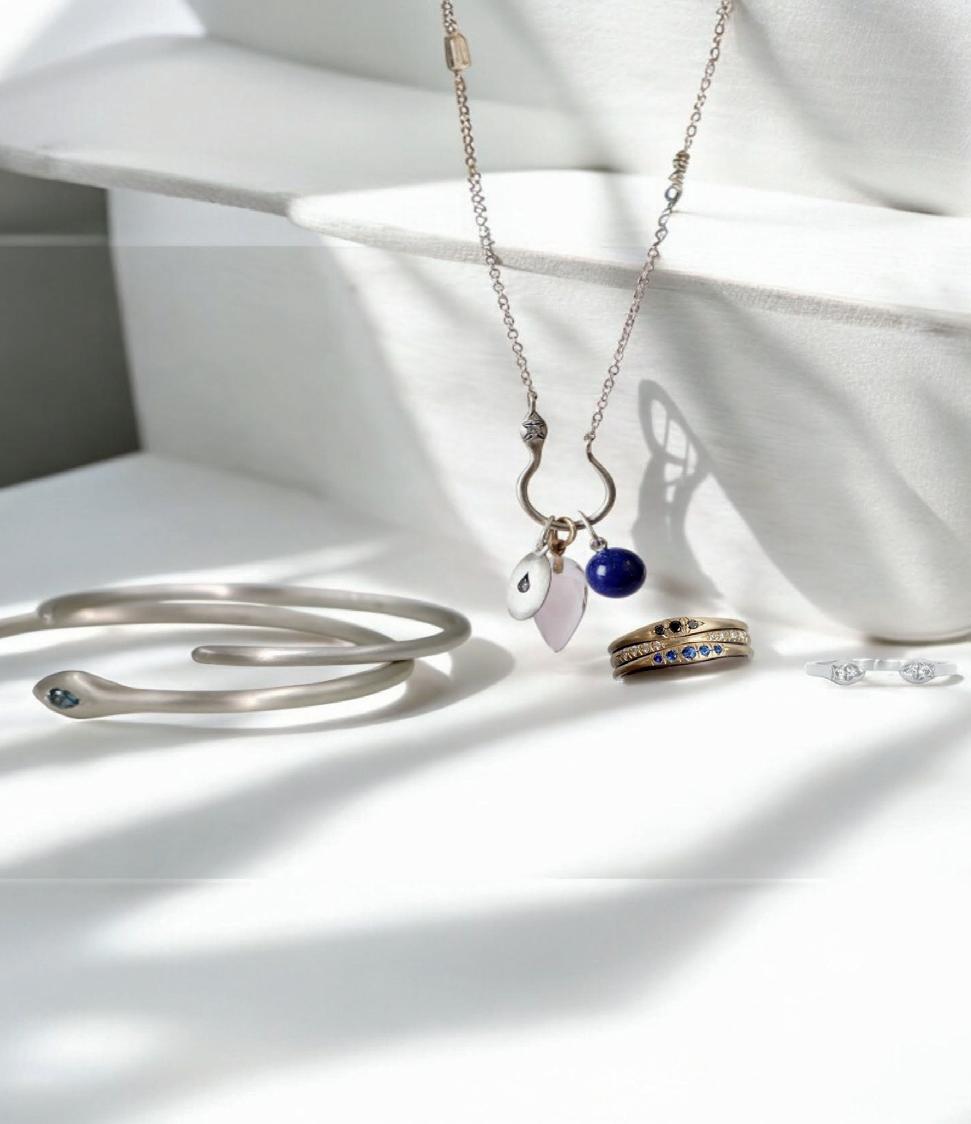




















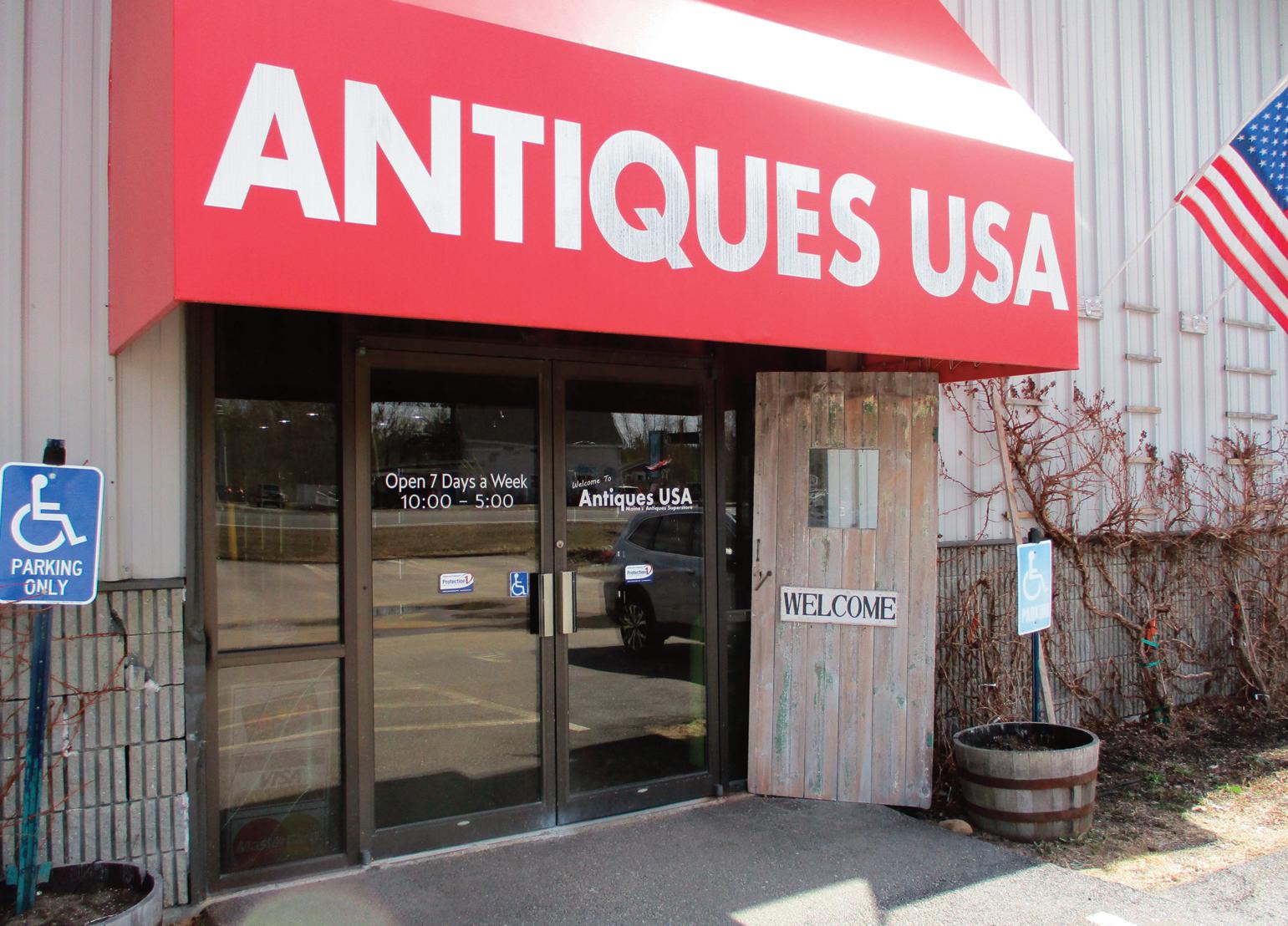
by Craig Lessard
Fewcan mix business and pleasure and admit to achieving it in the way we antique collectors can. For the antique business owner, the hunt is as much a thrill as it is for the casual collector.
At CEL, a buying trip is a great way to slip away for a few days. Just getting out of the store is a pleasure in itself. Spending the company’s money, wining and dining, and enjoying the scenery is one of the pleasures of getting away for us. Maine is called “Vacationland” for a reason. The picturesque shorelines, beautiful beaches, and quaint little towns offer something for everyone.
Our favorite destination for little buying trips is along Rt. 1 in Maine from York to Arundel.
Not a long car ride, three hours from our home in Old Saybrook CT., give or take traffic conditions. It is a straight drive on I-95 North if you leave early enough to beat the traffic through Providence, RI. Then it’s on to Exit 3 in Maine, and you’ve arrived!
For those who would rather shop for new than old, the Kittery Outlets is your place to be since every major name store is there...120 stores spread over a mile, but our first stop is in York at a little shop called Hidden Treasures.
This shop is a co-op, as are many of the shops in Maine. A co-op is a shop which rents booth space and display cases to would-be antique shop owners dabbling in the antique business parttime. This is how we got started. The shop has much to offer and has a flea market appeal.
If you like rummaging, you will enjoy this shop. The employees are very pleasant, ready to help, and prices are reasonable.
Our second shop is also in York, The York Antique Gallery.
This store is also a co-op with booths and display cases. This is a multi-level shop so make sure you are easily able to climb stairs. This store has a higher price point, offering period pieces, ancient artifacts, artwork, furniture, Americana, maritime, and much more. We never leave this store without buying. On our last visit we bought Megalodon teeth and laboratory antiques. The shop is clean and well organized, and the staff is always there to help you. I like the fact that they will take your selections down to the checkout counter as you keep shopping the floors, a nice little touch when you have an armful.
Columbary House Antiques is next on our tour.
This shop is in Cape Neddick which is right on Rt. 1.An Interesting store which consist of two buildings and a barn on the side. The building on the right is a co-op with booths and display cases. This store offers jewelry, maritime, artwork, glassware, and much more. The upstairs has items reduced in price. The second building is actually a converted house with themed rooms. This side of the business is a little upscale and is owned by two gentlemen who are so helpful that they pack your purchases well to ensure they’ll
arrive home safely. Make sure to check out the barn before you leave...there is always a bargain to be had.
Our next stop is Americana in Kennebunk.
This store has a great selection of hand-crafted décor, antiques, and home goods. The store has two levels with antiques including furniture, glass, and jewelry, on the first floor, while upstairs you will find the best collection of unusual maritime décor. Here you will also find a home decor room featuring new items such as lampshades and window dressings that are high quality. The staff is both pleasant and attentive. They also have a selection of hand- crafted whales for the walls that we purchased for our store, so well-painted that we consider them art. Well worth the stop.
A little further drive down Rt. 1 and you come to Antiques USA in Kennebunk.
This is true heaven for the antique hunter. A very large co-op with booths and display cases.You can find anything here. Their offerings are too long to list in this short article. We have purchased native American, maritime, scientific, and medical antiques for our store in the past. The list goes on and on. The helpful staff is happy to wrap your purchases to protect them for the ride home. Plan on spending time here, it is a great store.
Right next door from Antiques USA is Arundel Antiques which is yet another co-op and multilevel store. This large store offers so much, it is nearly impossible to list it all. We always come out with an armload when we exit. We buy so much for our inventory here that we truly hate to leave since it’s always a good experience.
Right between these two stores is an extra treat, an open-air flea market. The market is open most mornings, weather permitting, with vendors even setting up their booths in the parking lots of the Arundel. It’s best to come in the morning as some
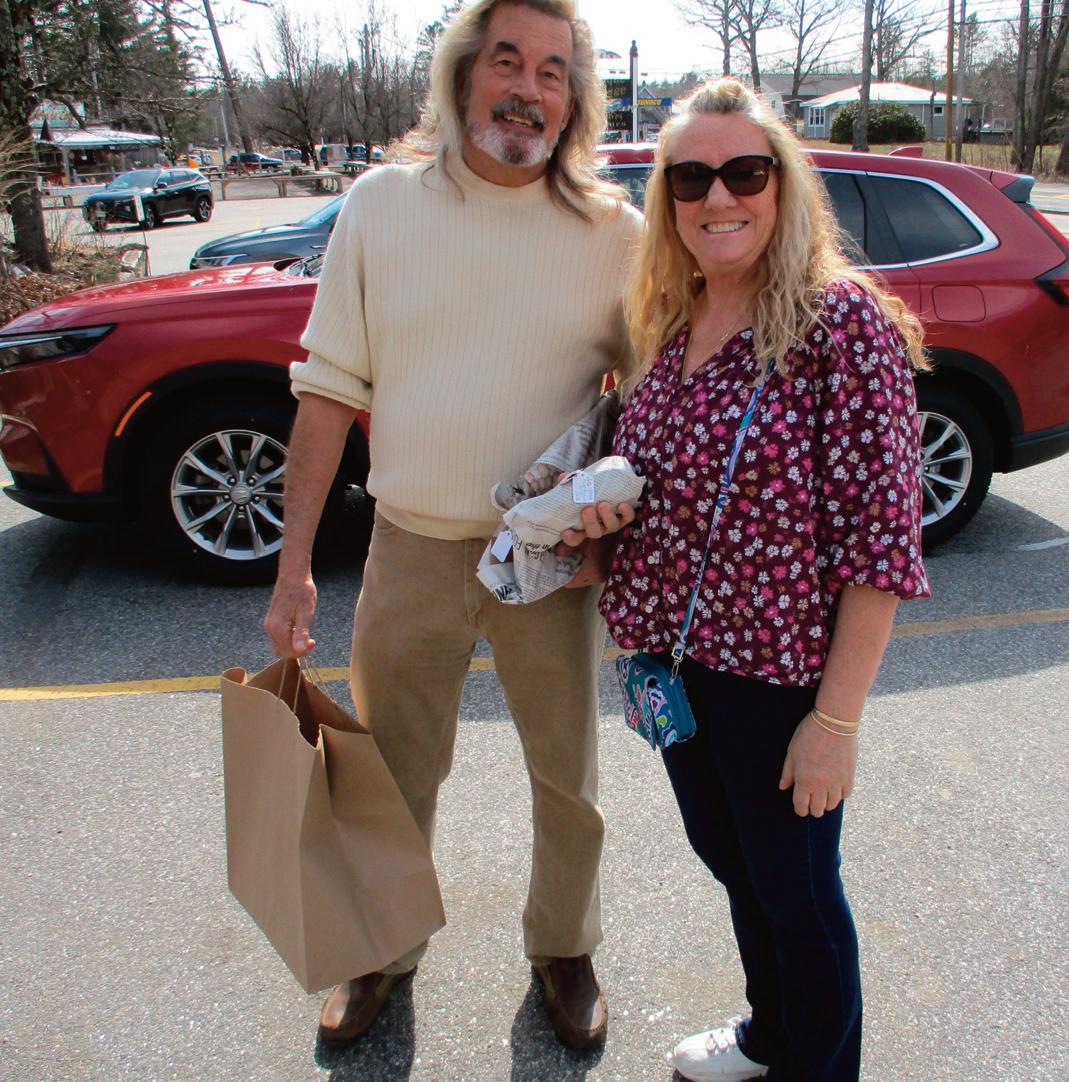
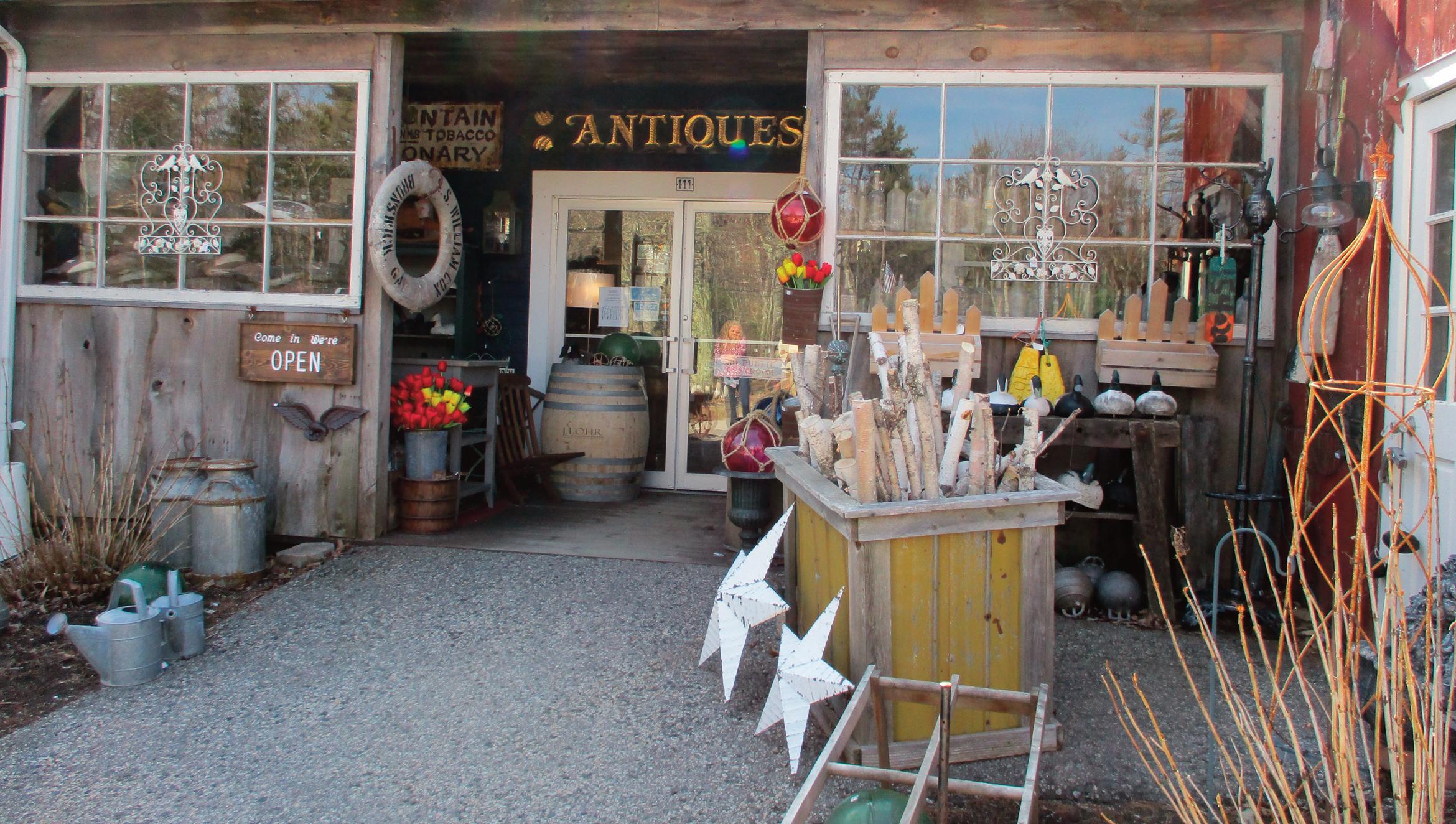
of the vendors begin to pack up in the afternoon. You’ll find a vast offering here, anything from maritime, antiques, clothing, tools, fishing, and just plain junk. The vendors will haggle with you because just like at the antiques shows, they don’t want to have to pack it up again.
There are so many antique stops along Rt.1, I wish we could list them all. Some specialize in books, paper, quilts, maritime, primitives, glass, jewelry, and even soda shop antiques. Remember to keep an eye on the signs at the side of the road as they direct you to even more shops.
About now, I’m getting hungry and might even enjoy a cocktail or two. What would a trip to Maine be without some good dining? There are restaurants everywhere and so much to choose from: Chinese, Italian, Seafood, Steak, Donuts, Ice Cream, even food trucks. One of my favorites is The Bull & Claw in Wells. This restaurant has seafood, prime rib, chicken, and everything in between. The portions are huge and could be split between two people. Great signature cocktails and desserts. My favorite go-to at this restaurant is the salad bar. The largest salad bar I've ever seen at a restaurant, and you can go back for another plate as many times as you want, including soup and chowders. Additionally, there’s a Sunday breakfast brunch. You’ll never be disappointed here!
The Lobster Pound in Ogonquit is the place for you“lobster people.”They have a large lobster tub on the outside of the building where you select your own in any size. On one of our trips, two in our party opted to share a five-pounder, so the staff split it right down the middle for them. For those of us who don’t eat lobster, there is a full
menu including steak and chicken. I do have to admit that we had the best steamers I’ve ever tasted, but a word of caution: go early. They start serving at 5 pm, and it fills up fast. NOTE: If you want to take a little bit of Maine home, they ship lobster as well.
After a big meal, you’ll want a pleasant place to rest for the evening; and you’ve got a large choice from hotels, motels, and cabins to B & Bs, yurts, camp grounds, and resorts. I have personally found that the best are the resorts with pools, restaurants, lounges, gyms, hot tubs, and continental breakfast. Some of the resorts allow pets as well, but do your homework and check first. If you are vacationing in the summer, you must make a reservation before going since summers are a very busy time for this part of Maine.
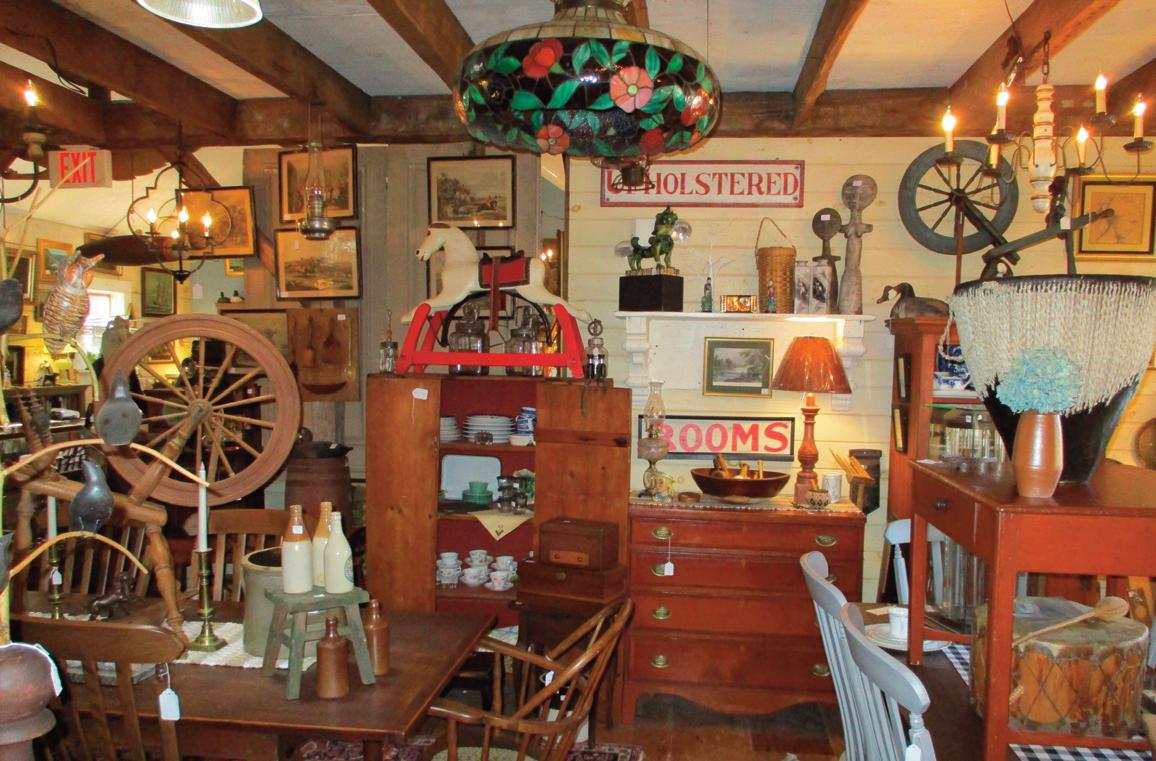
down
Ave. and see the most stunning houses and water views. If going down Ocean Ave. make sure to stop and gaze across the water at Walkers Point, the private family estate of the Bush family and the former summer White House. You can’t miss it, just look for the black suburbans.
I hope this helps a little to plan your next buying trip to Maine. Remember, business can be a pleasure...for us it certainly is. Craig
If you’re done with buying, there is still much to enjoy. You have to go to downtown Kennebunkport. This is a fun area with quaint little shops to visit and great restaurants featuring a wide range of offerings with incomparable views.
If you wish to see a little more of coastal Maine, indulge in a whale watching cruise or simply go fishing. For some quiet time there is the Kennebunkport Beach, a beautiful long beach where dogs are allowed to frolic and play. We have even seen horses on this beach. To see some truly spectacular scenery, take
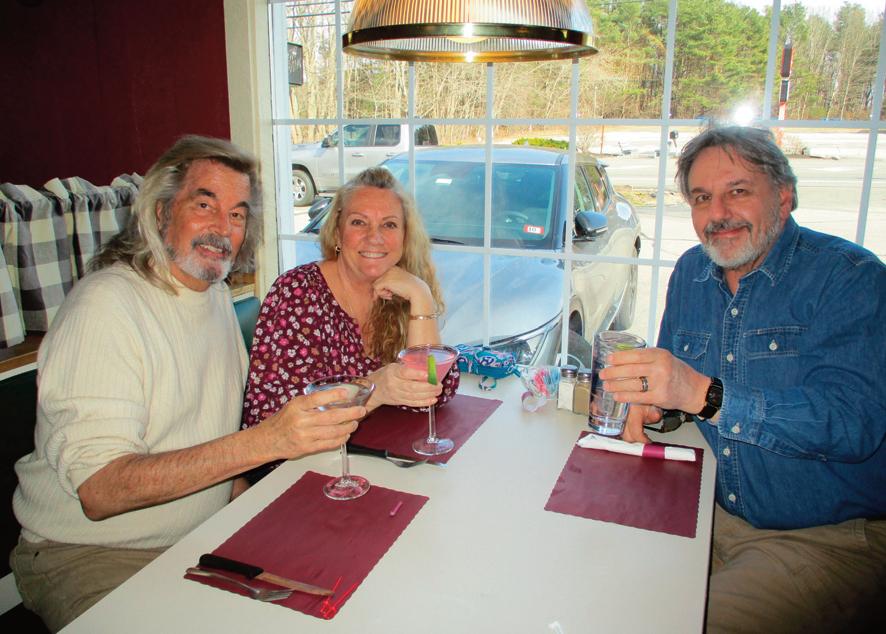
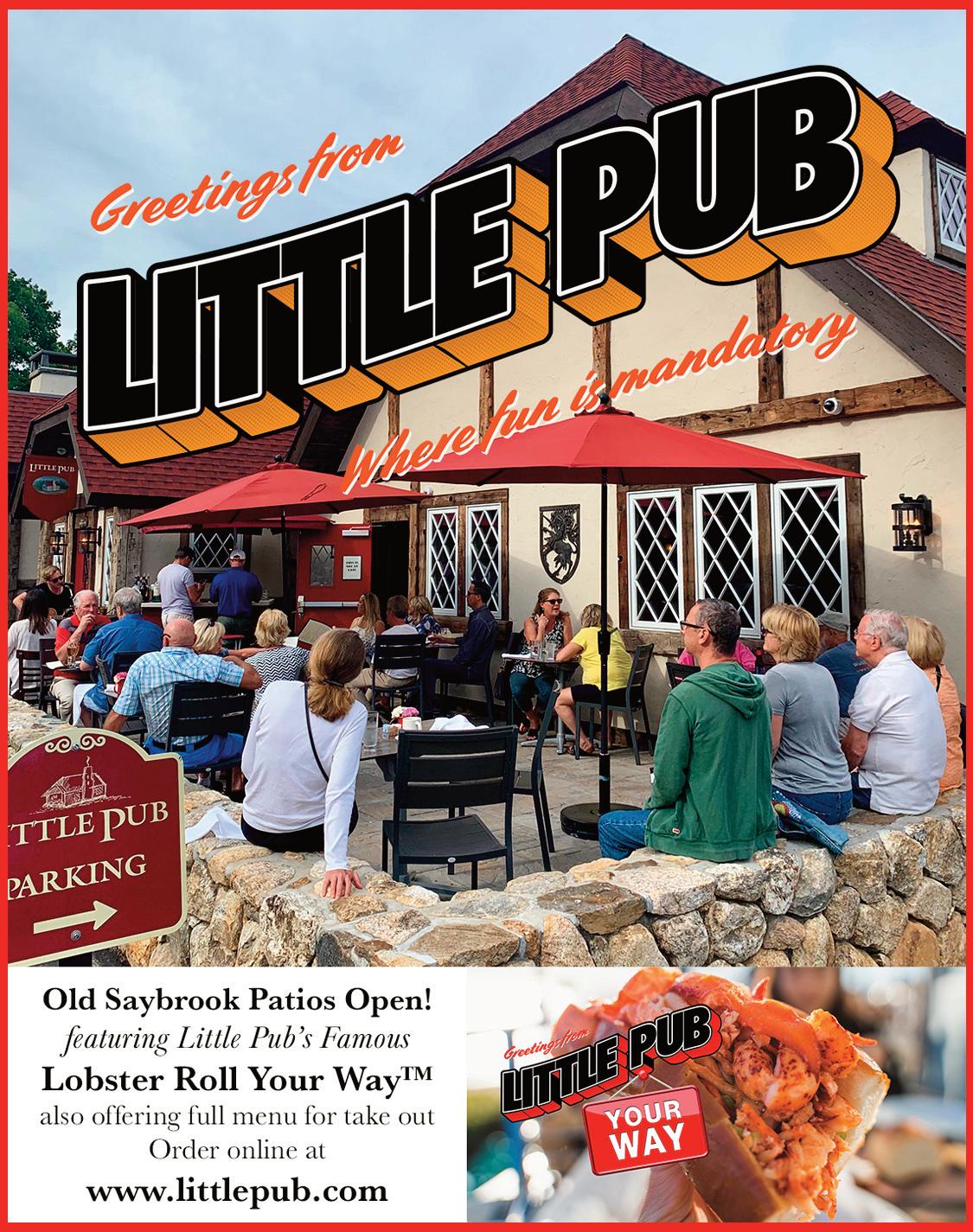
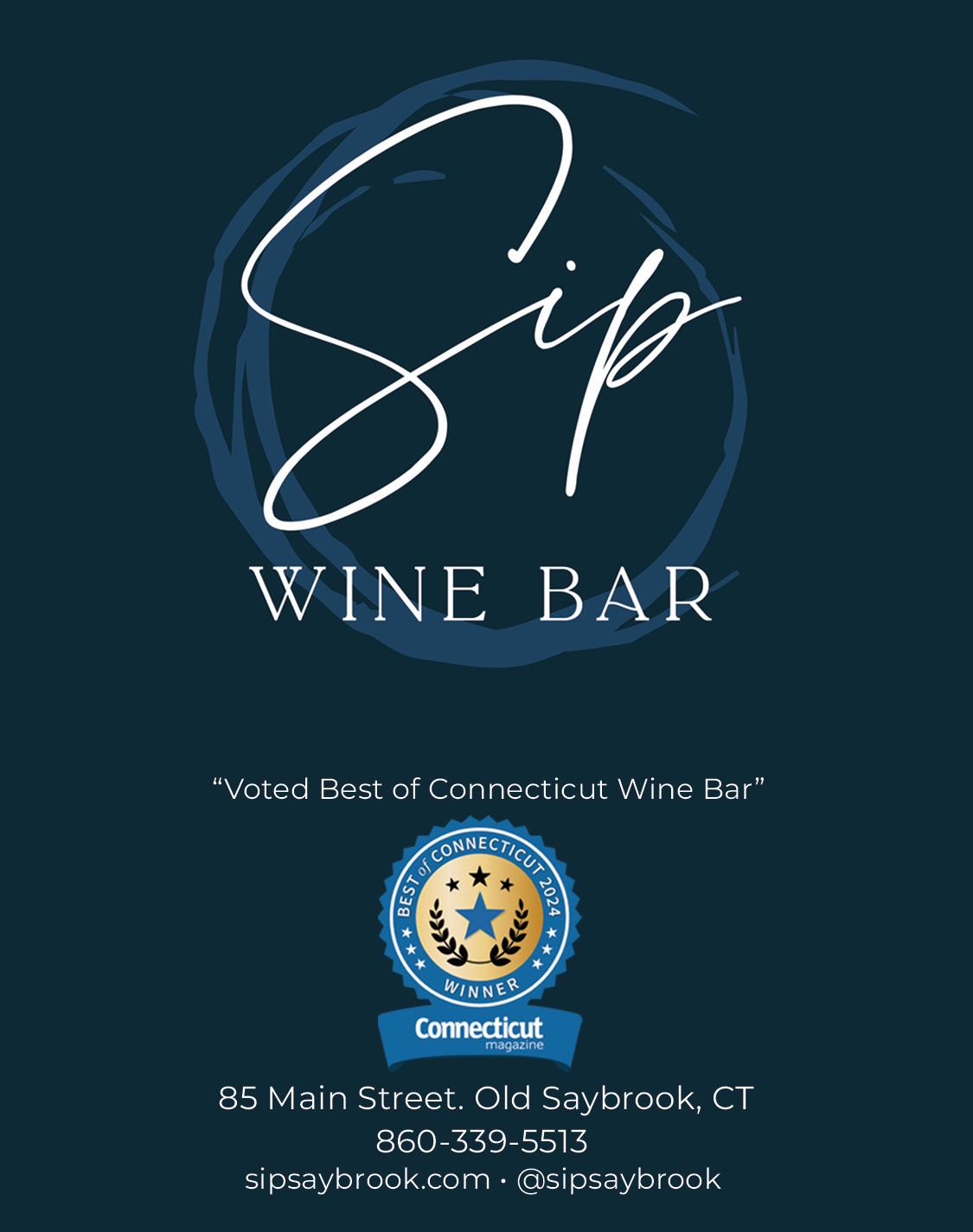
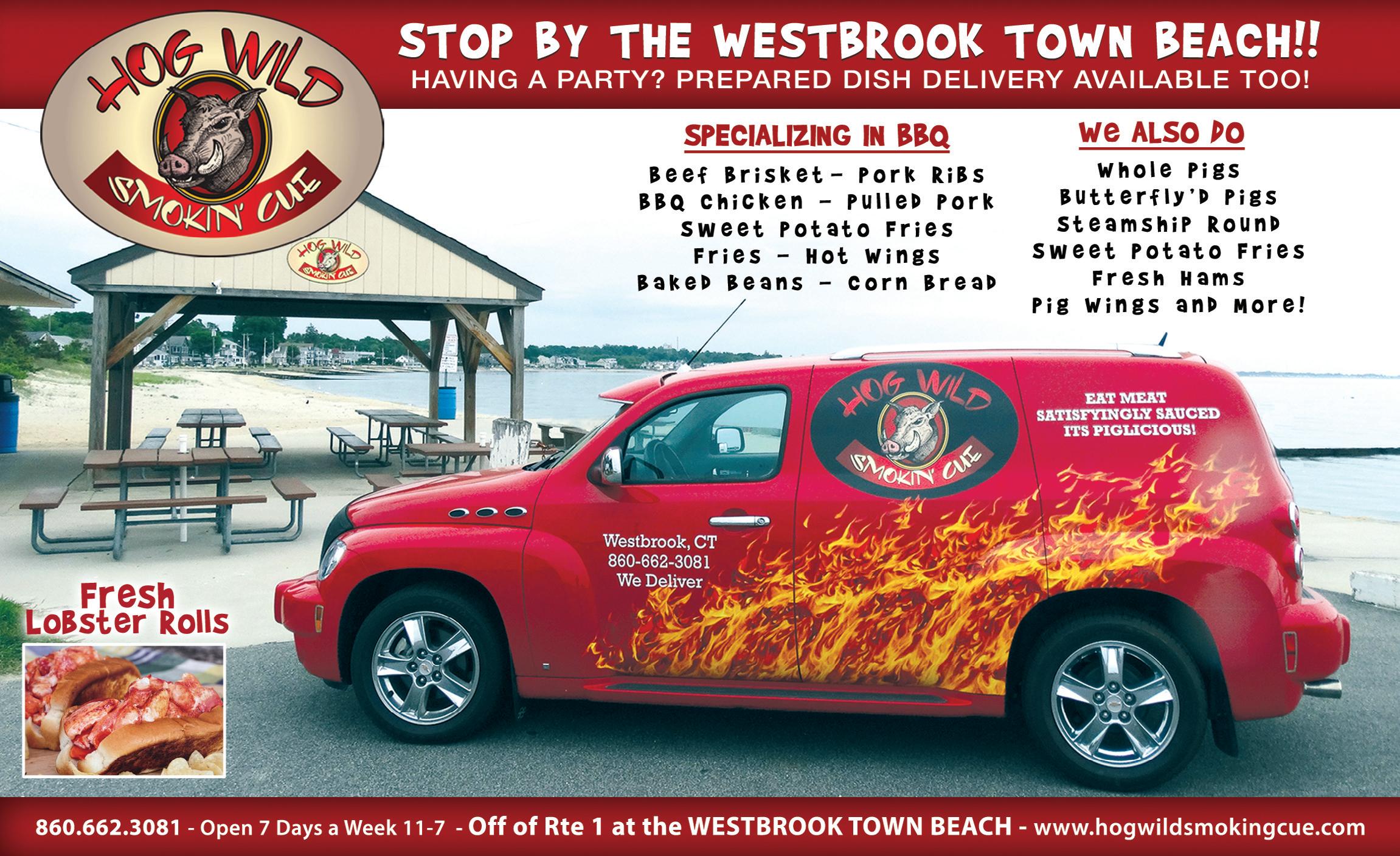


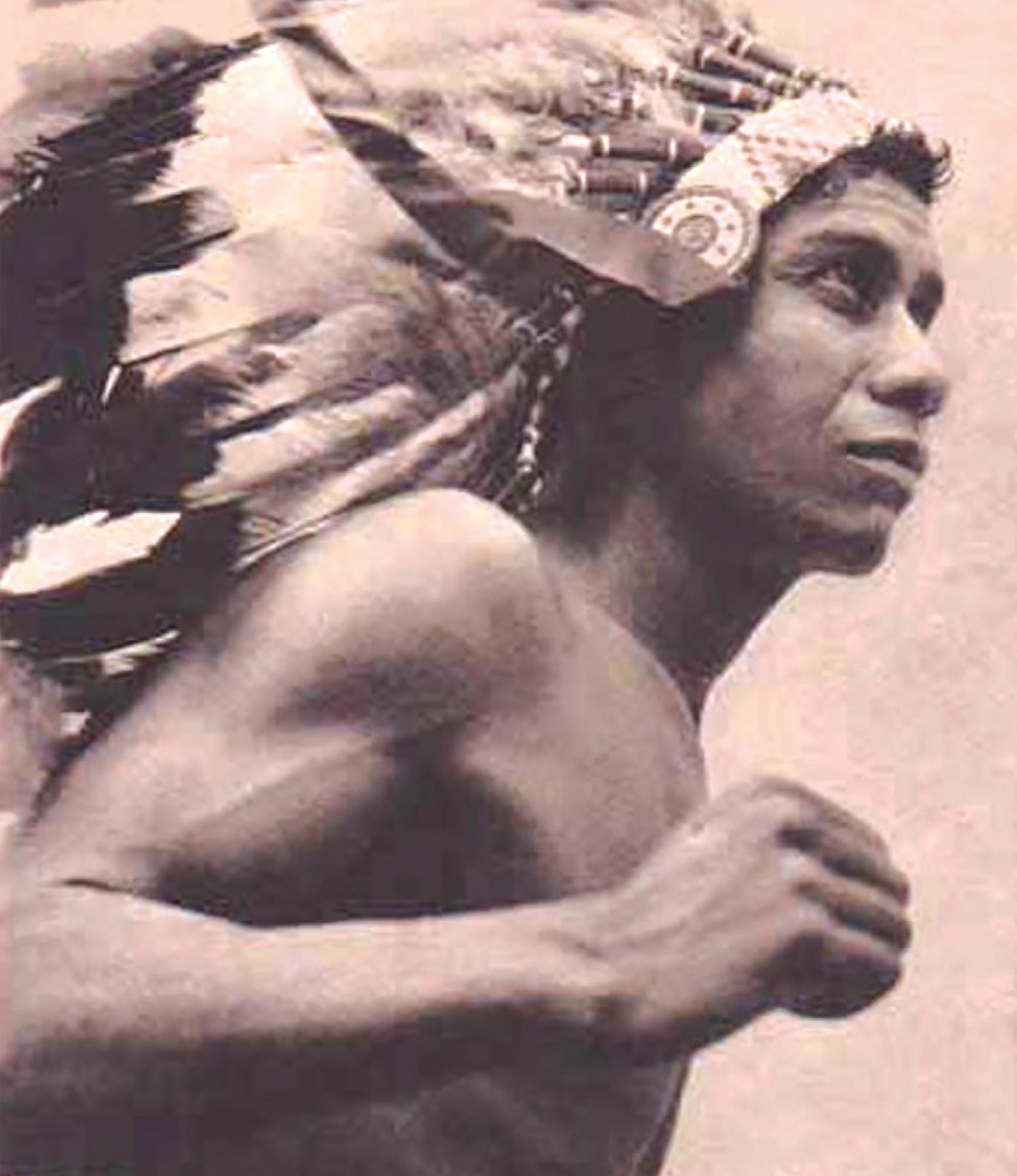












maybegininapackwithhundr
e is no e is no finish. Ther rt, ther , focuse r, heir heart keeping in cadence ont o they just put one foot in fr unning a single race; not just r est of the world. om the r fr
Although they unner is unique. r ss y own, His name was Ellison Br e is just now sense of time. Ther e is no star straight ahead. Ther with the pounding of their fee of the other and keep going, th unning for life. S they will be r e marathoner knows they ar A ffff may begin in a pack with hundr a solitary sense of being cut of ., but those who knew him Sr .
he makeup of a long-distance T redsofothersthereisalonelines
e is a lonelines eds of others, ther et, their eyes glazed over o ed t ss, the age of 12 to find work and Because his family lived in abj giving them the right to vote u ejudice against them was ep pr eco tribal nation, a people not r natural athlete, born in 1913 as un for m the time of year and r om branches, dive into swing fr arzan” because o calledhim“TTa did whatever it took to put foo arzan left school a Ta y, until 1950. pic, with Rhode Island not even ognized as citizens until 1924. T s a member of the Narragansett miles. He was, without question, egardless o any body of water r ees, oclivity to climb tr of his pr ject poverty, T od at The t , a of came into his life and changed on the table...then shortly ther d it for good. ippy” Salimeno T To r, reafter, Tom “T
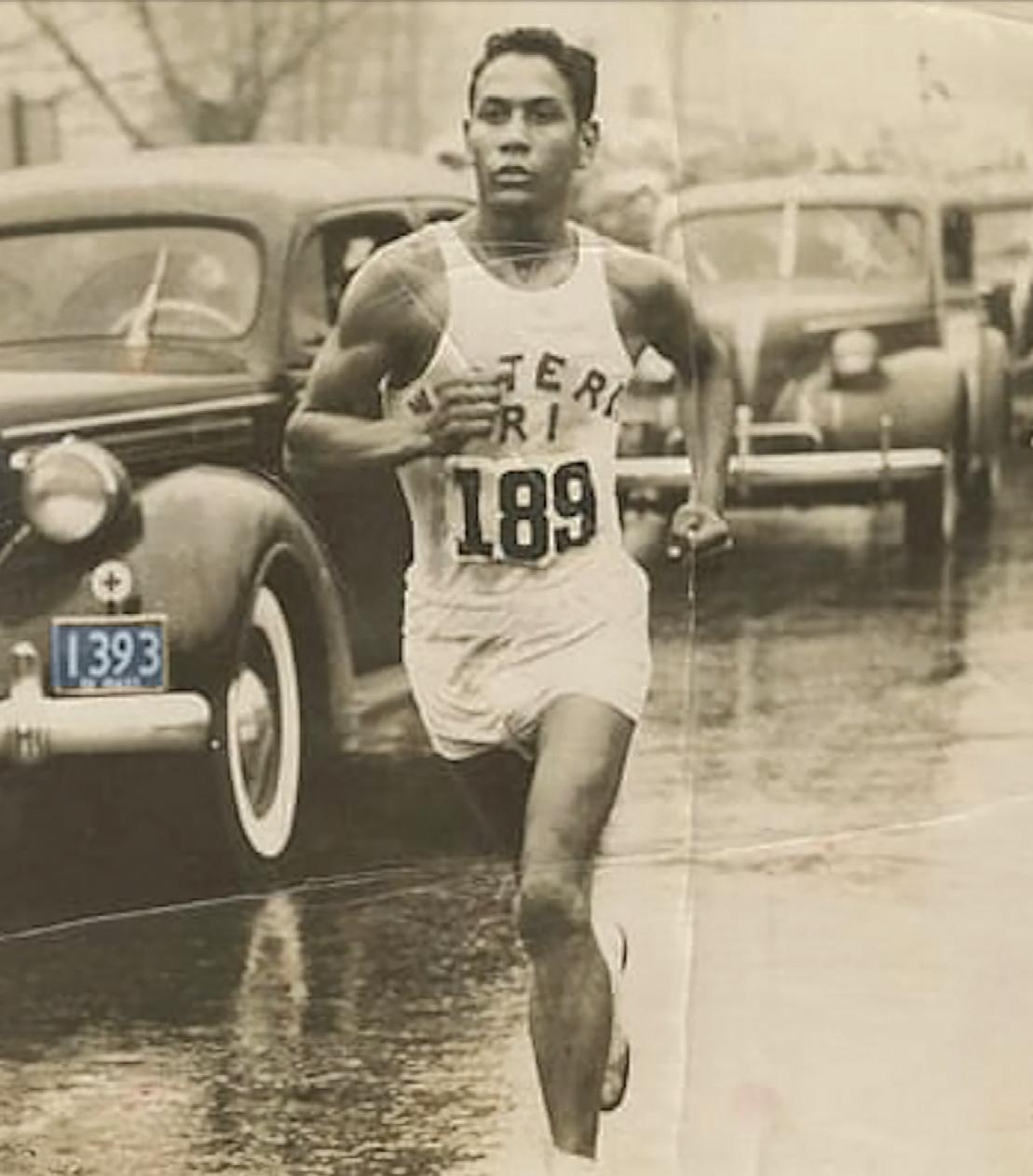
g ,gf




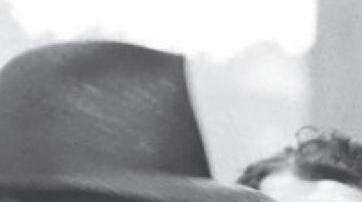
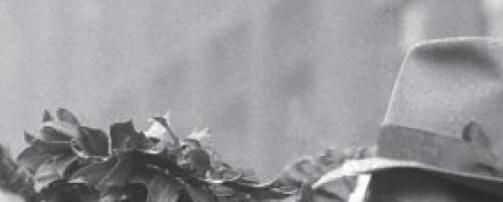
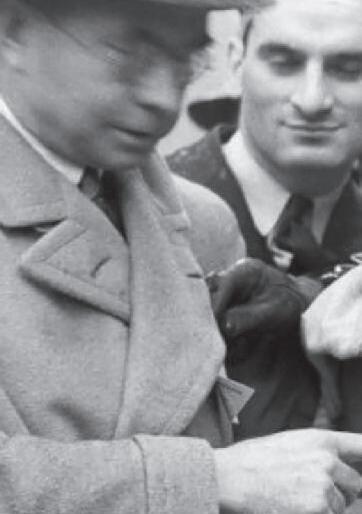

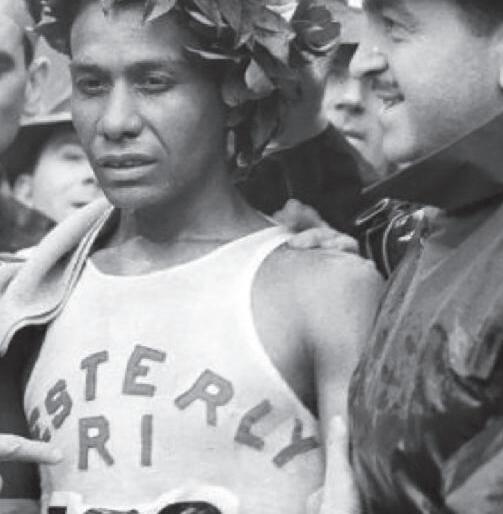
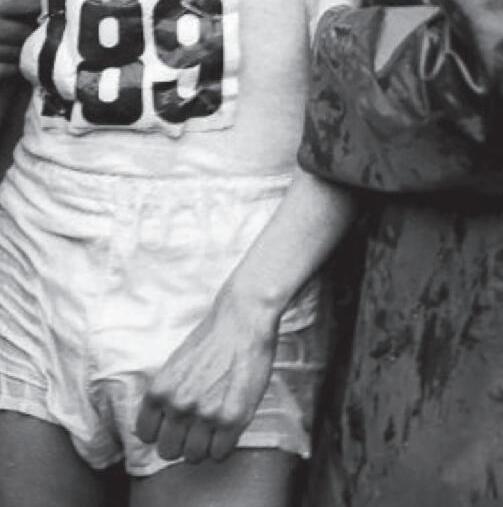














own won his fi time him them toru and Salim In 1936 Br ippy told him, “C Ti y..The eached the vil manr un 15 miles to the ne , w y, dr meno was a local at unners. One day

m the whole way e.T




first Boston Marathon becoming the first Native Am e 16,” an Come back when you’r arzan, who was on Ta ippy a kid had be Ti

ext village, and he’d meet him th Tiipp




arzan himse age, something T
o the world. He could do anyt

thlete who was a champion at tra while training another man, T llage, he told T e“kid”wasT merican to win the race. d he did. The nly 14 at the een following e. When her py told him aining boxers said mom com The ont terri ever ardu dwithallthebrag ment he came into mpete on the big st e was no question er Taarzanuntil eported T ific kick,” r ry other day and do egimen he cra uousr totrainT








ed him to Taarzanrequir afted for T o sprints on the of Tippy’s son, Tom, Jr don’tknow thing and lf knew the eady to was r My dad went Taarzana un 15 miles r gave T

arzan w ippy felt T n about it. T gadociohecouldmuster etired.” he r ., adding, “M r. To Ti f-days. “That g ff
isno mot wor but Thre alm at th why rathonhekickedoff d of exactly w orecor
“Id r
arzan’s m Ta use I’m going to win this race he starting line at Hopkinton.
om p ent called a singlet made fr at the starting line. In place of a s
ess and an o ’s dr ther
what happened, but halfway thr old, worn pair of high-top track
e a sleeveless garme r he still showed up a e the 1 ee days befor mostdid. he finish line beca y I have to go to th d with all the brag fhisshoesandranthefinalmile
, “I d r, gadocio he could muster 935 Boston Marathon, T esbarefoot ough the e shoes. Ther pieces of his shirt, he mother died, And he e.” Just put me don’t know
efoot. es bar


h He d when he did, he won th efooted triba ong, bar str have been a win becaus did not win that day rathon, he kicked of he 1936 Boston Marathon.
. They knew he’d be b al member
se people sat up and took notice , but he finished 13th which mi y, f his shoes and ran the final mile y And ack. of this brave, ght as well
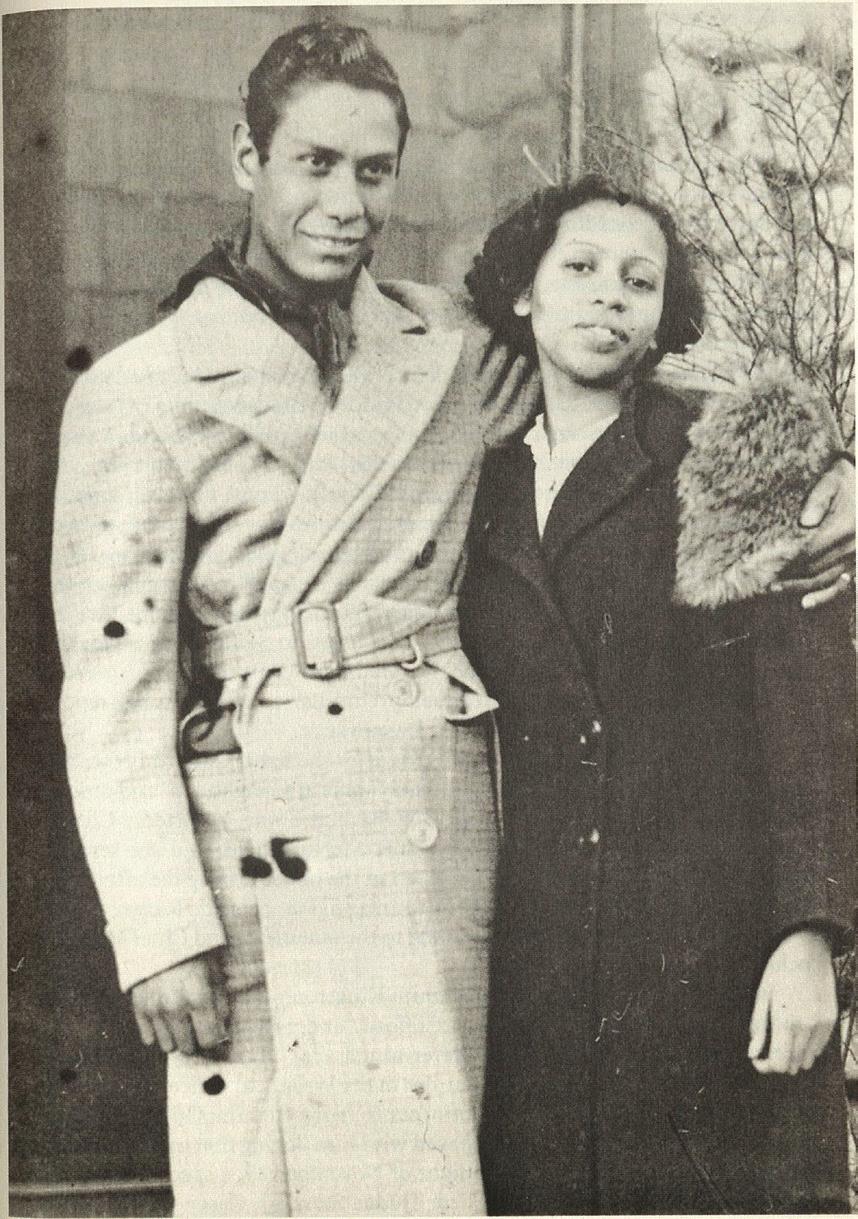
But something even more amazing happened that day. As the runners were approaching the punishing four hills in Newton, Tarzan was clearly in the lead, but Johnny Kelley, a previous winner and crowd favorite, was quickly gaining on him. As Kelley passed Tarzan he gave him a playful pat on the behind, and that was all the motivation Tarzan needed. He quickly summoned up the, “I’ll show you!” that was an integral part of his DNA, unleashed the final gas in his tank, and crossed the finish line, leaving Kelley, (who went on to run Boston 61 times, finishing 58 races), in fifth place. When reporting on the event, a Boston sportswriter named that hill “Heartbreak Hill.” The name stuck, but few know it was because of this fanatical Indian from Westerly, RI.
Next stop for Tarzan was Berlin, Germany, as a member of the 1936 Olympic Marathon Team. Jesse Owens had already won four gold medals early in the Games when Tarzan entered the Marathon, vying to make history, but he was too cocky, having not trained properly during the trip. Unfortunately, just before the 13-mile point, he was stricken with a leg cramp and disqualified when a spectator stopped him to massage the pain. The Olympic failure did not sit well with Tarzan, who made history later that fall when he ran two marathons in a single weekend...and won them both!
Still, Tarzan was not finished. He trained strenuously but not consistently, using his jobs chopping firewood and stone masonry to build strength. Then, six or eight weeks before a marathon, he’d step it up with 17-mile runs or even a 26-miler, equal to the length of a marathon. In 1939, Tarzan once again not only won the Boston Marathon but set the American men’s record, which he then broke just weeks later. It seemed there was no stopping him...until the awful night he was run over by a car in a Misquamicut Beach parking lot. He was 61.

Her name is Serena Bates, and she’s very well-known and respected in the fine art world, both in the U.S. and Canada as a consummate master sculptor. It’s why Tarzan’s family and a local committee of runners and others commissioned her to create a bronze statue of Tarzan. Although he is a legend in Westerly, RI and in running circles, his fame as a marathoner with his remarkable history, talent, and quirks is not widely known. It has been long overdue to create a monument to this outstanding individual.
Bates, who has been trained at the Lyme Academy College of Fine Arts and the Rhode Island School of Design, holds so many distinguished awards in the field that they cannot be listed. But check her website, it is stunning. Her worldwide awards and recognition are legion, her extraordinary sculptures brand her as a consummate storyteller reflecting narratives defined by her work. “I tell stories through art,” Bates says. “I coax form from raw matter.” Which is precisely what she is doing for The Tarzan Brown Project, an initiative begun by his nephew, Byron Brown, Chief Sachem of the Wiquapaug Eastern Pequot Indian Tribe, and a handful of other family members and local residents. Nearly a year ago, they commissioned Serena Bates to create a life-size statue of Tarzan as a lasting memorial to this extraordinary athlete who made his mark in the runner’s world, and more importantly, made his mark as a man.
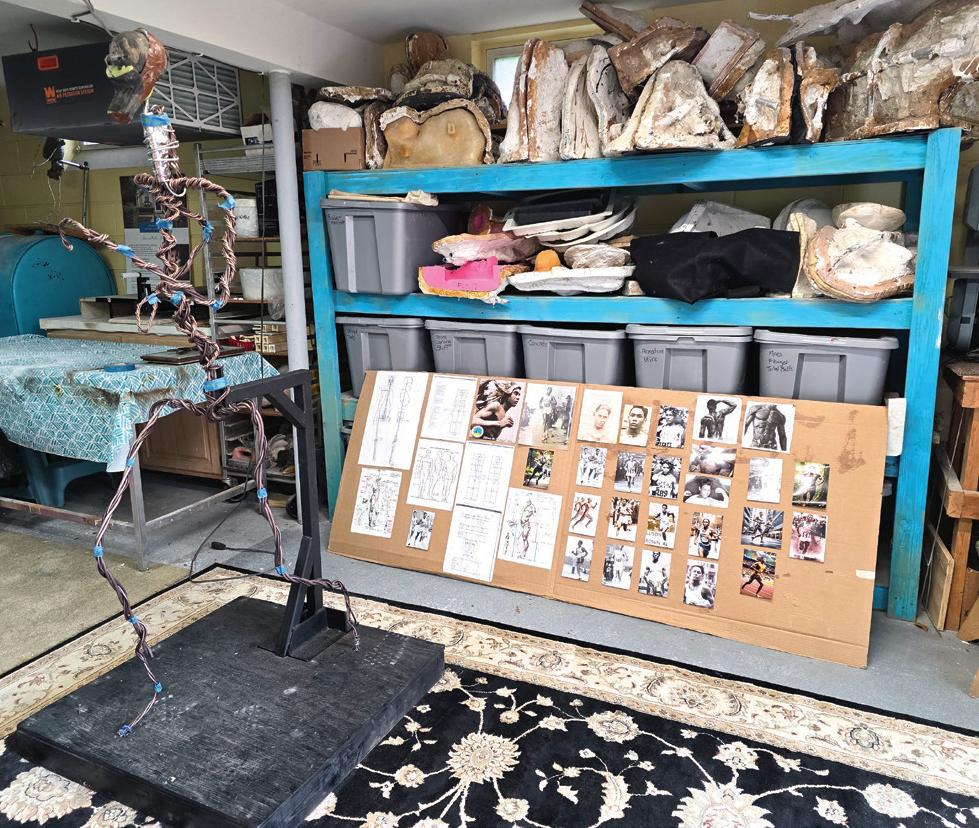
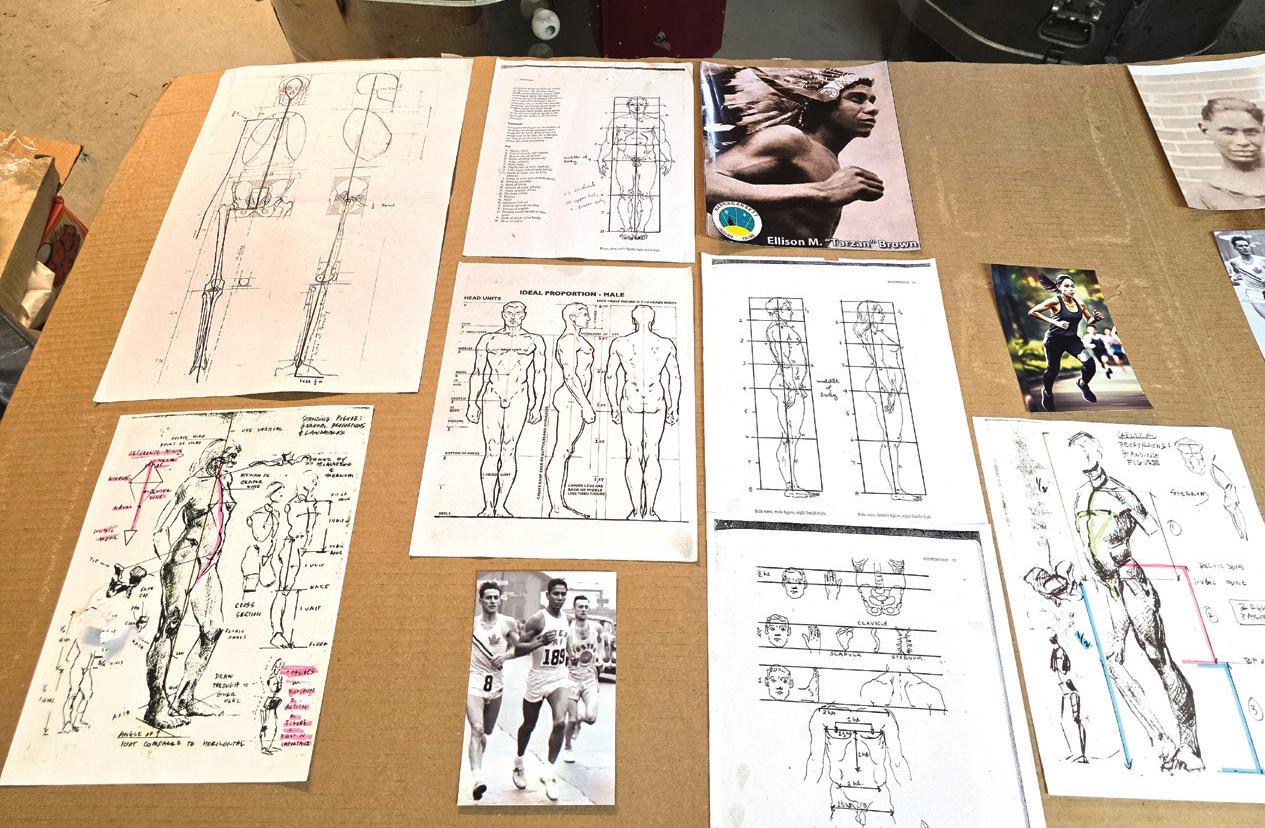
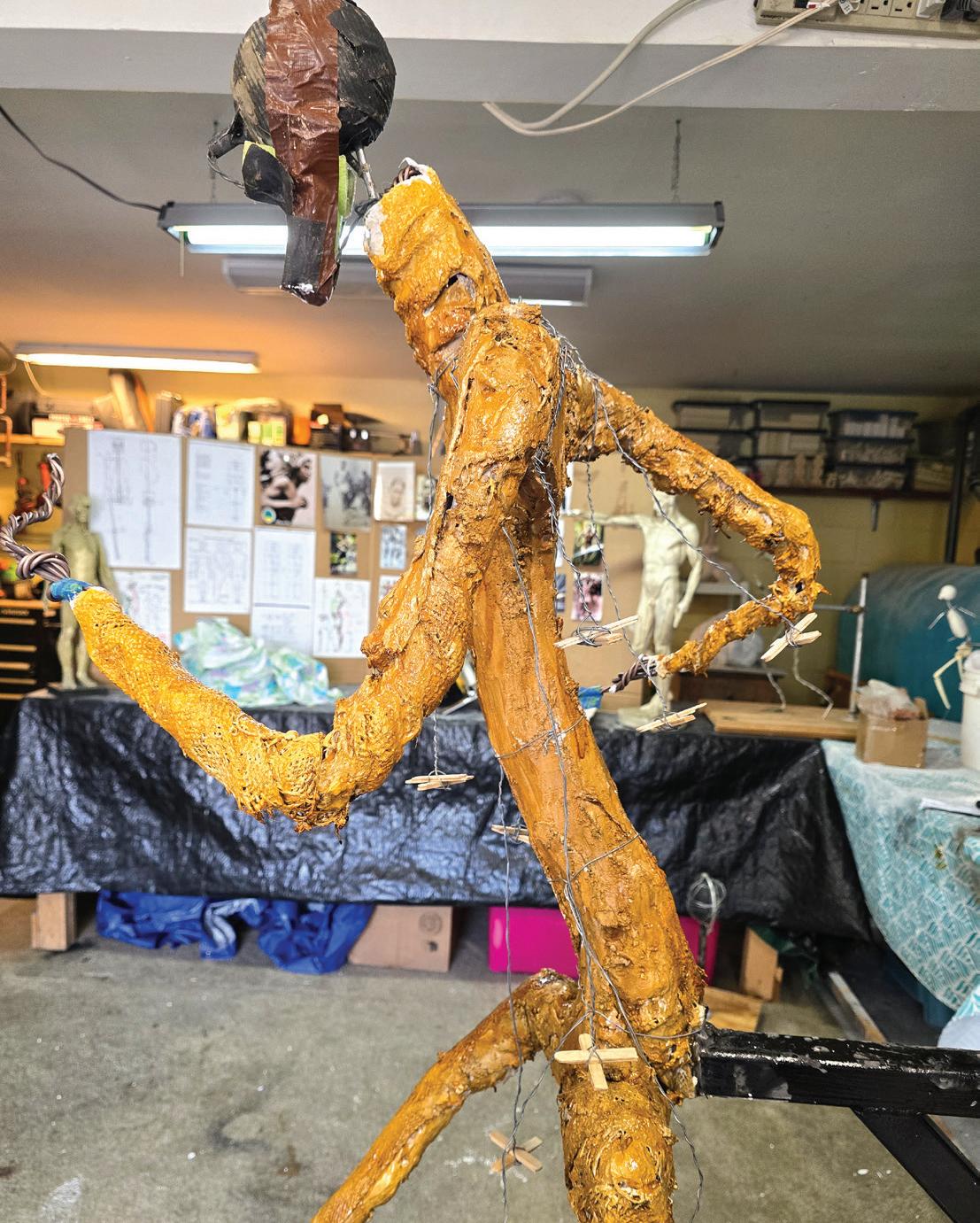
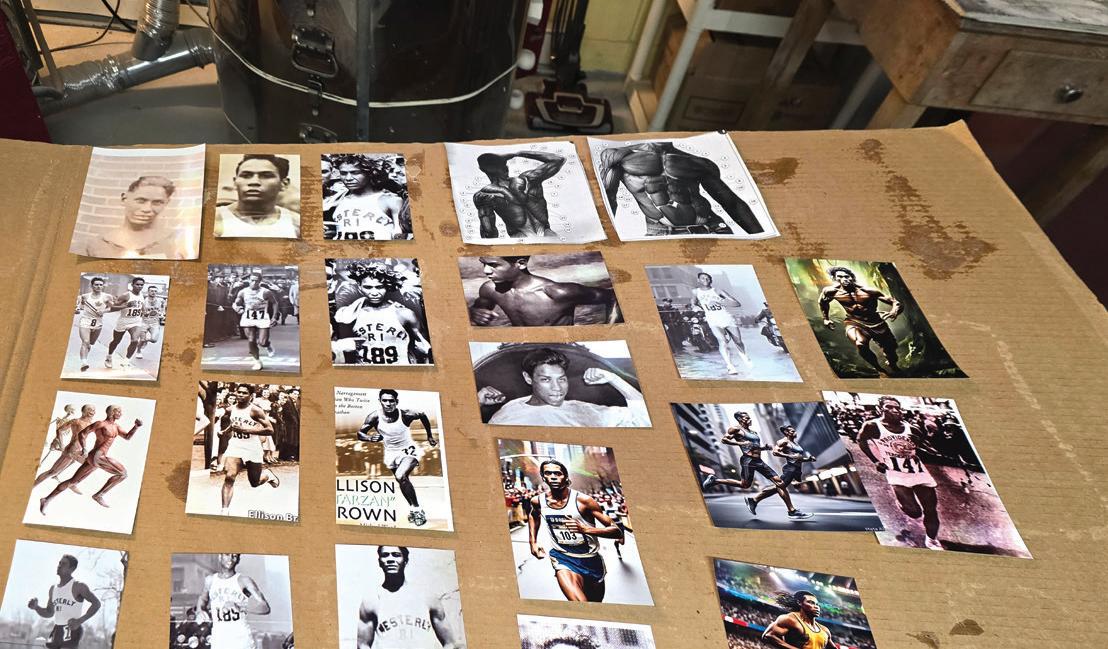
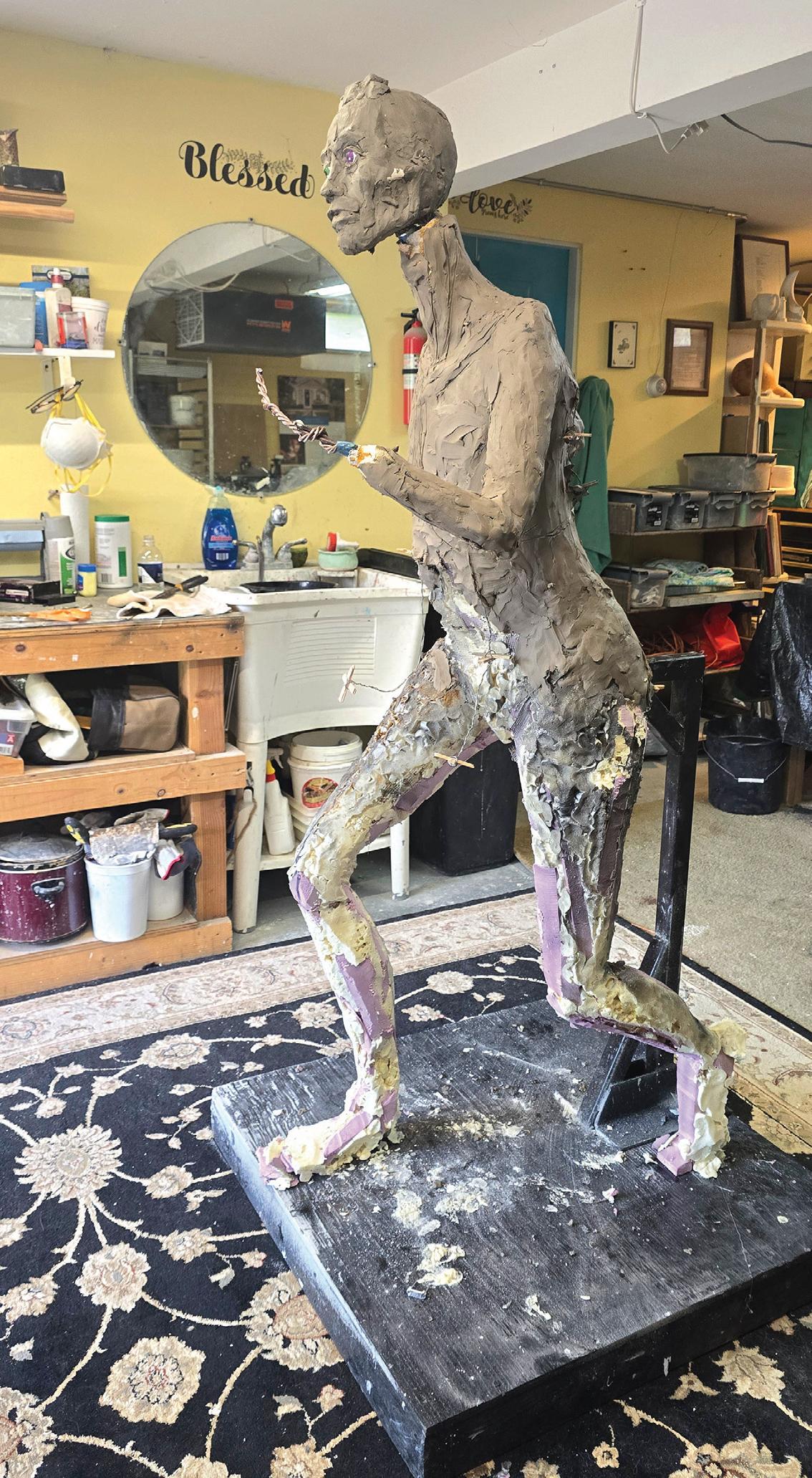
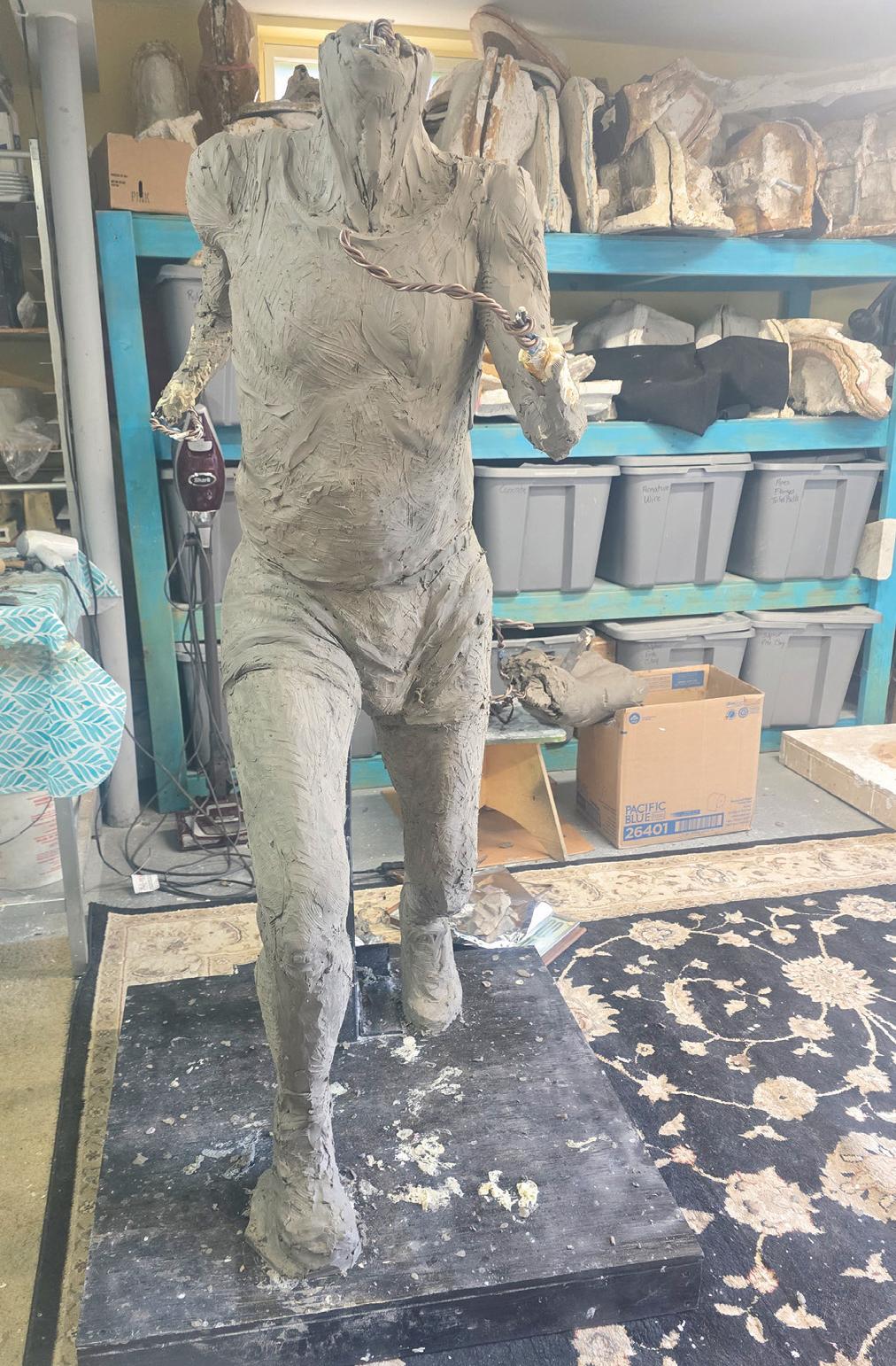
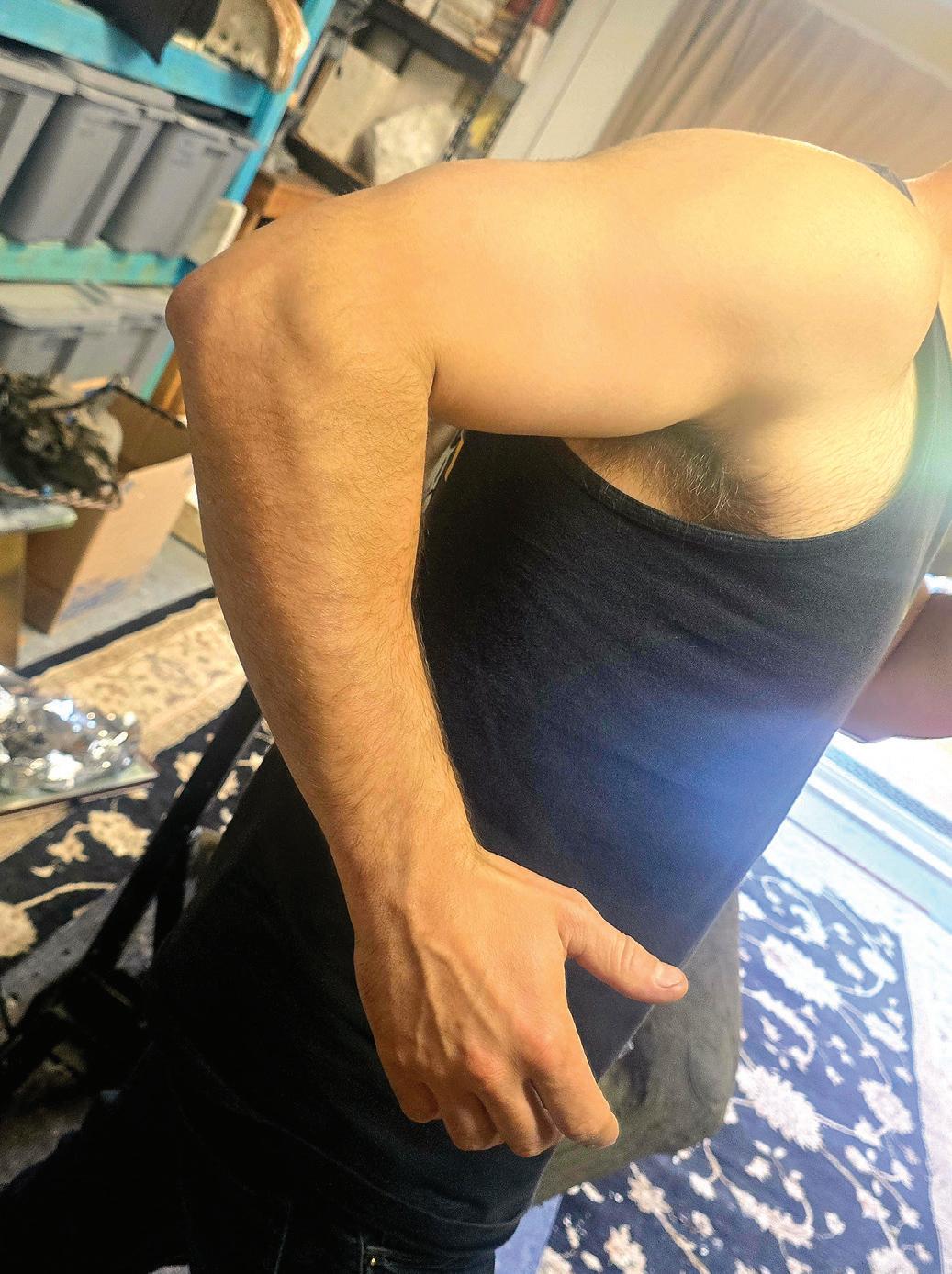
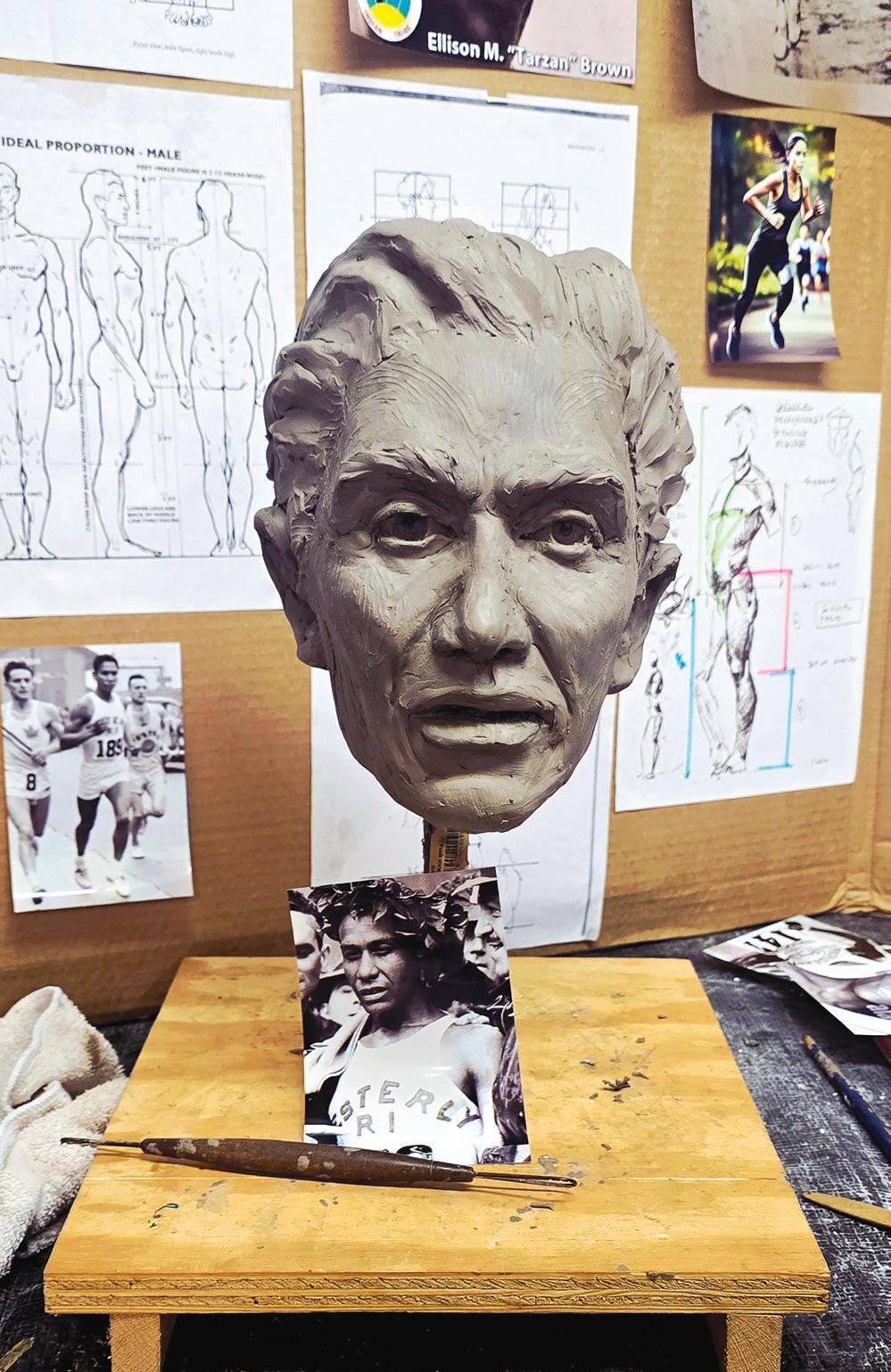
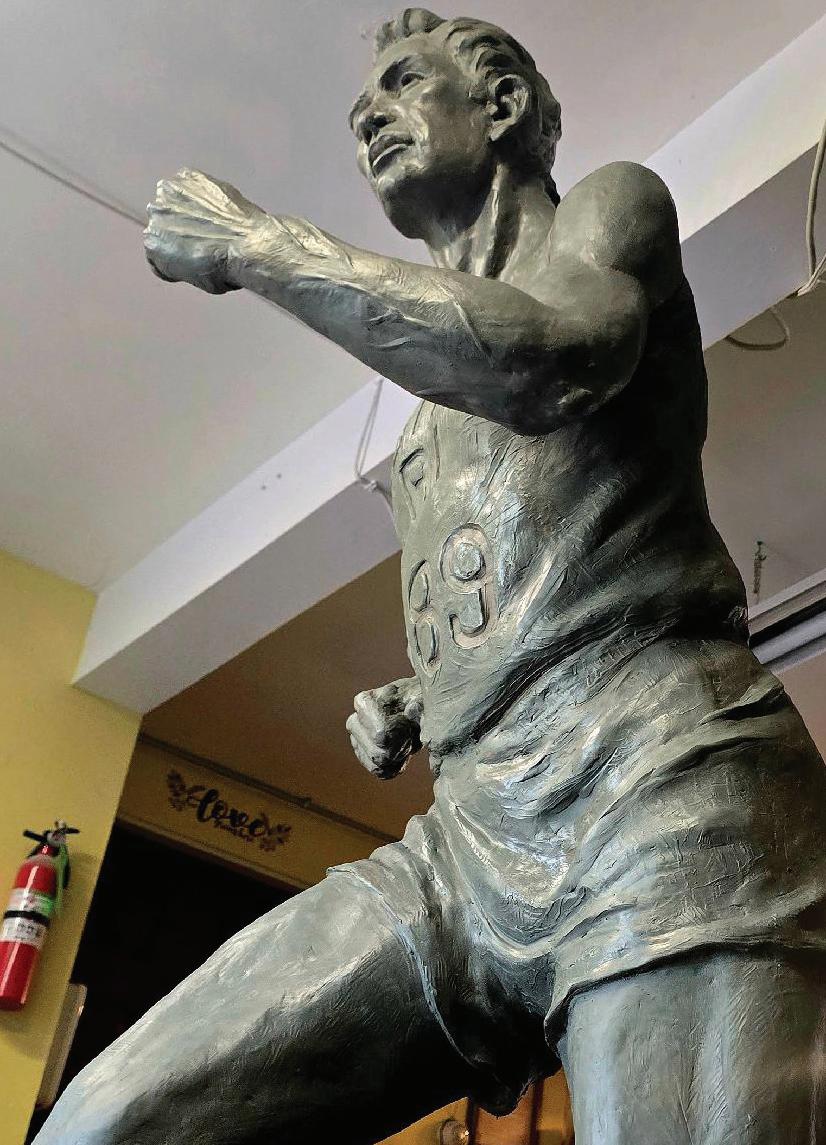
To see how Serena Bates works is a master class not only in fine art but in biology, anatomy, patience, and detail. Her studio is filled with anatomy books, drawings, and photos of muscle groups, tendons, arms, legs, backs, and buttocks. For this project, she has taken numerous photos of her son who shares many of the same measurements simulating Tarzan’s body. Working intensely, Bates acknowledges that this is an arduous process, but it must be exact. “I have to find the life spirit of Tarzan Brown. I need to focus on the portrait of this man.”
Serena Bates is petite in stature, but handles hundreds of pounds of clay, building her skeleton from the inside out; the first step is making a maquette, a fine art term for a small mock-up of a fully realized three-dimensional sculpture. Eventually, she builds a life-size maquette using canons of measurement. She reinforces with steel wire, foam, burlap, and plaster, then clay goes over the armature. The next step involves the delicate trip to the Massachusetts foundry where the mold is actually cast. For this, the foundry workers come to Bates’ studio and actually remove the head and arms, so they are not damaged during the ride.
Creating the mold is a critical step, allowing for the accurate reproduction of the original sculpture in bronze. Once the casting is complete, each section of the sculpture is cleaned, and any seams or vents are closed. Then the individual parts are sandblasted to eliminate any imperfections, welded together, and the surface of the bronze is refined. To achieve the desired patina (color), the metal is heated, and special chemicals are applied, then the sculpture is coated with wax to ensure its durability over time.
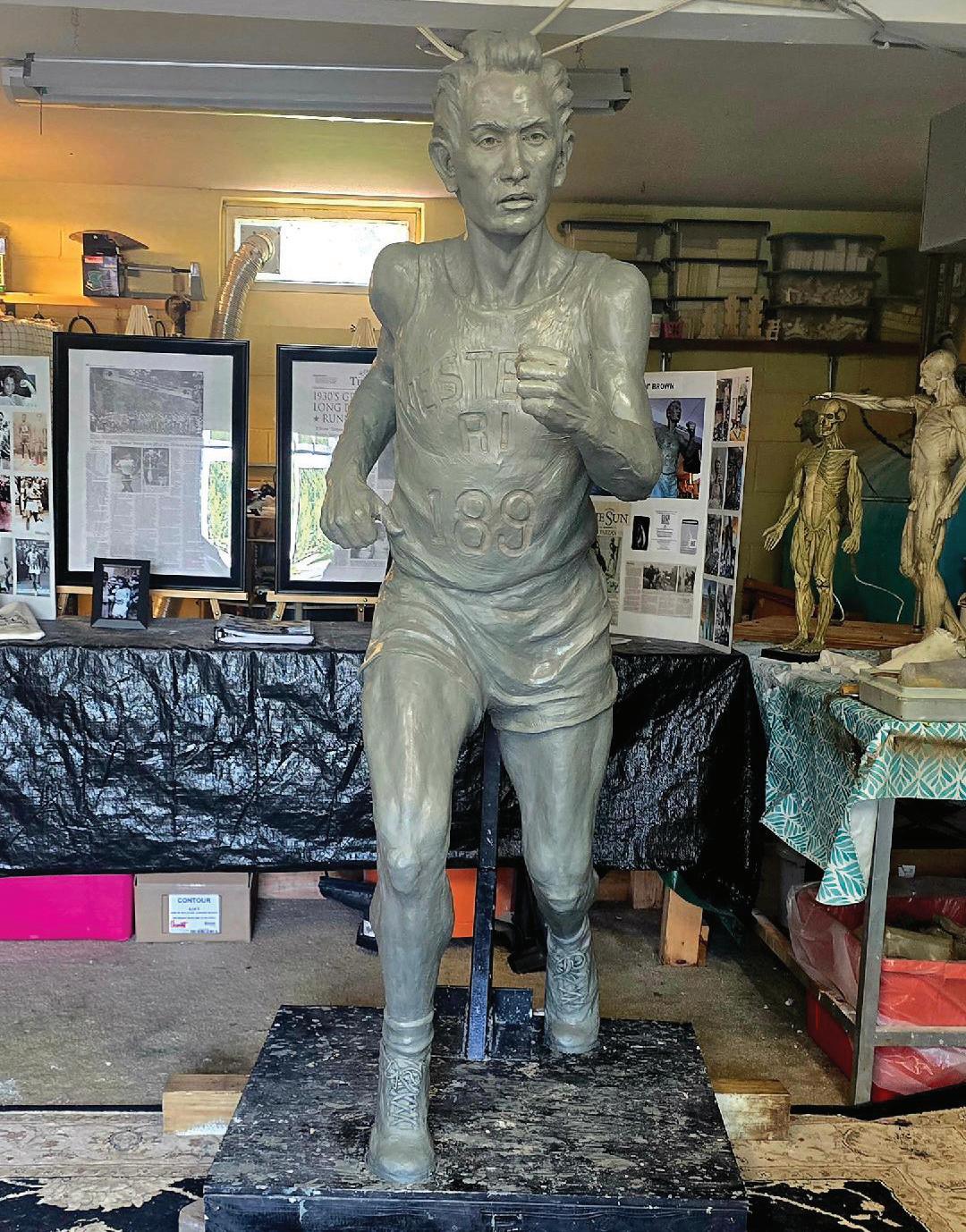
Bates’ work, awards, and full bio may be found at serenabates.com You will be astounded!
The cost of the monument to honor the life and legacy of this Indigenous athlete is estimated at $60,000. Thanks to a vigorous campaign and the wish of so many in New England to keep Tarzan Brown and his extraordinary achievements in perpetuity, 2/3rds of the goal has been reached thus far, but time is growing short for the completion and installation. If Tarzan’s story has taken you to the finish line, the information for a donation in any amount is below.
To contribute to this project, which will give a long overdue and lasting legacy to Tarzan Brown’s life and memory, visit GoFundMe.com and click on the Tarzan Brown Memorial Fund, or send a check in any amount to Summer Gonsalves, 9 Aurora Avenue, Cranston, RI 02905. Make it payable to Tarzan
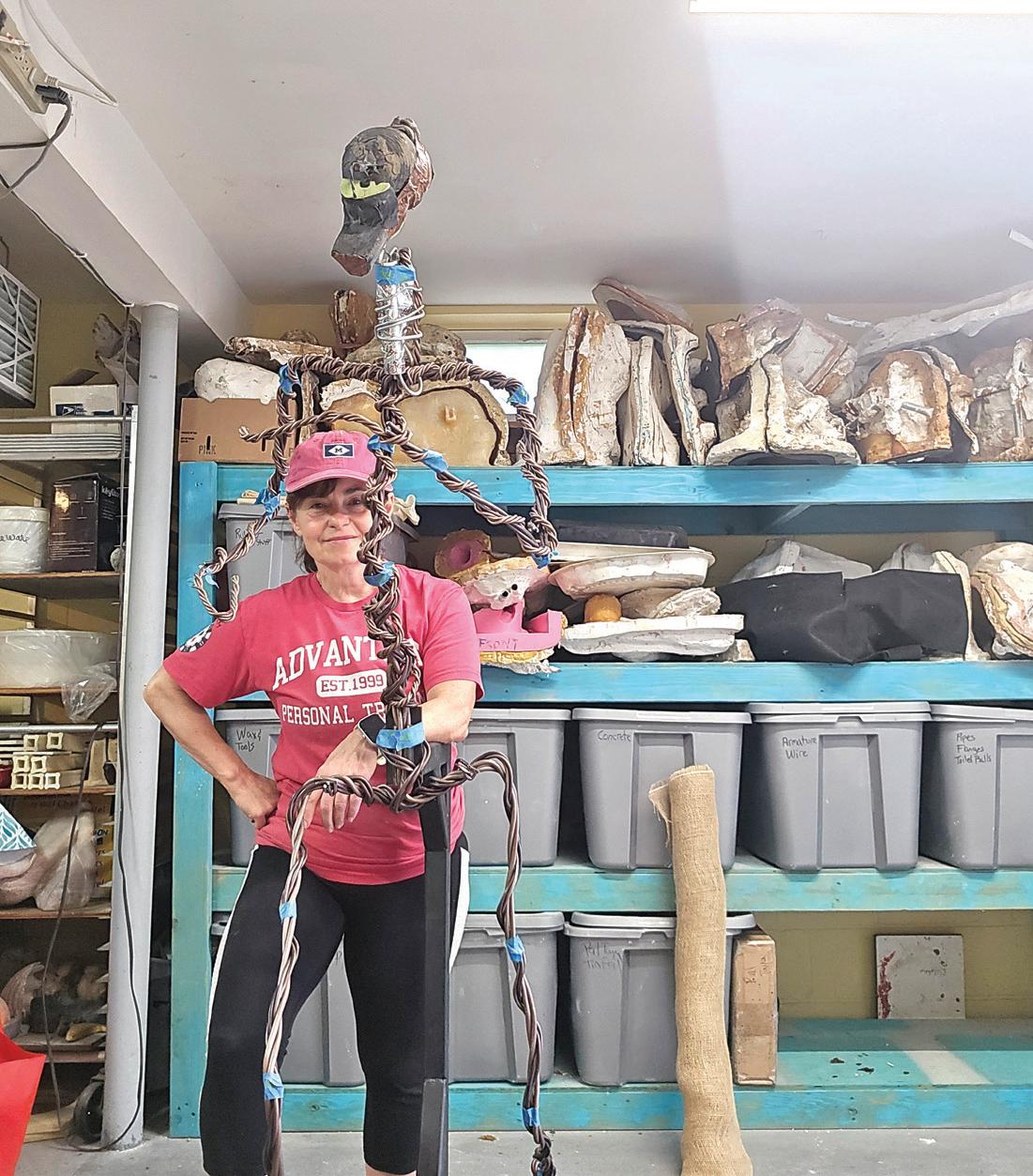





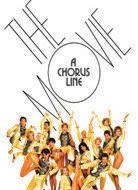

TOAST- THE NO.1 TRIBUTE TO BREAD FRIDAY, 08.08.25 | 7:00 PM
TOAST presents a “feel-good” show that include top hits and brings all the memories flooding b concert truly “rises” to the top as one of the fav audiences everywhere!
s all of Bread’s ack quickly. This orite concerts of
ANCHOR OF HOPE PRESENTS MUSIC FOR LIFE AY SAATTURDAYY, , 08.09.25 | 7:00 PM
Join Mike Donehey and Matt Hammitt for an evening of song and devotion. These two singer songwriters take the stage to share their stories of hope and faith. A FILM SCREENING OF: CHORUS LINE (1985) IN PARTNERSHIP WITH THE GOODSPEED TUESDAY, 08.19.25 | 7:00 PM
Based on the Tony Award winning play which also won the Pulitzer Prize. Auditionees for a Broadway chorus line reveal their innermost thoughts and emotions in song and dance before a hard-boiled director. Reserve your FREE SEATS today! Sponsored by: Breezeline, Liberty Bank & , P o egan, Sheehan & Monac ondr y w C Coonwaay, , L re coo, P.C.
HARMONY Y FOR HOPE BENEFIT CONCERT OF COMMUNITY FOR HAITIAN Y CENTER F GREATER NORWICH SATURDAAY Y 08.30.25 | 7:00 PM An inspiring evening of Haitian music and cultural celebration.



artists from
covers including:
Olhman, DukeRob


